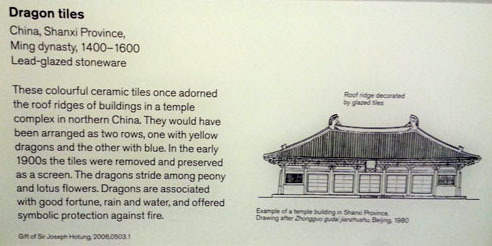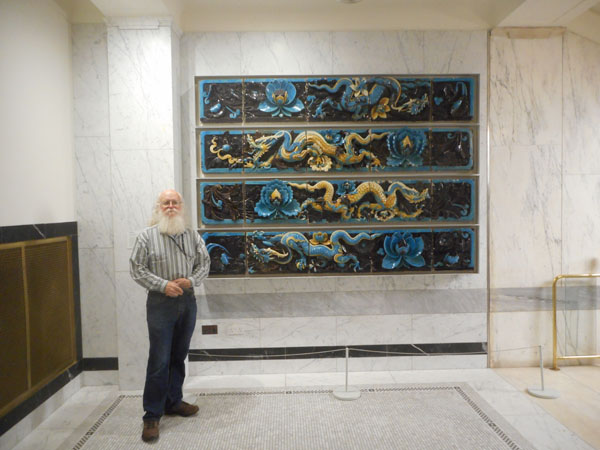London, Part 7
Main Museums (most visited first):
Victoria & Albert Museum
(arts and crafts through time)
Natural History Museum
(geology, biology)
Science Museum
(modern technology)
British Museum
(archeology)
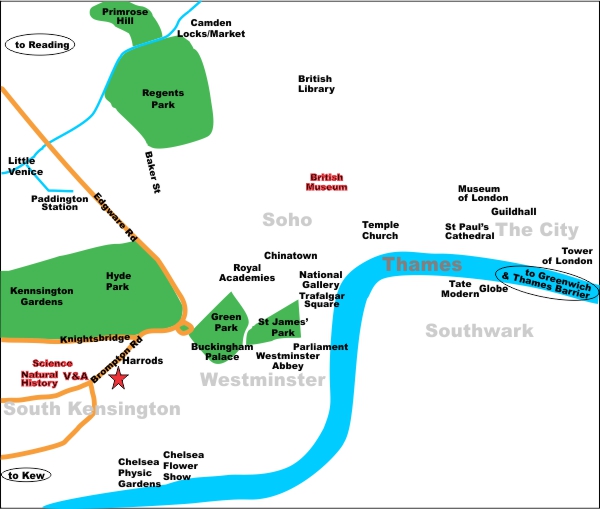
Victoria and Albert Museum:
(search its collections yourself)
There is the usual display of Greek and Roman artifacts carted off wholesale, similar to the Louvre and the British Museum, but fewer. In part this is due to the collecting goals of the various museums. Originally the "Museum of Manufactures", the V&A is more concerned with the processes and evolution of creating art and design, rather than mere acquisition. Mileposts along the way, instead of grabbing the entire highway.
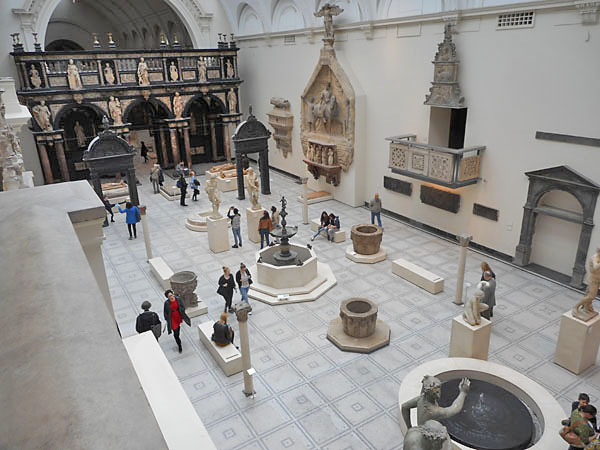
Hence there are the Cast Courts instead of originals. Two rooms full of reproductions of famous pieces from all over Europe so that British artists could learn from the masters without leaving home.
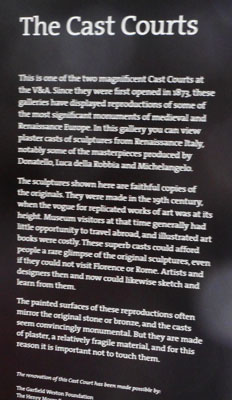
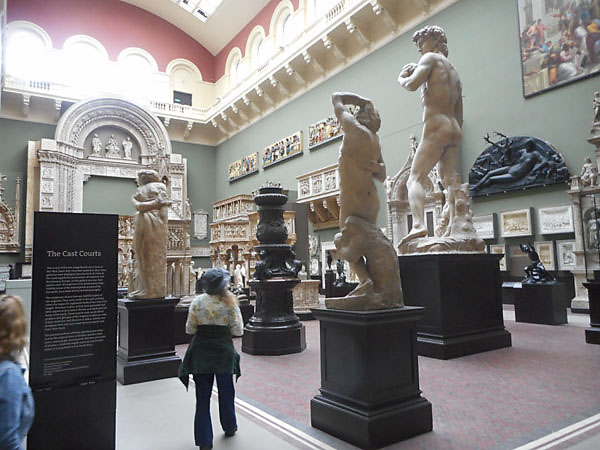
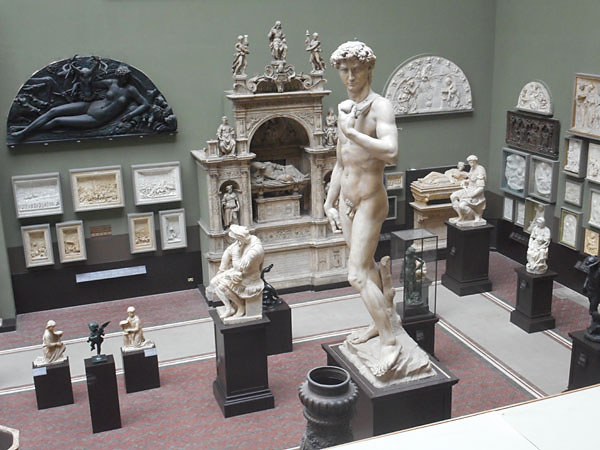
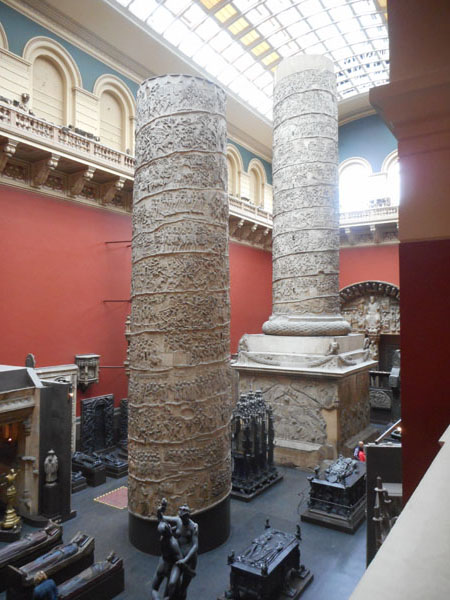
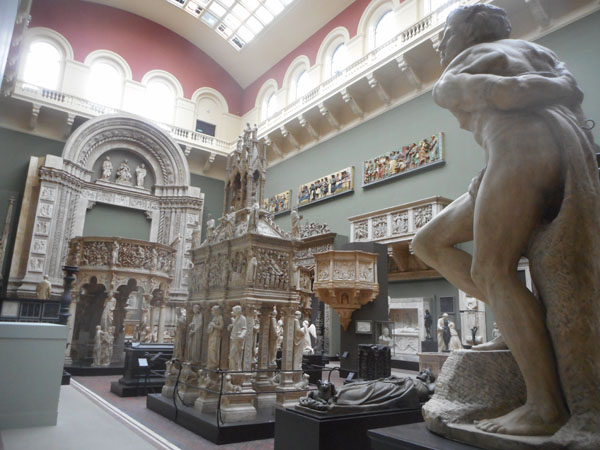
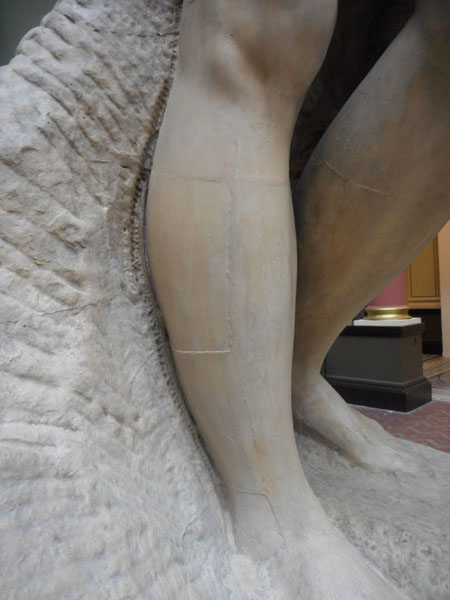
They also allow the student to travel in time: This is a cast of a pulpit which was broken up and the pieces used in other places. The cast was well-researched and the pieces reassembled to present the pulpit in its original form.
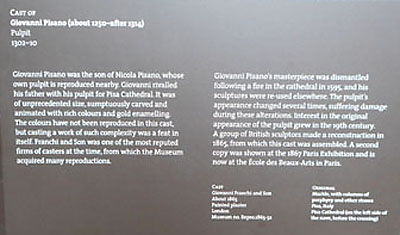
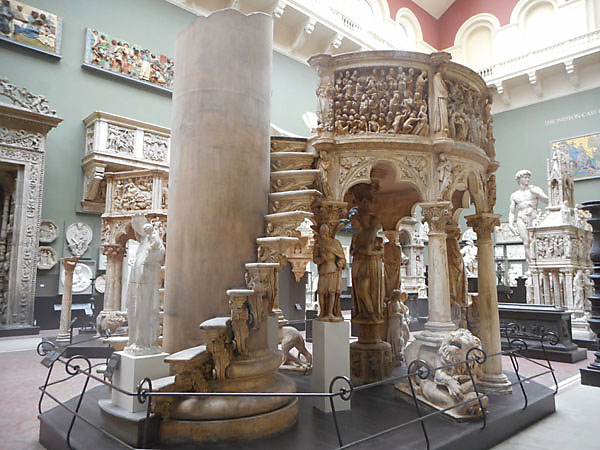
Not all of the displayed pieces were plaster...
these copper doors were created by coating intermediate plaster casts.
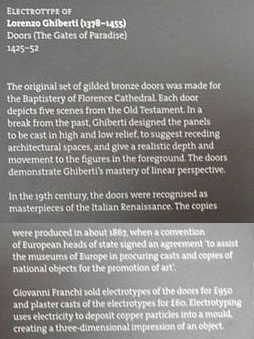
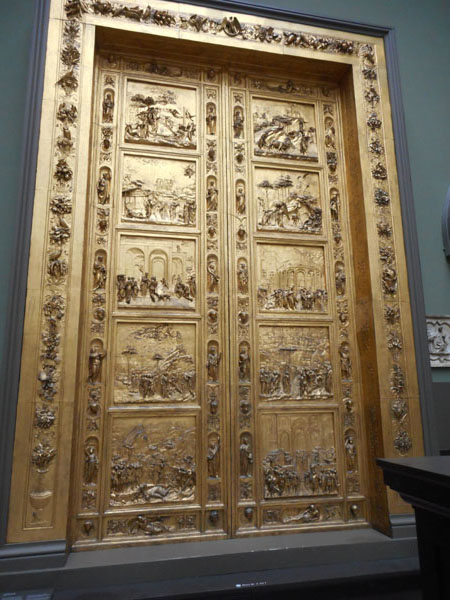
Beyond the cast courts there are groupings of artistic works by region:
Europe
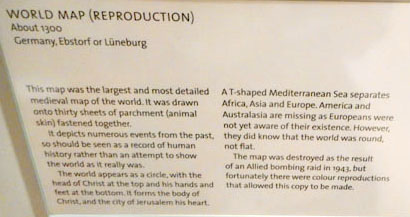
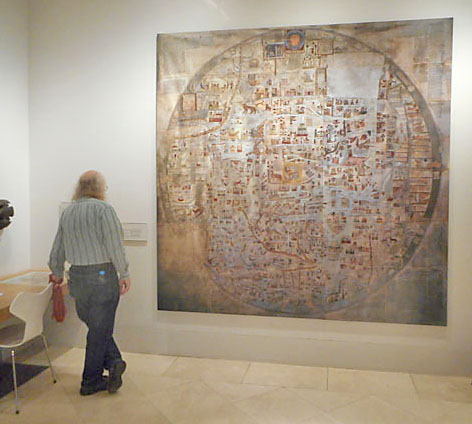
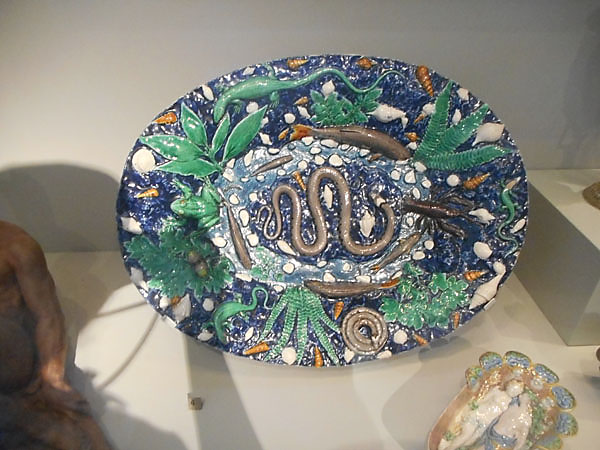
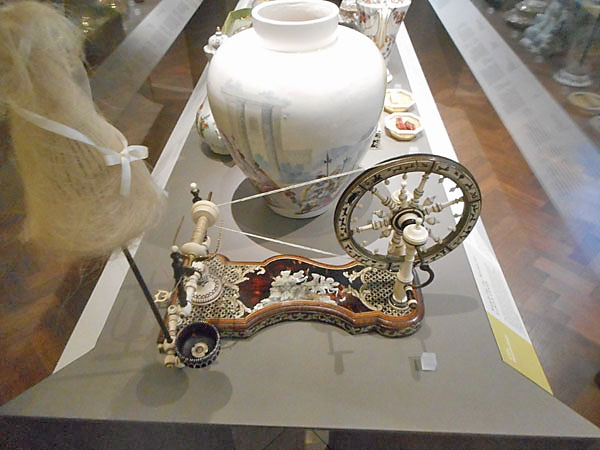
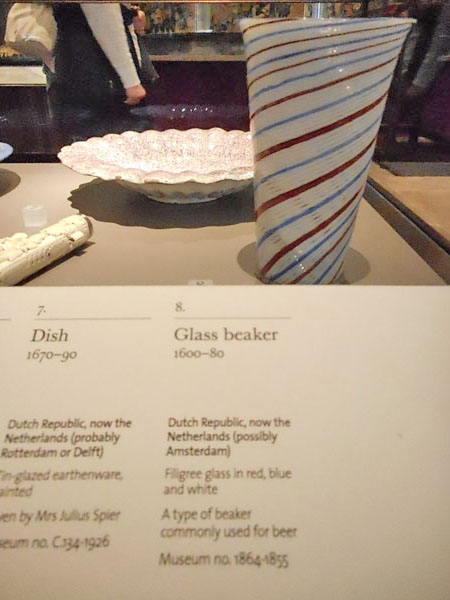
We saw so many ornate virginals. This one is decorated with thousands of bits of glass.
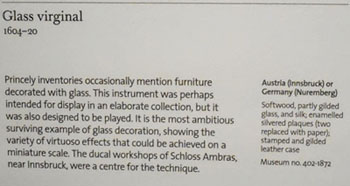
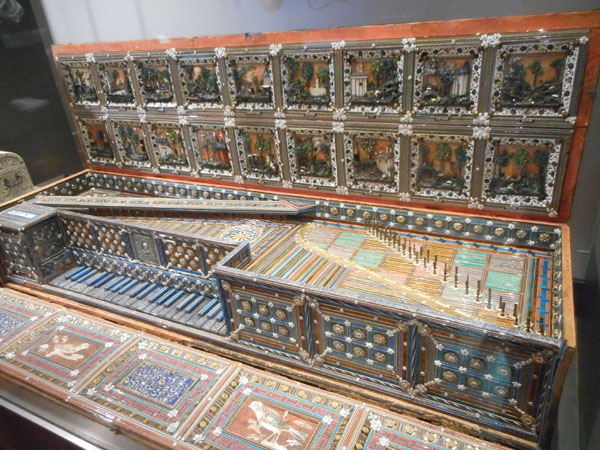
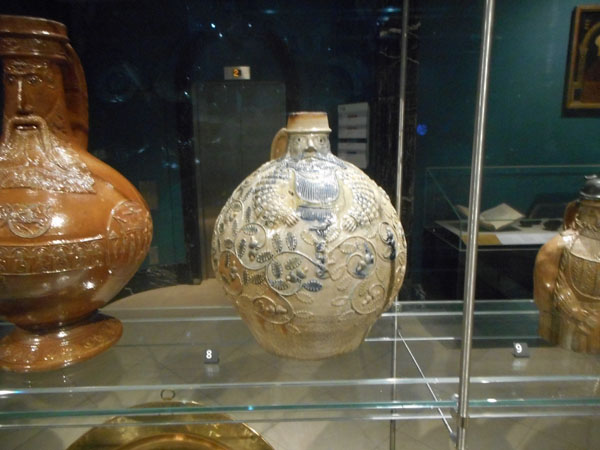
Many of the rooms were very dim to avoid further fading the cloth (and of course they didn't want you to use flash).
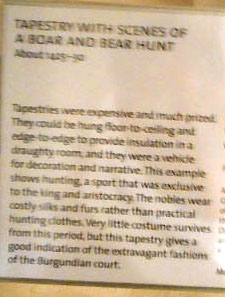
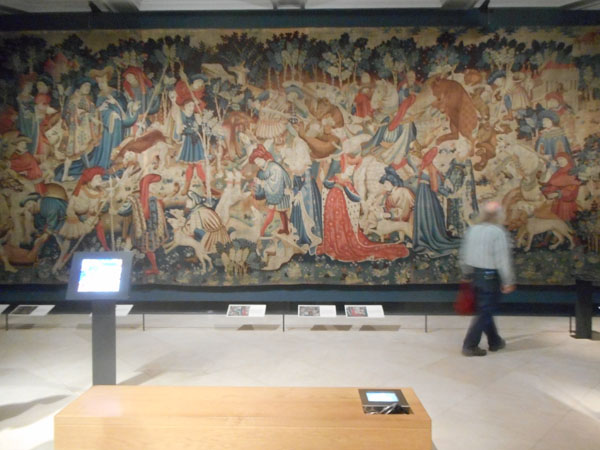
And other rooms were dim to show off the stained glass
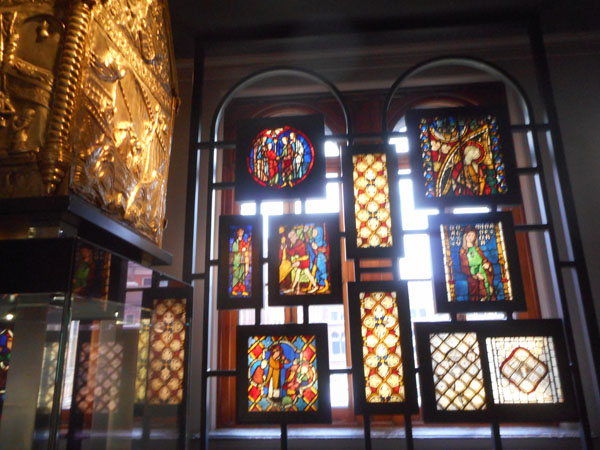
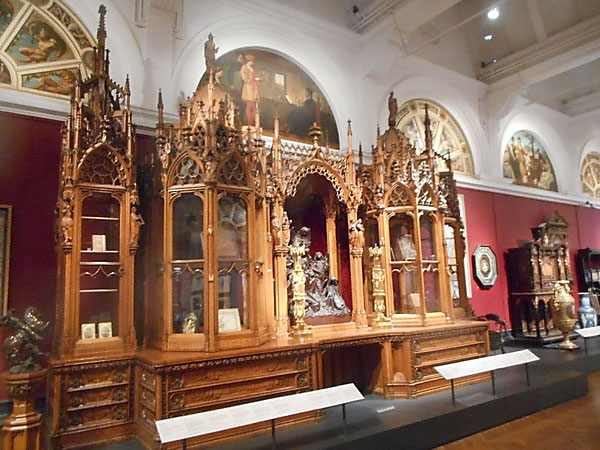
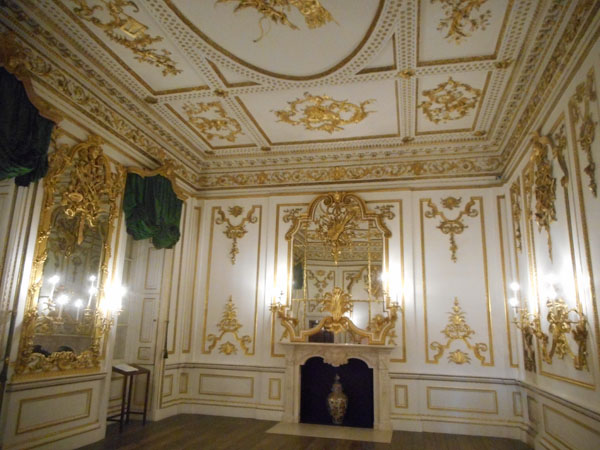
The Middle East:
For weeks we could only peer into this room from above while the display was being put together. But it opened just before we left town.
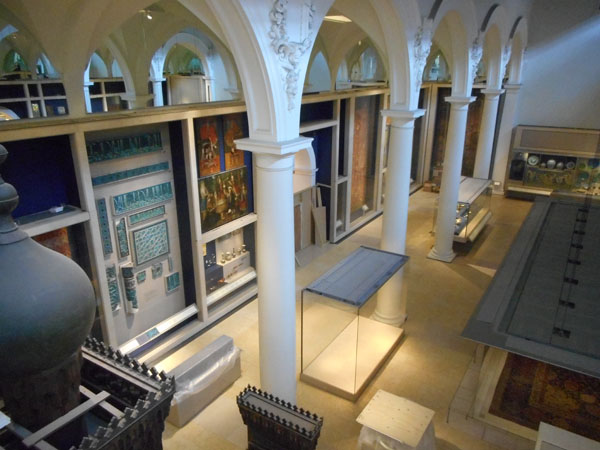
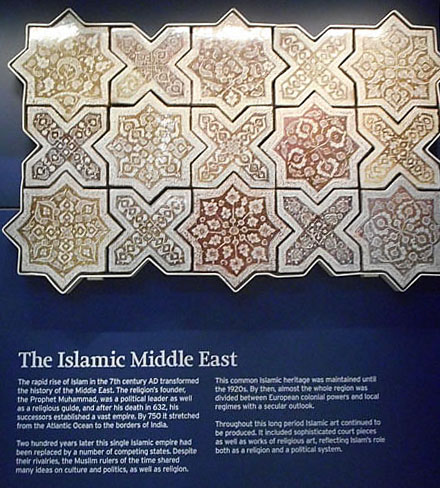
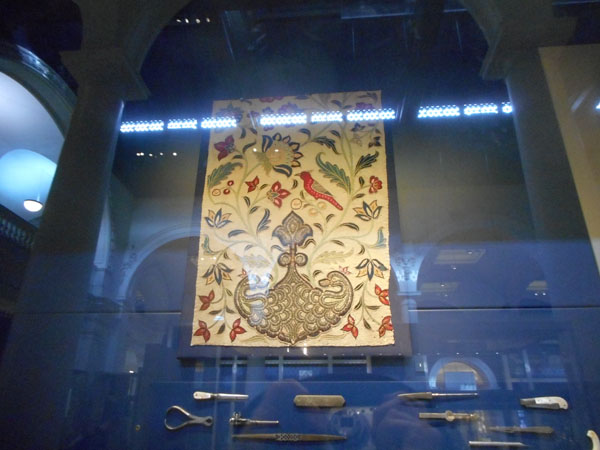
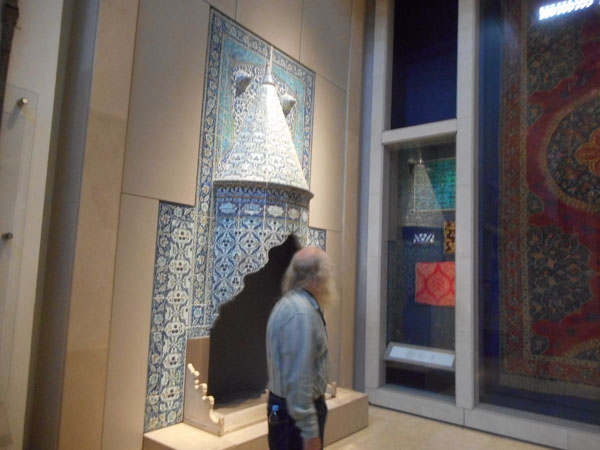
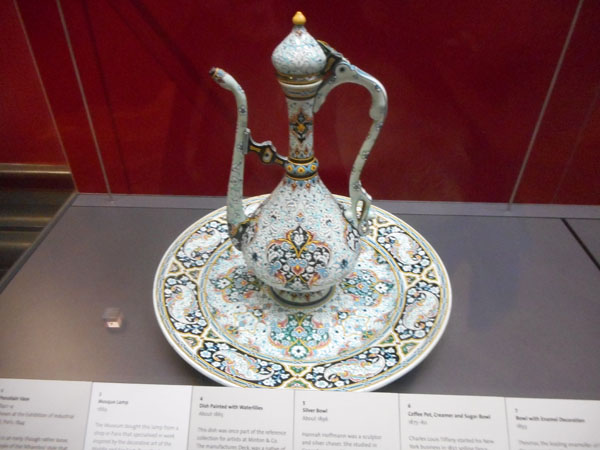
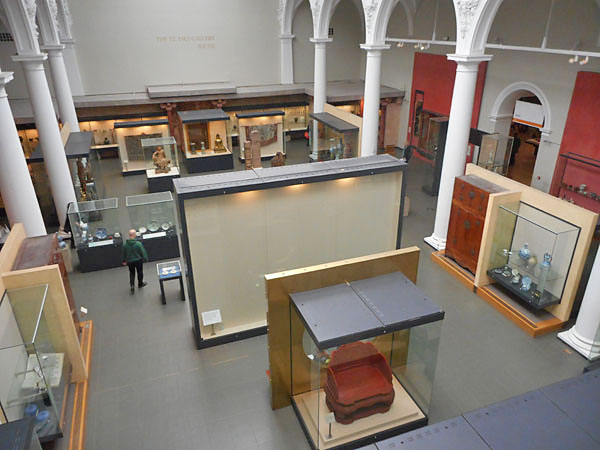
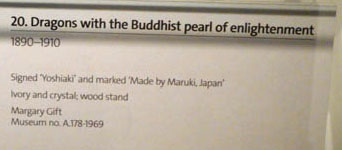
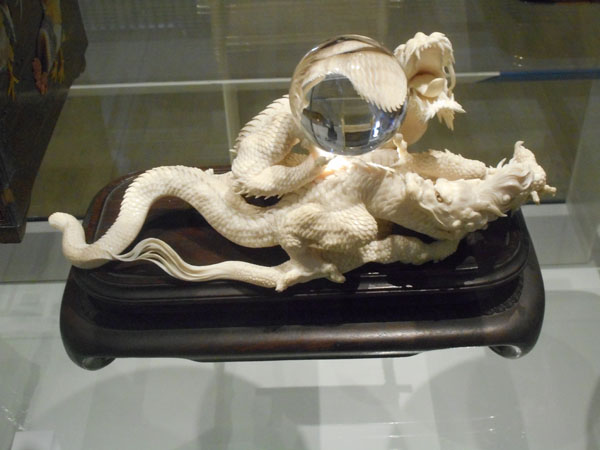
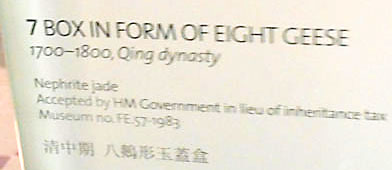
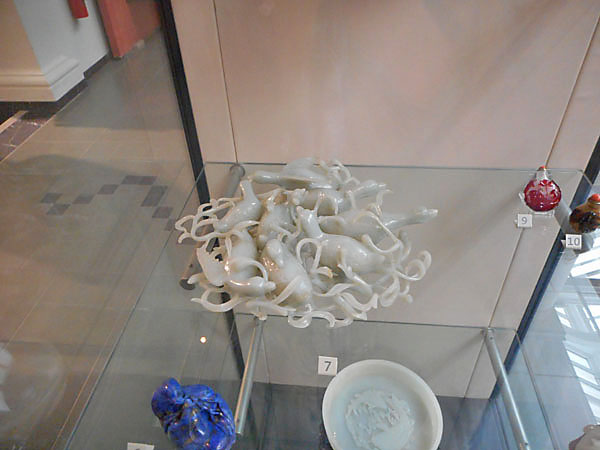
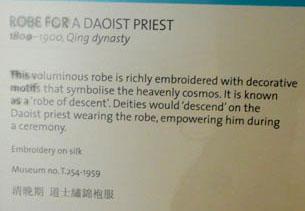
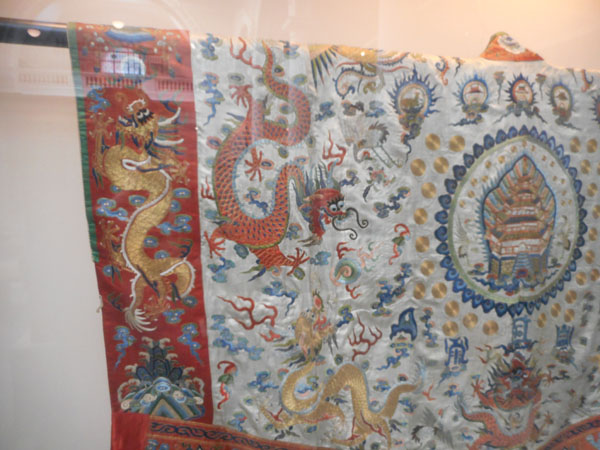
This incense burner was made for the Great Exhibition of 1851.
It was an Asian idea of what would impress Europeans. It still does.
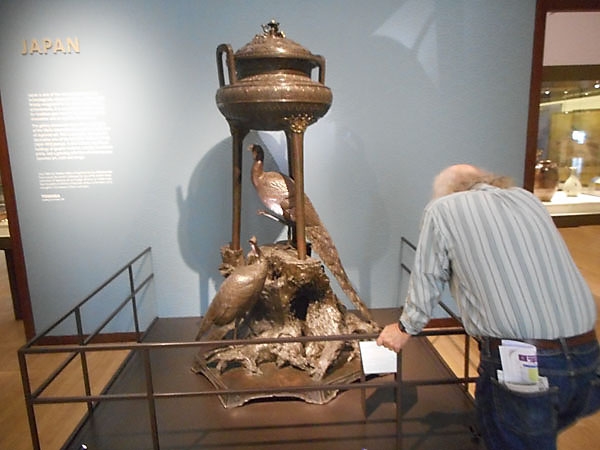
Twelve Inrõ representing the months of a year... elegantly fashioned small containers Japanese men hung from their kimono's obi (belt), in lieu of pockets.
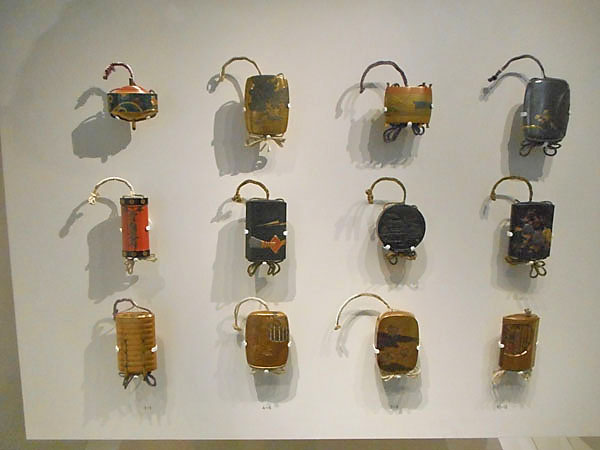
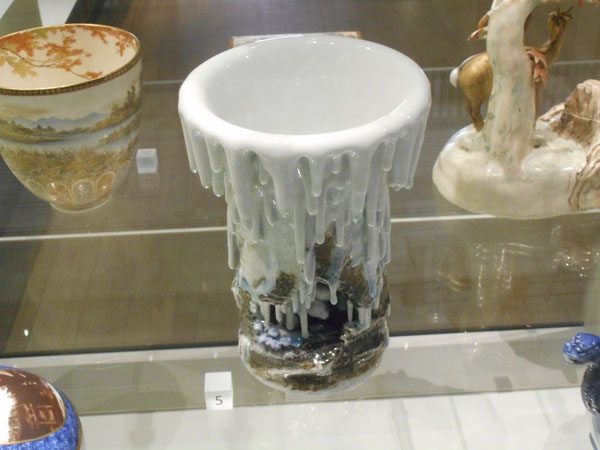
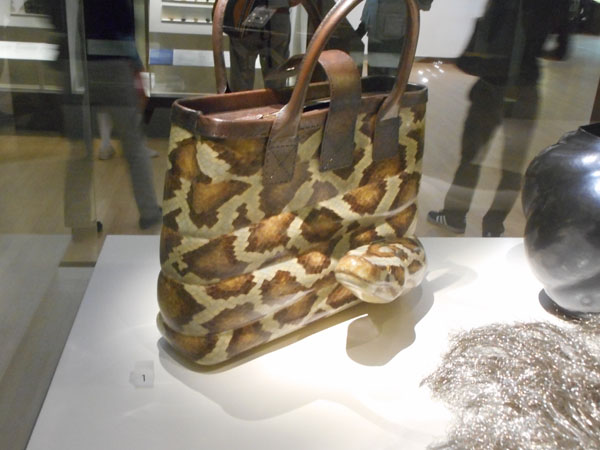
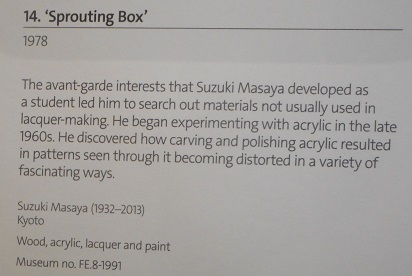
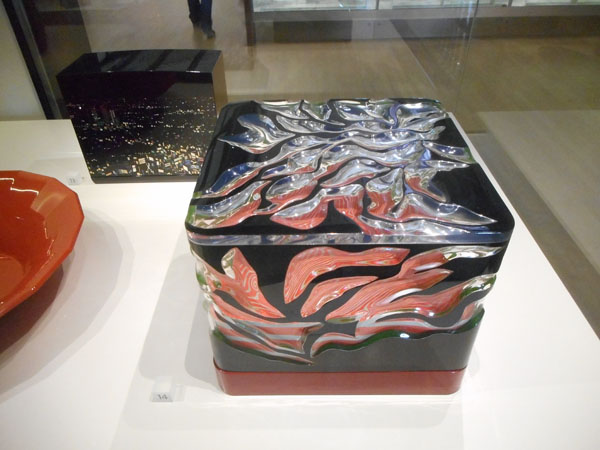
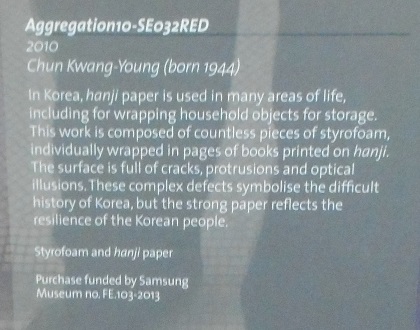
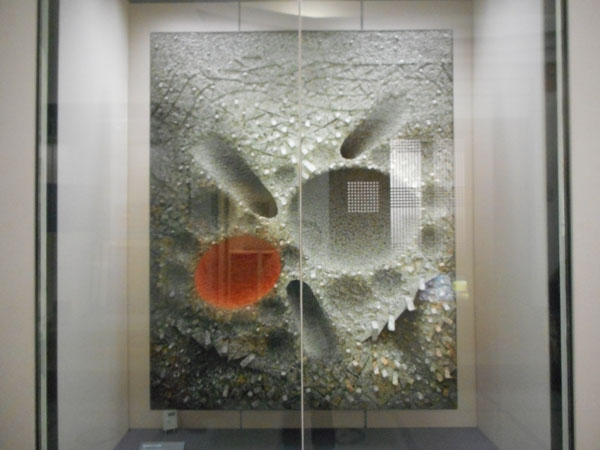
As the description wrote, each individual sugar-cube-sized block is individually wrapped in paper. It reminds Dick of looking at a surface of lava... gift-wrapped.
The entire work is over 5 feet tall and 4 feet wide. The photos don't do it justice at all.
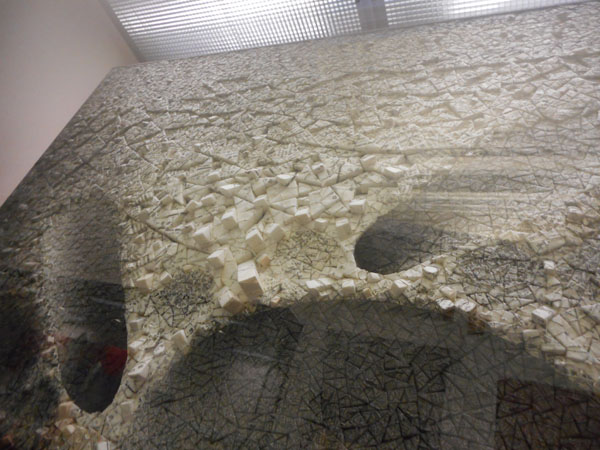
The stairs weren't too shabby, either.
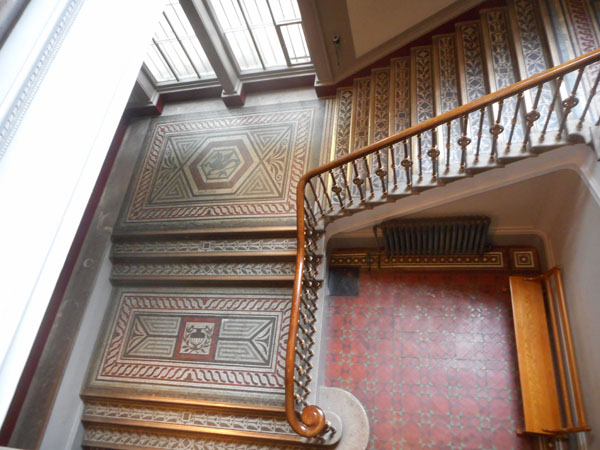
There's a mirror on the back wall so it isn't really quite so long as it appears, but it's still very impressive. We spent several hours in just this one room.
Notice the pattern of light on the upper balusters... we'll get back to that
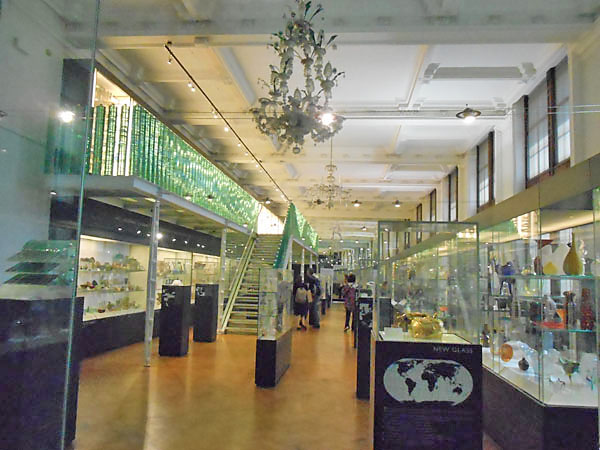
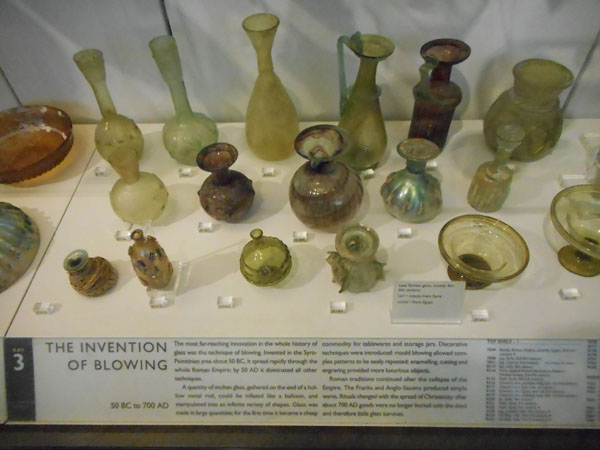
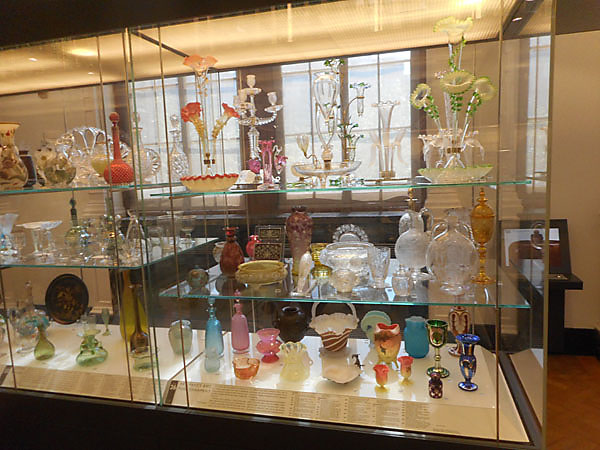
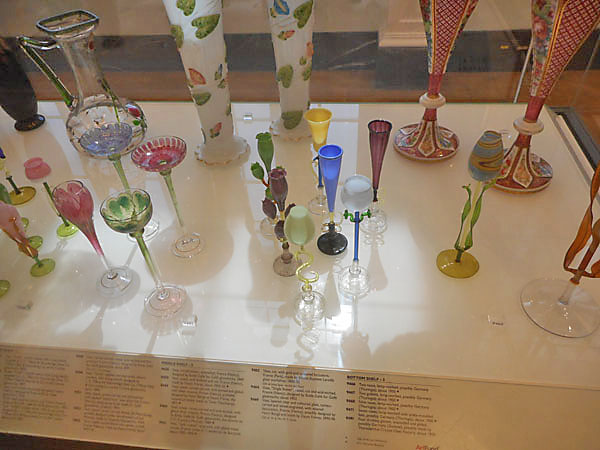
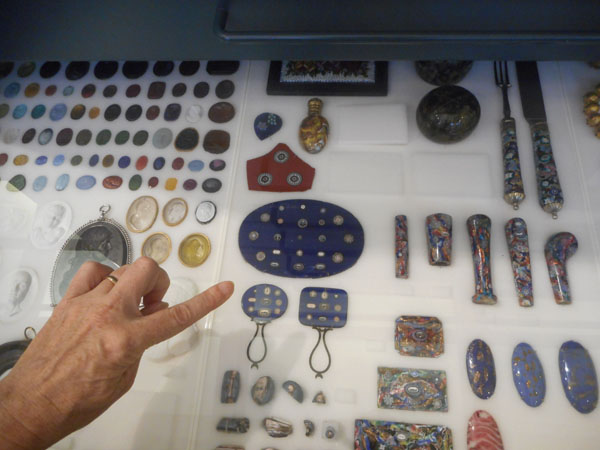
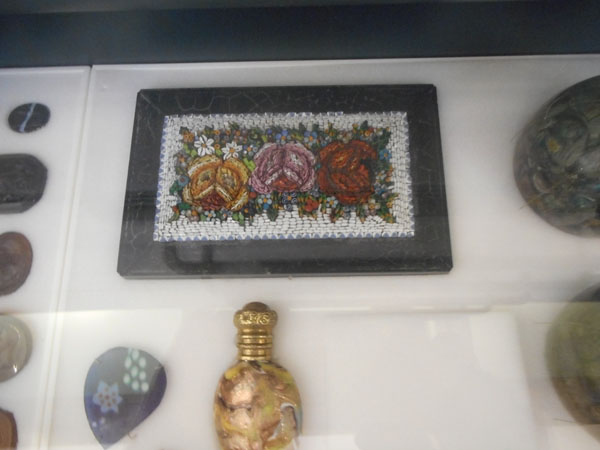
Dick spent an embarassing amount of time trying to locate the description of the center piece in the room's computer terminals' access to the V&A's database.
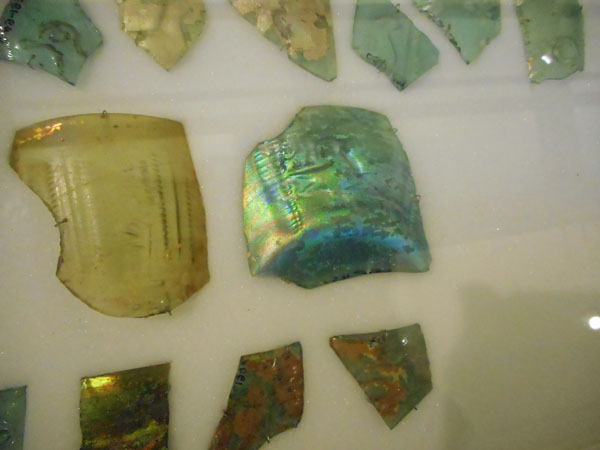
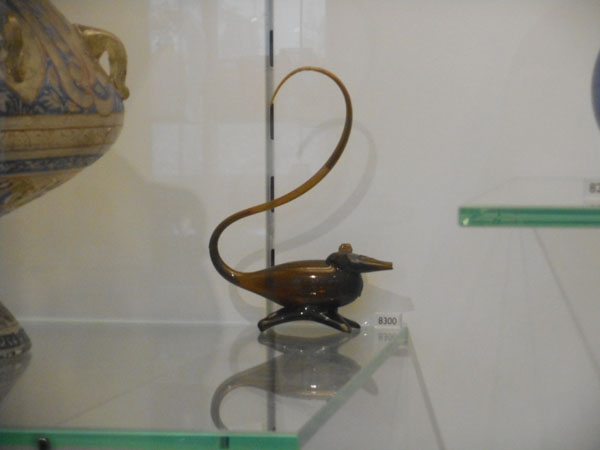
And the illusion of depth in this bowl.
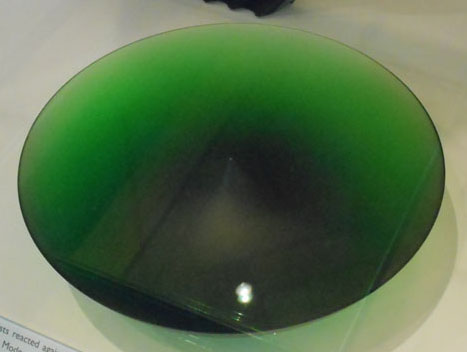
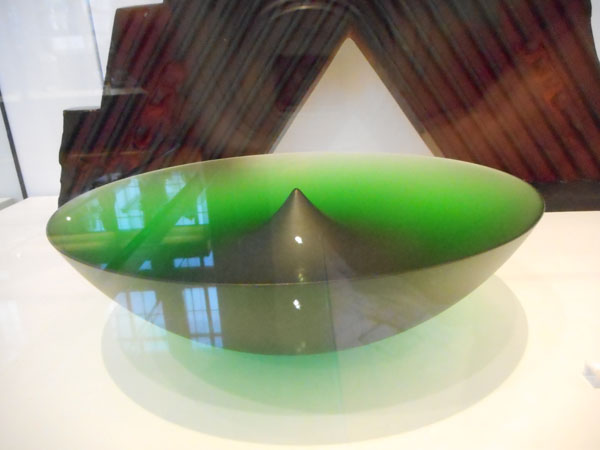
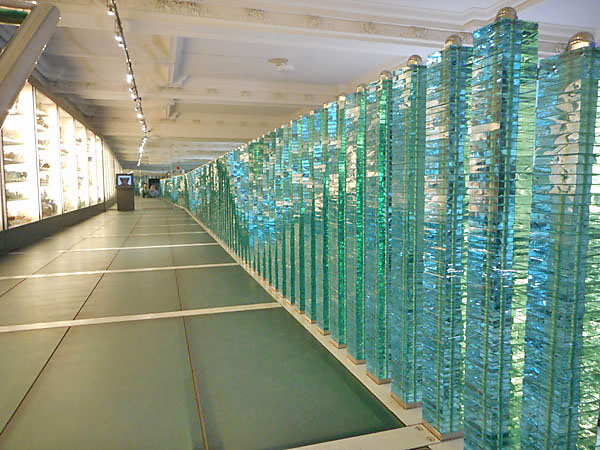
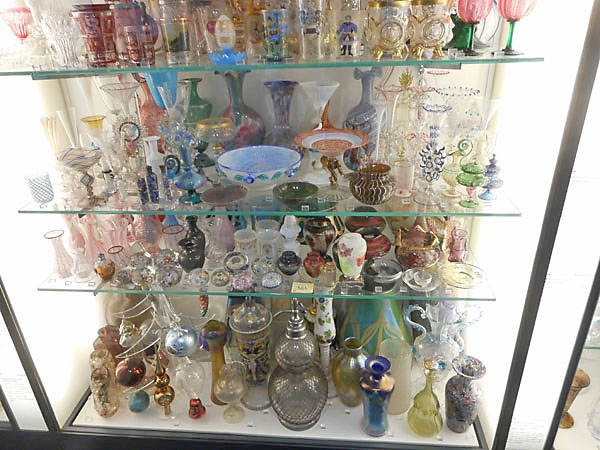
The next room was full of modern work. These are just a few of the fine works displayed.
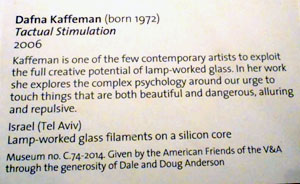
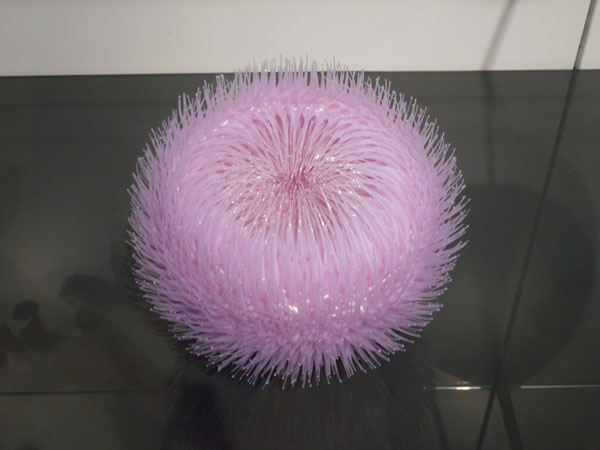
Toots Zynsky's Dondolante Serena
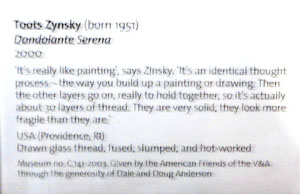
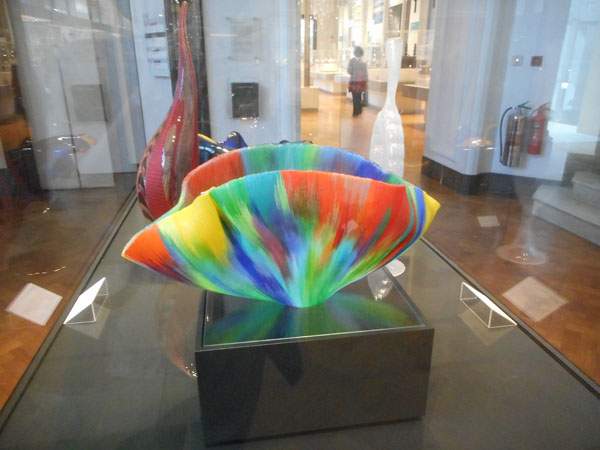
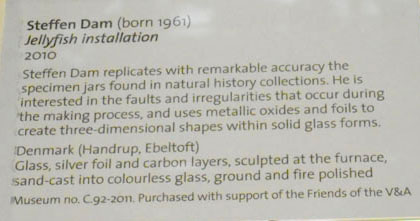
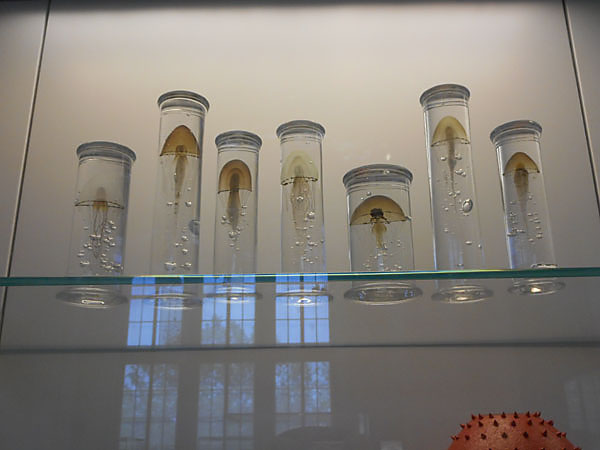
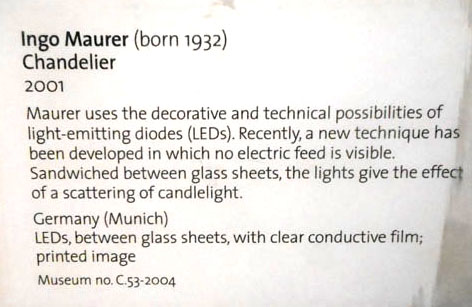
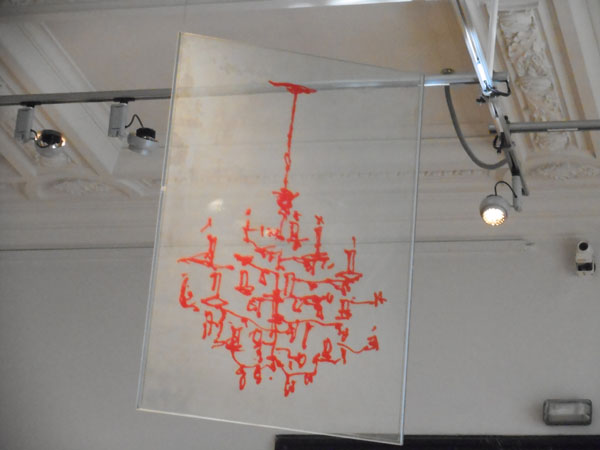
Then there are the rooms of ceramics.
(that entire cabinet is a warren of drawers)
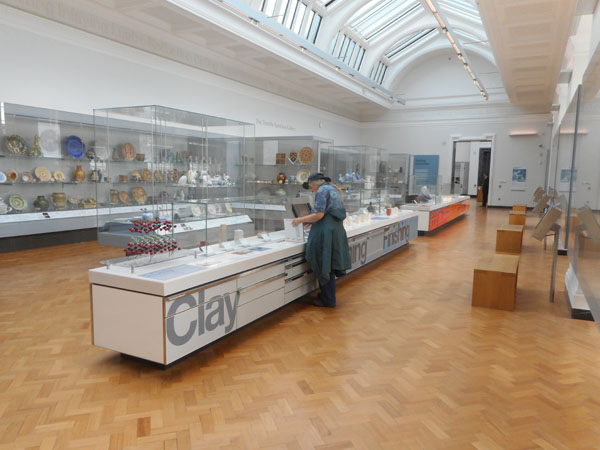
There's a vary well thought out educational display in the center of the first room
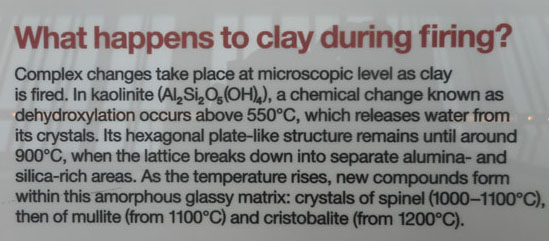
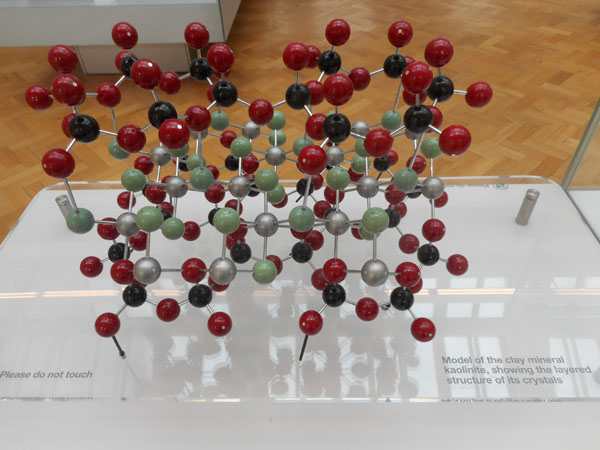
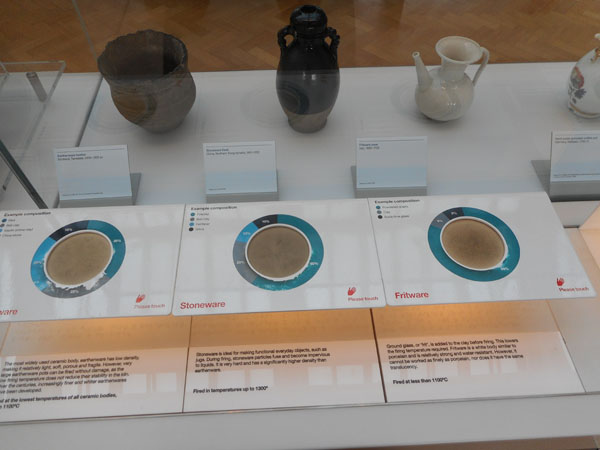
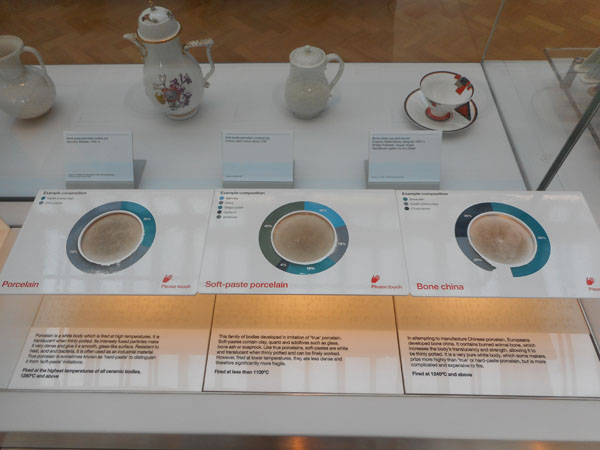
Another display was on glazes and formulas.
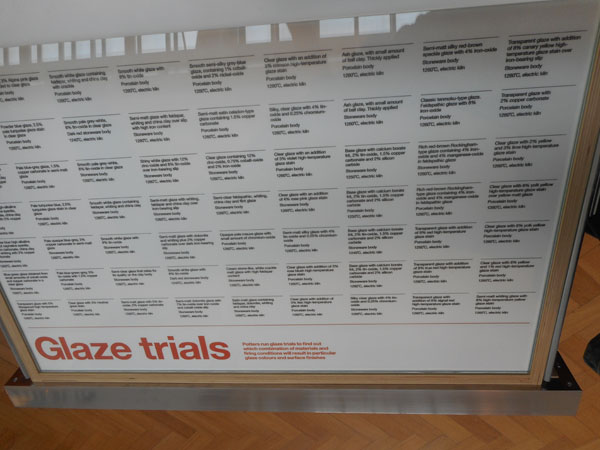
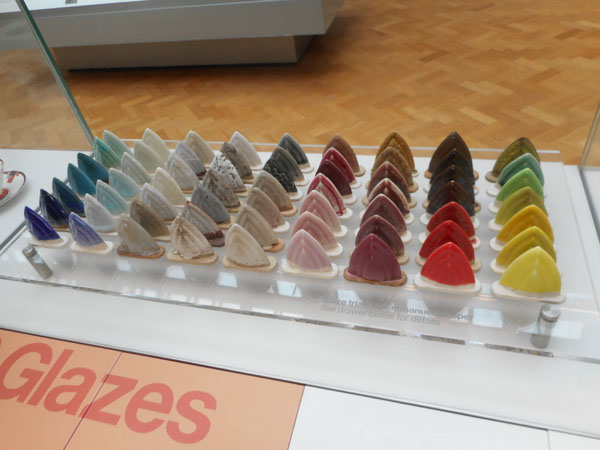
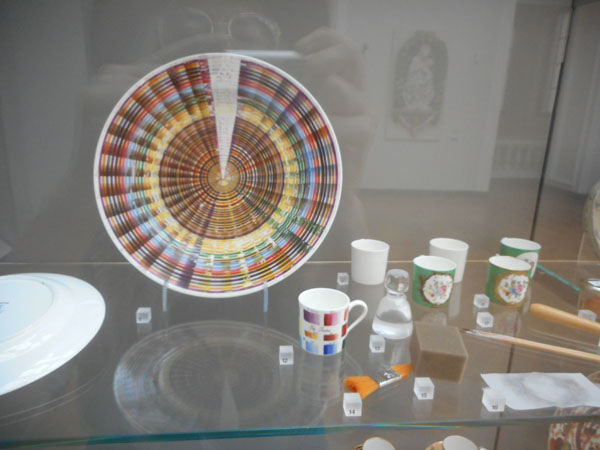
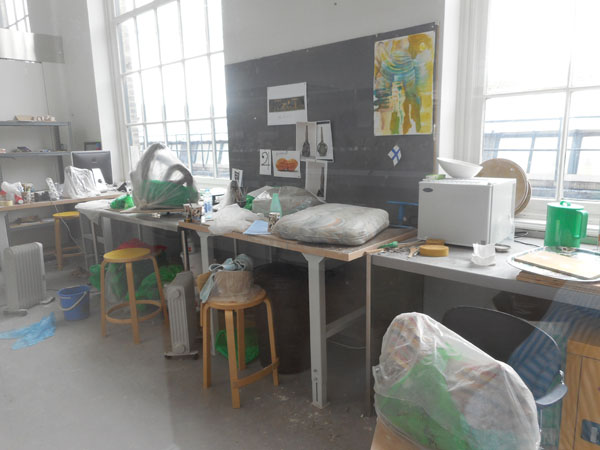
The collection started with some of the earliest ceramics (well ... this one is really powdered quartz, not clay, but faience is generally considered part of "ceramics" rather than "glass")
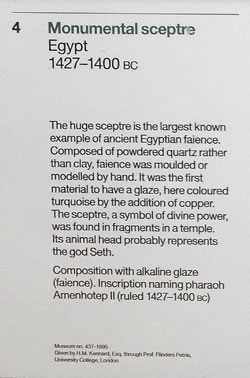
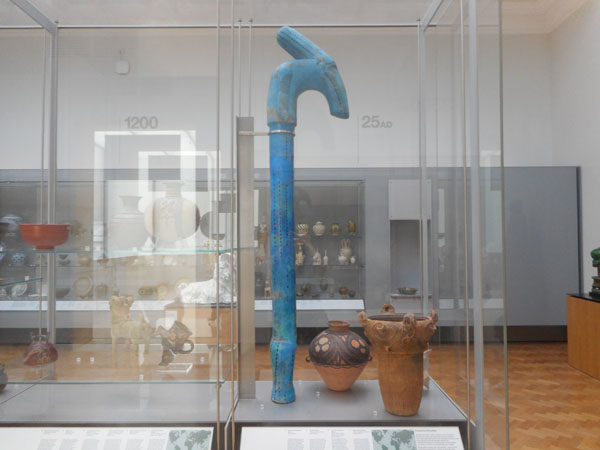
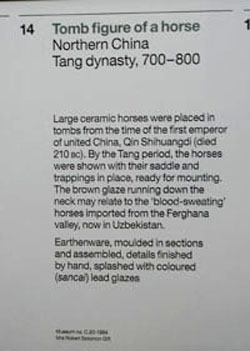
(It does take a team of horses to drag Dick away from early Chinese ceramic horses)
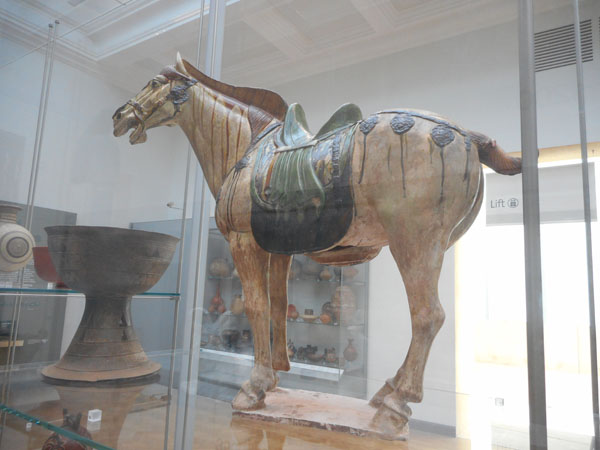
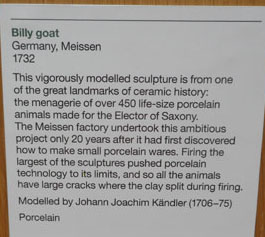
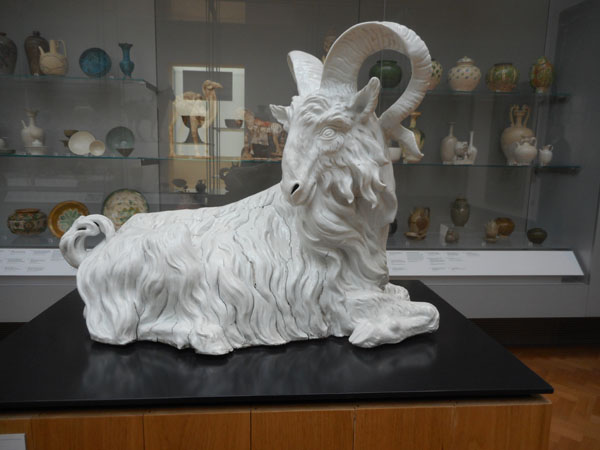
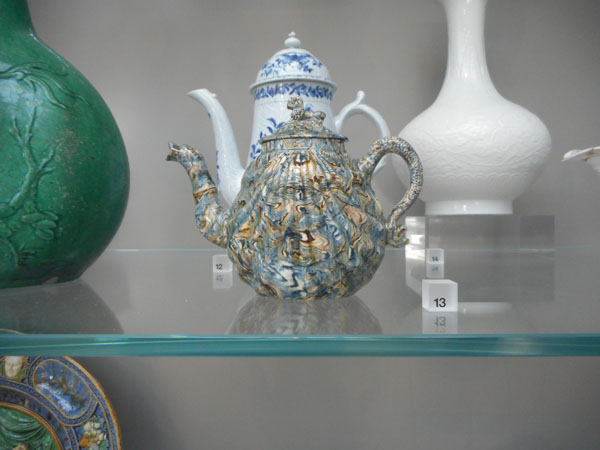
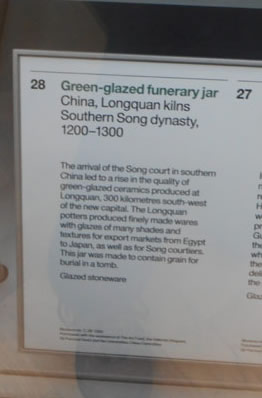
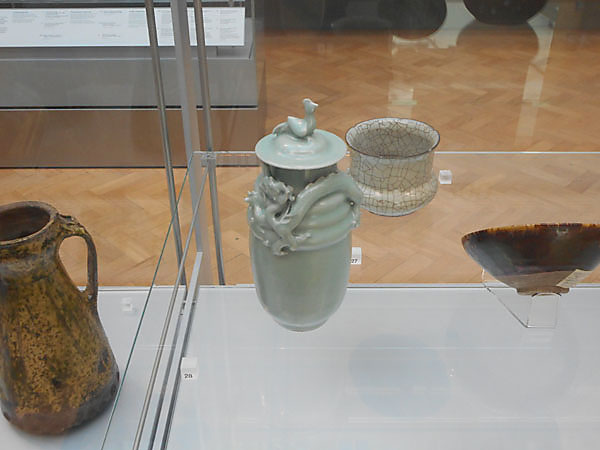
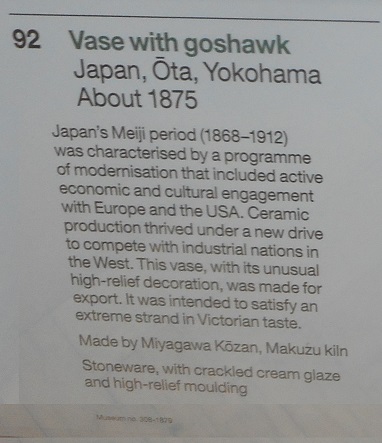
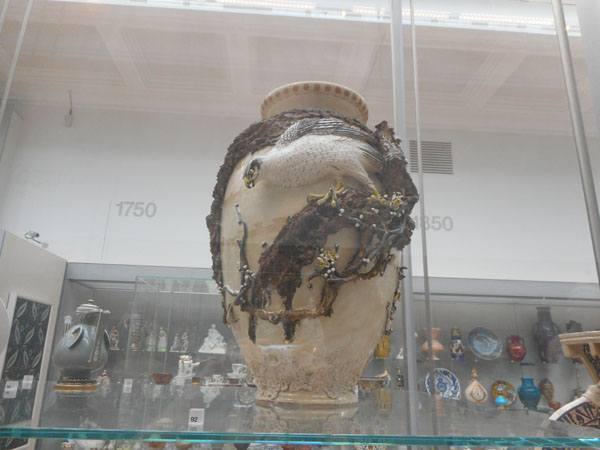
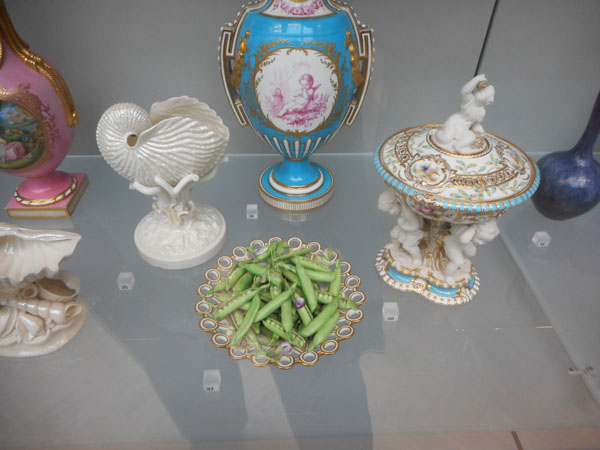
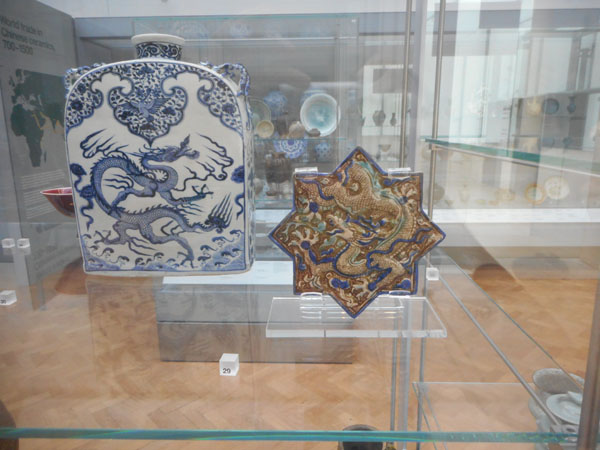
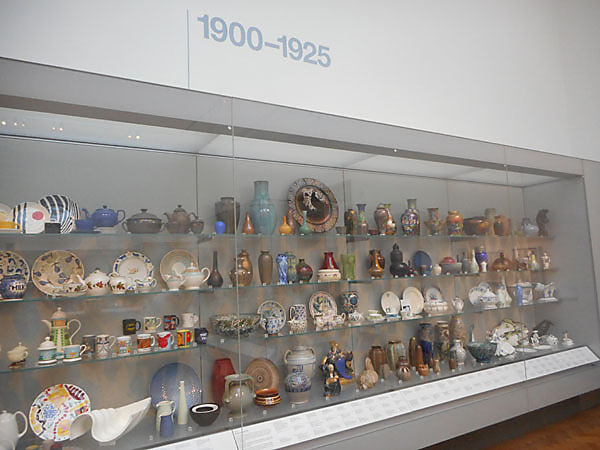
There was the room of current artwork:
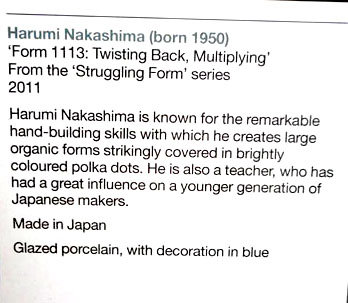
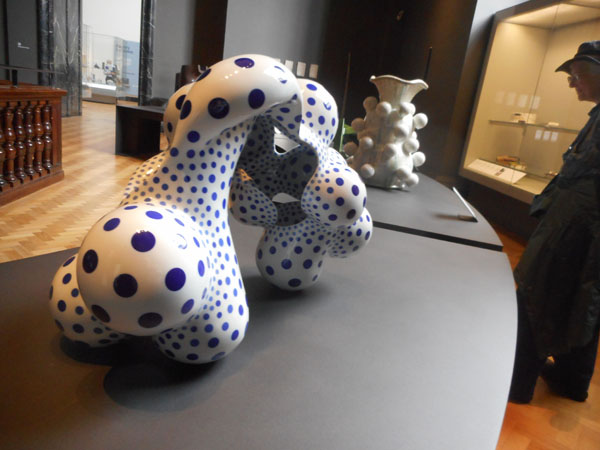
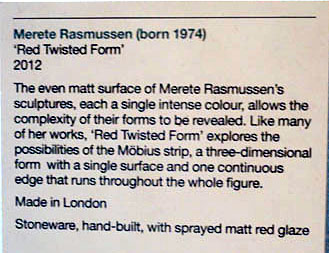
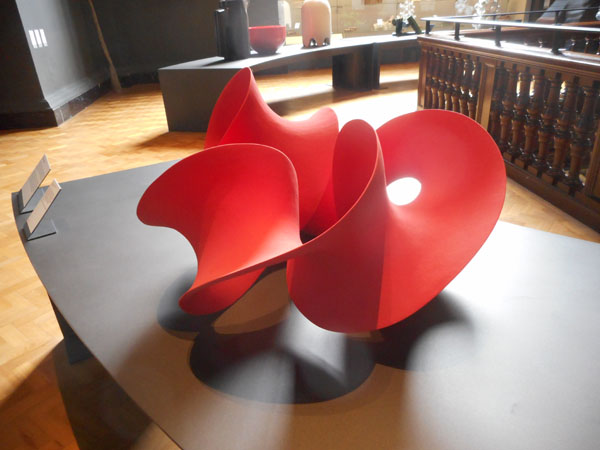
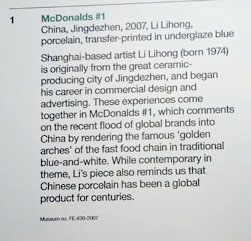
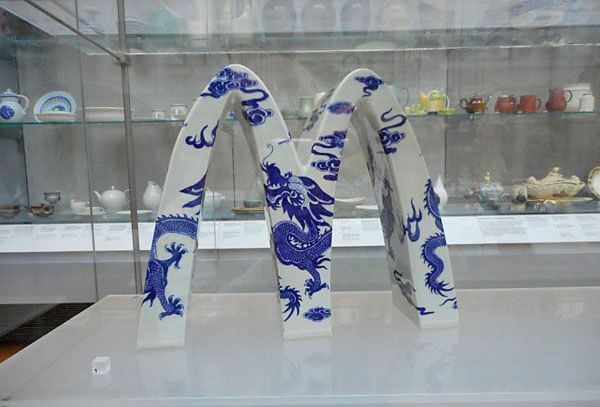
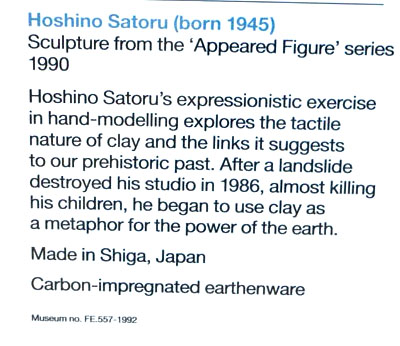
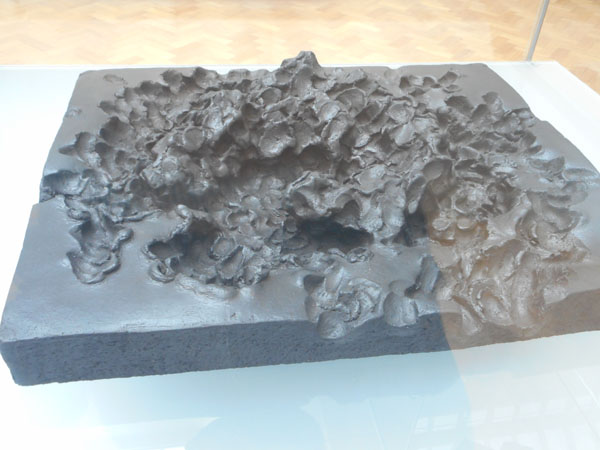
(Ooooo! )
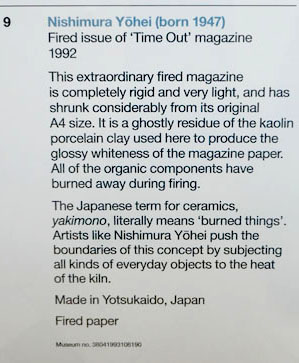
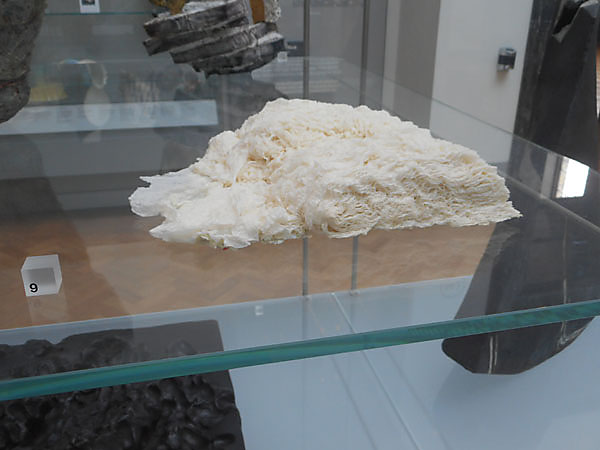
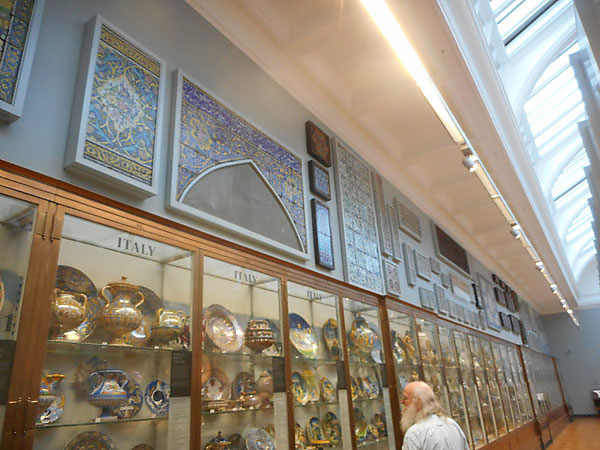
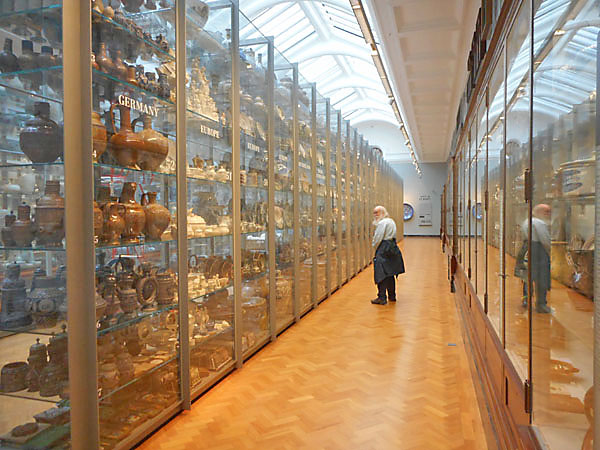
The furniture exhibit was the most polished.
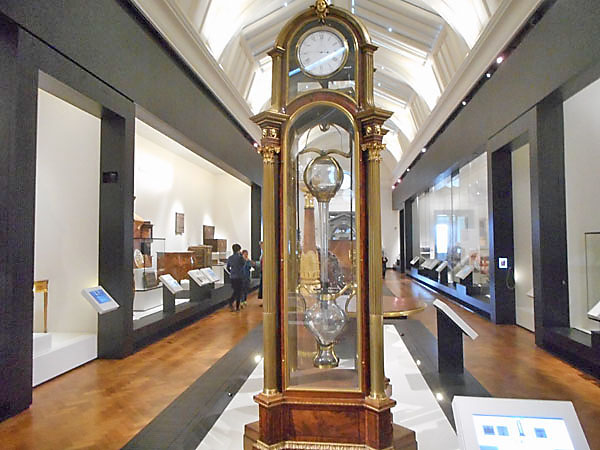
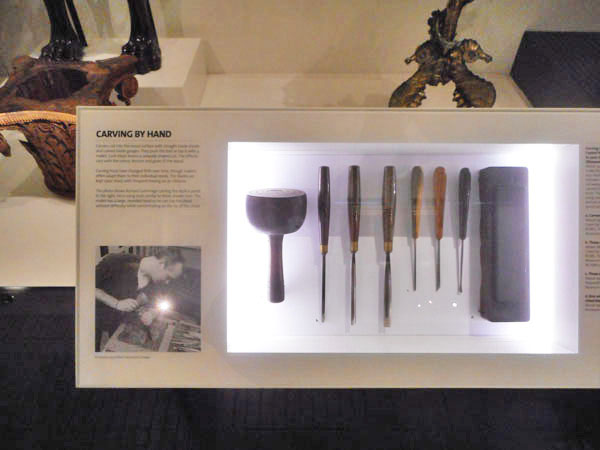
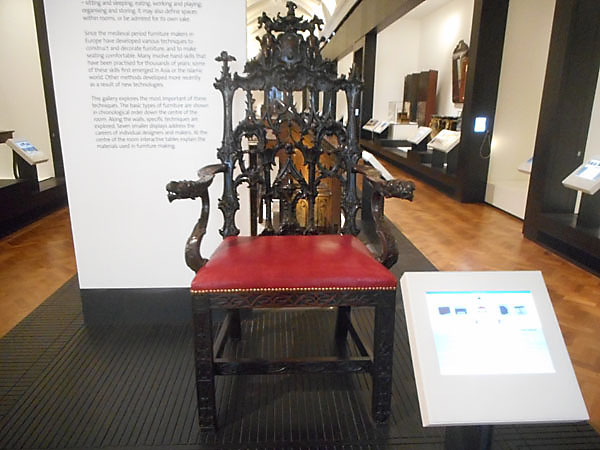
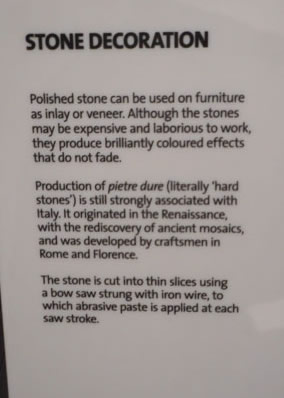
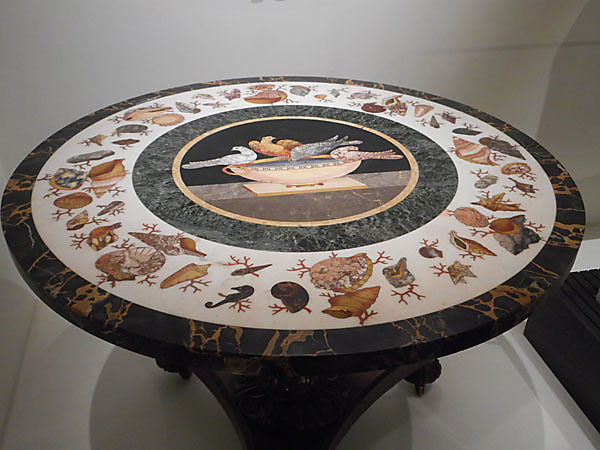
Plus computer screens giving details of each piece:
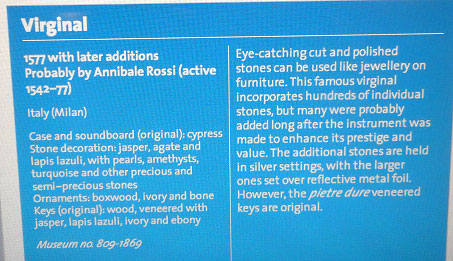
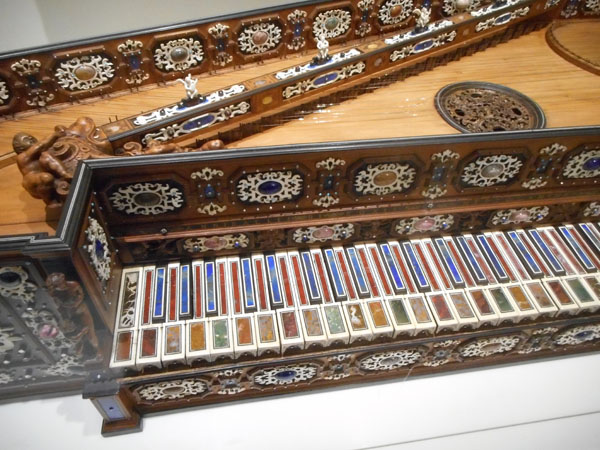
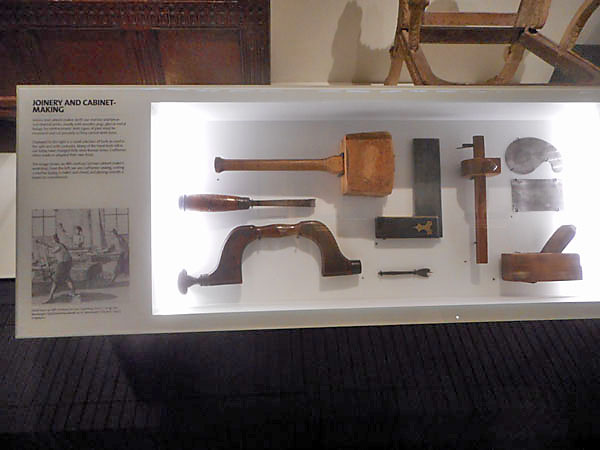
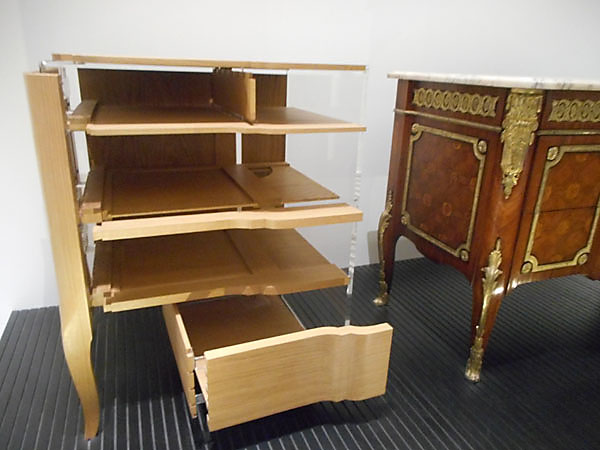
Even simple paint can make a great piece, although I'm not sure I'd want to have it in our bedroom (living room maybe, given our housekeeping).
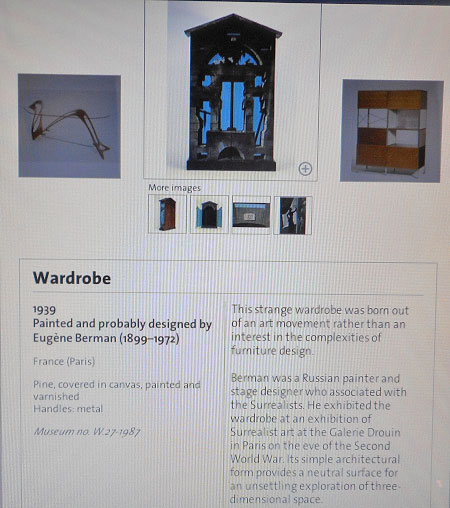
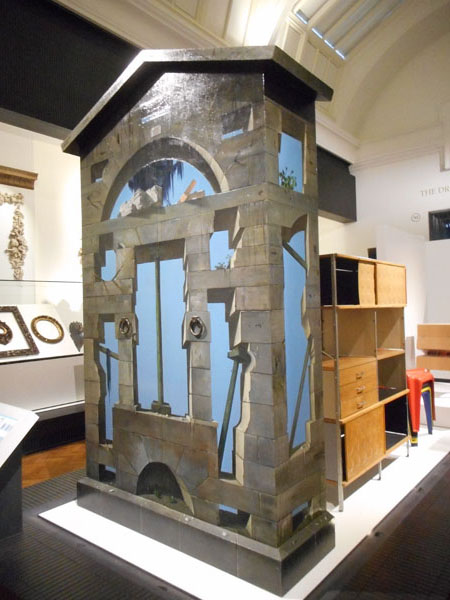
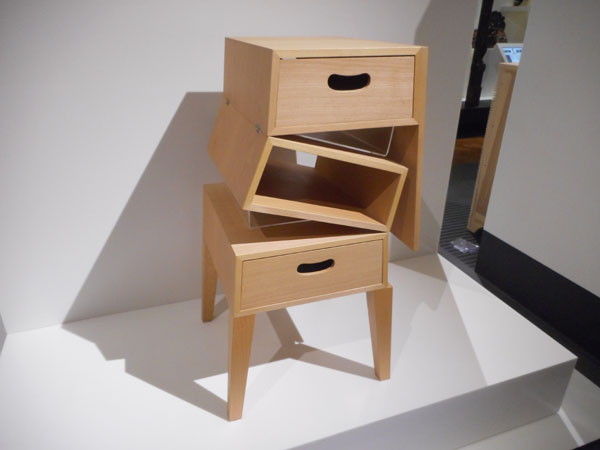
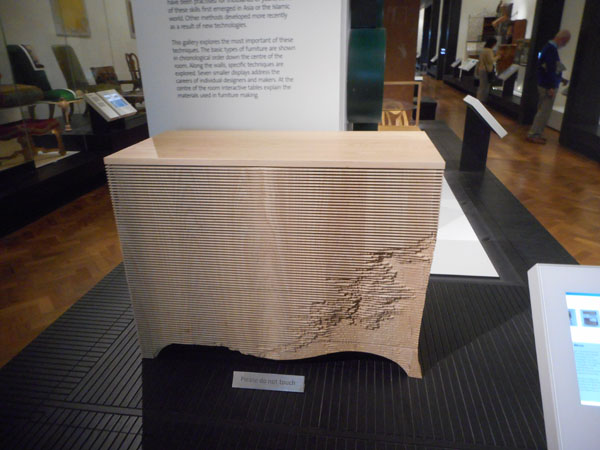
This flexible PVC "Bookworm" can be curled into any shape that catches your fancy... and it's still commercially available.
(Searching the database revealed that its longer steel cousin "This Mortal Coil" is held in the V&A's storage.)
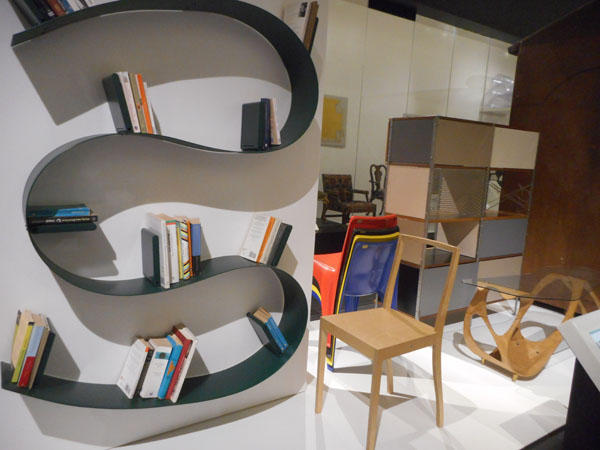
3-D Printing hits the V&A ... these nylon stools were each "printed" fully assembled. Layers of Nylon powder were heated by a laser in a sintering process, melting where struck. The flexible joints and pivots were created by leaving tiny gaps between the adjacent melted areas. The process leaves a rough matt texture on the outside where you can see the individual layers (if you squint at the real object).
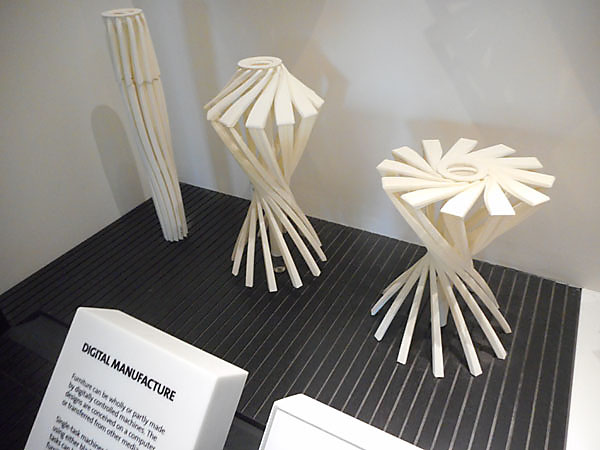
Another 3-D printed table, with some differences: It's modeled after the fractal structure of a "Dragon Tree" (Dracaena). Notice the branching of the legs and the shadows on the ground from the light passing through its structure.
Unlike the melted-powder of the above stool, this table was formed by having a laser UV-cure the top skin of a pool of liquid resin ... so each layer is only 0.1mm (1/250th of an inch) thick. Then the supporting structure of the printer dropped 0.1mm and the next layer was formed. Repeat. It took over 7 days to print the table. The V&A has a video of the process.
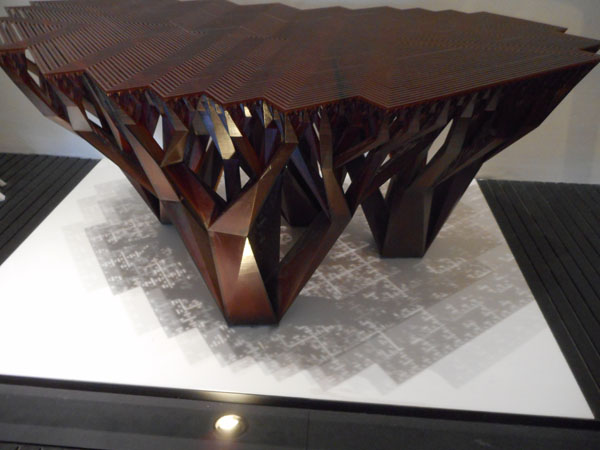
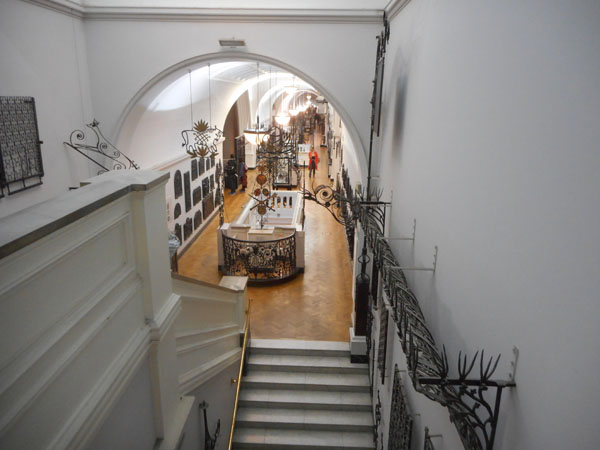
Wrought iron, cast iron ...
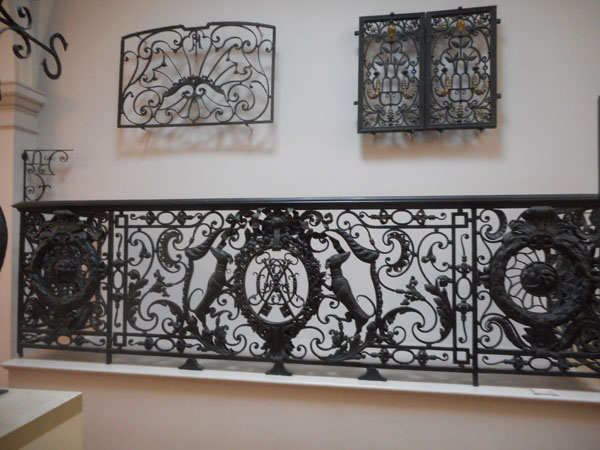
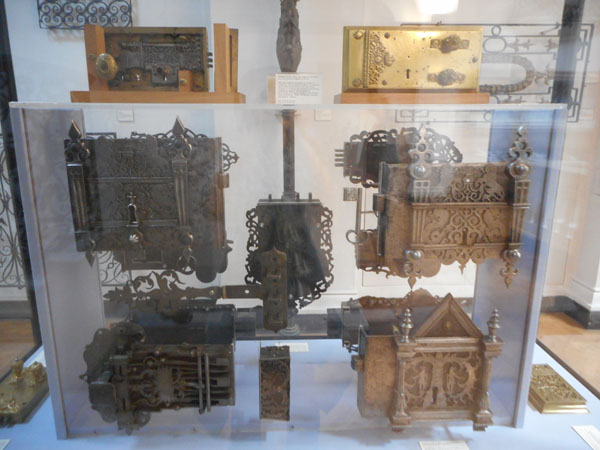
Made in 1862, it was displayed at the Great Exhibition before being installed in Hereford Cathedral a year later. When it was remonved from there it eventually wound up at the V&A needing thousands of hours of restoration work. It is now a showpiece of what can be done in metalwork.
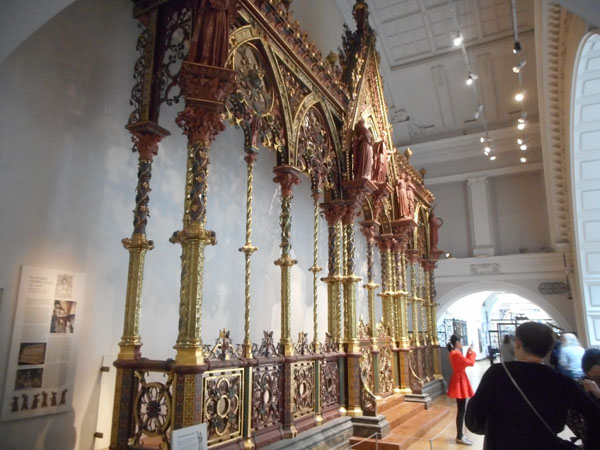
"Bluebird" (1911)
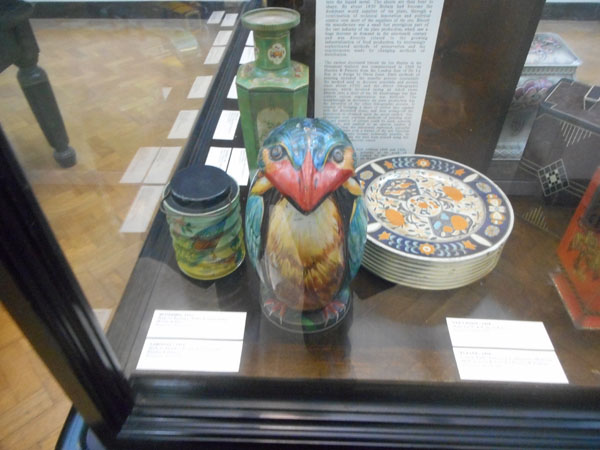
Modern designs are represented
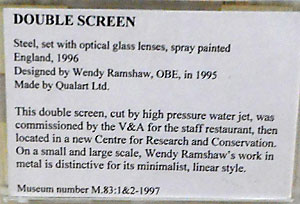
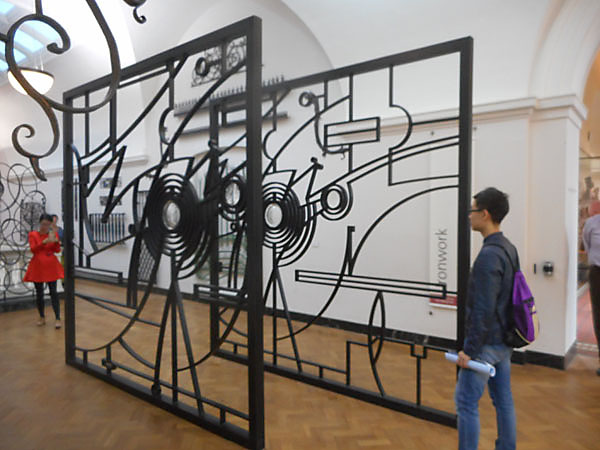
There was a special exhibit of modern silverwork:
Karen liked the lichen in this piece is by Abigail Brown
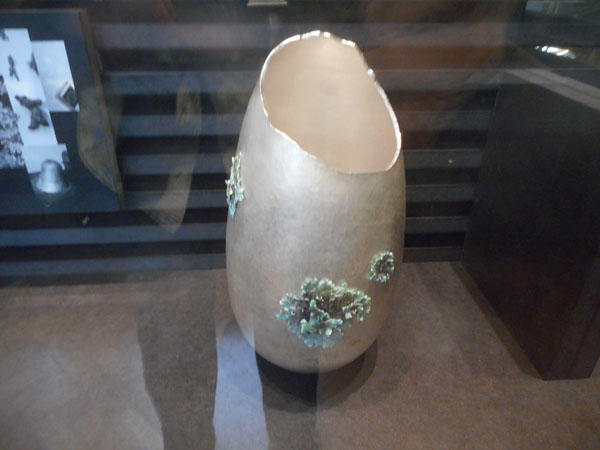
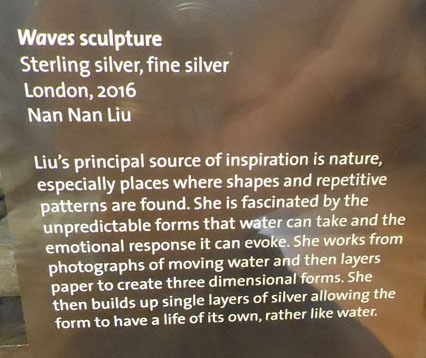
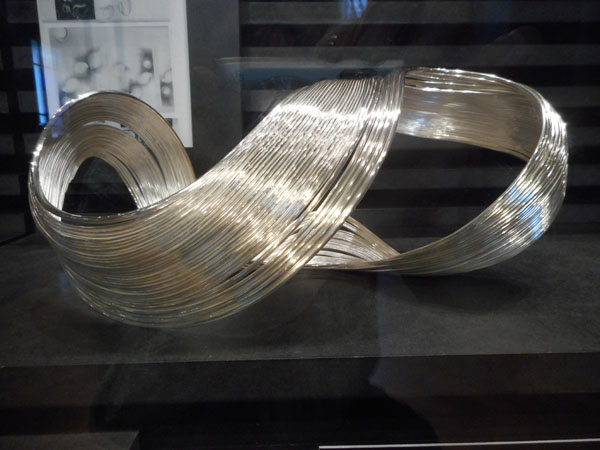
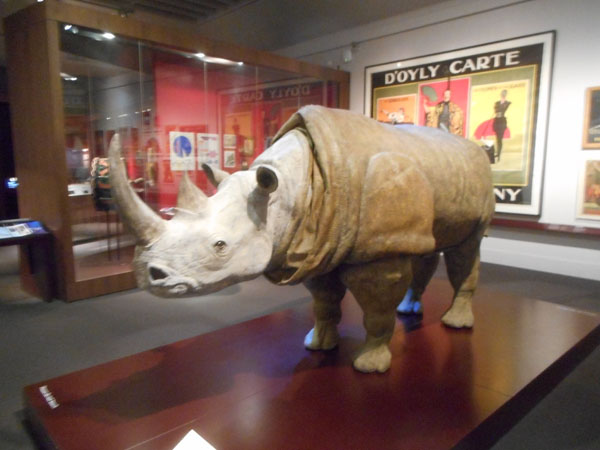
Lots of gorgeous costumes, theatre sets, etc. Once more, the lighting was dim to avoid fading the colors, so most of our photos are blurry. Well worth seeing in person.
But now the curtain drops, the house lights come up ... and we head across Exhibition Road to ...
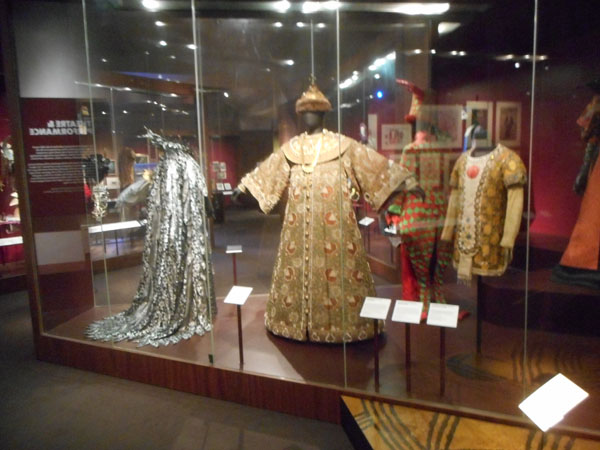
The Natural History Museum:
We entered the side door because we were headed for geology first (and the lines were long at the front door)
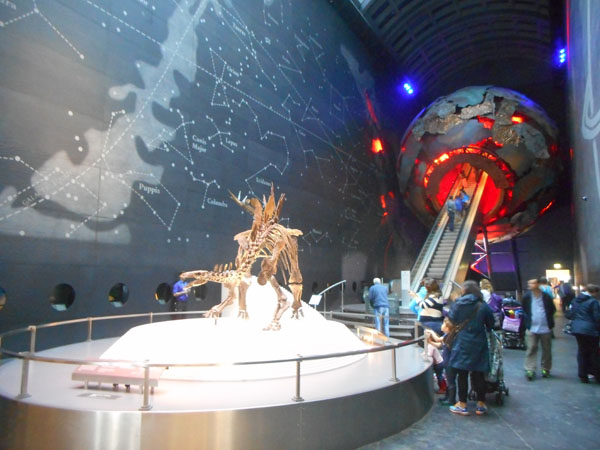
"Sophie" is the most complete stegasaurus fossil ever found, missing only its left forelag, base of the tail and a few small bones. It took 18 months to extract from the ground in Wyoming.
The museum provided images showing the cast versus original specimen:
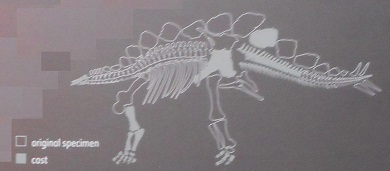
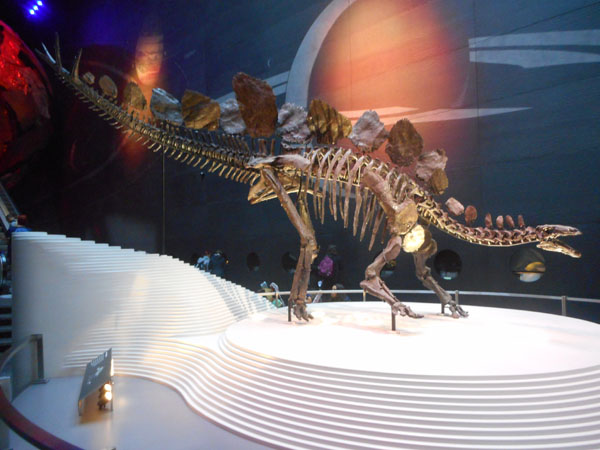
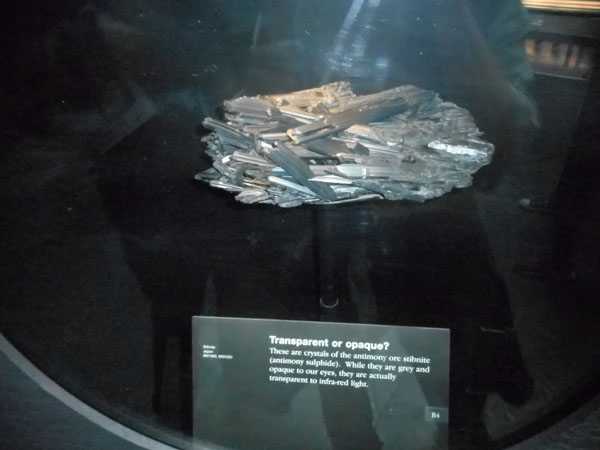
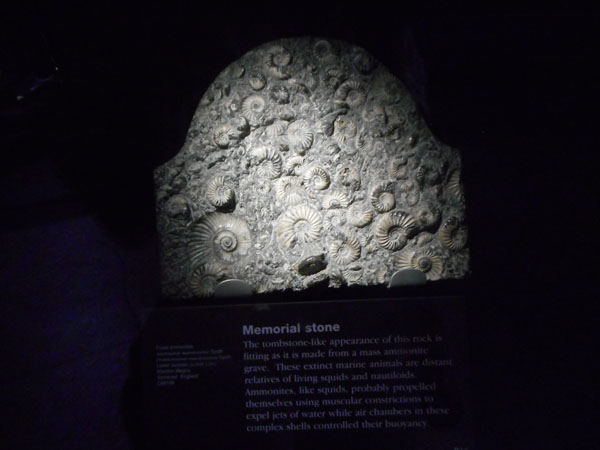
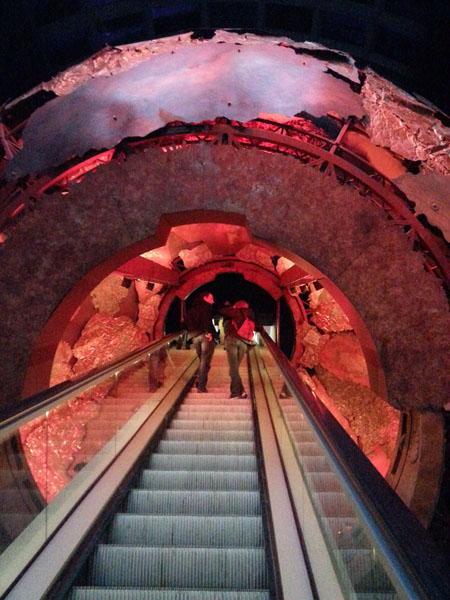
These are different forms of lava.
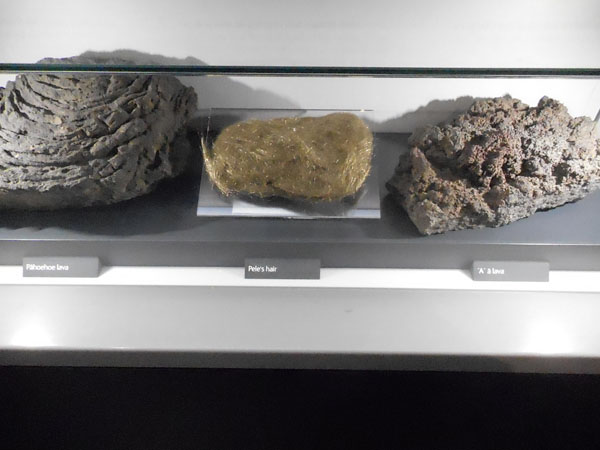
We didn't know coal could do that
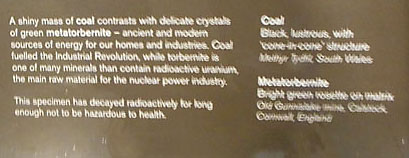
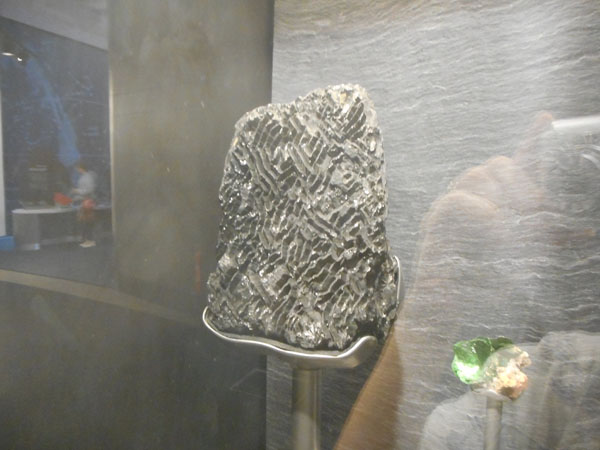
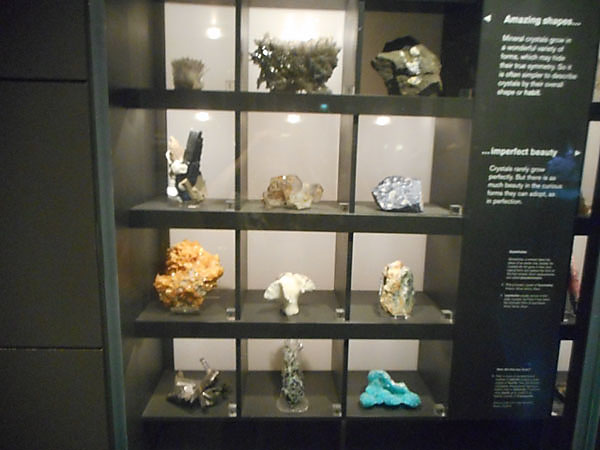
Sometimes dramatic, yes, but other times interesting specimens were in pools of shadow
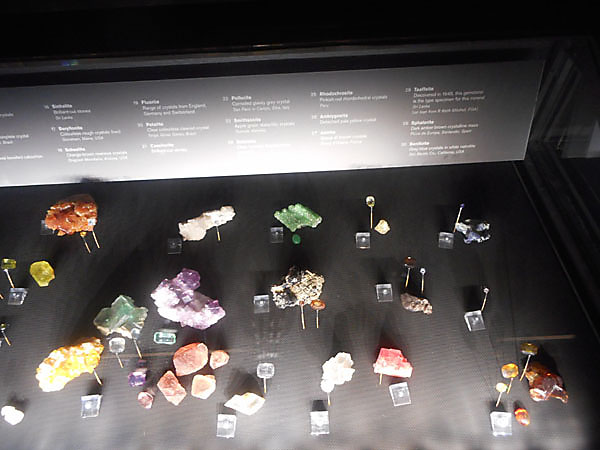
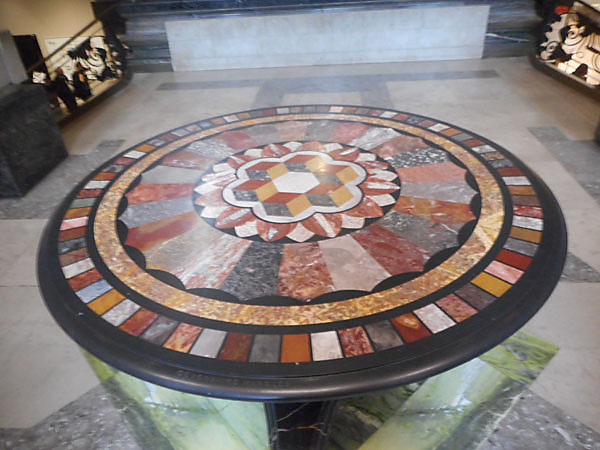
Now we switch to the intersection of biology and geology: fossils. The costumed person is a docent pretending to be Mary Anning, one of the first fossil hunters
Two entire walls of Ichthyosaurs and Pliosaurs.
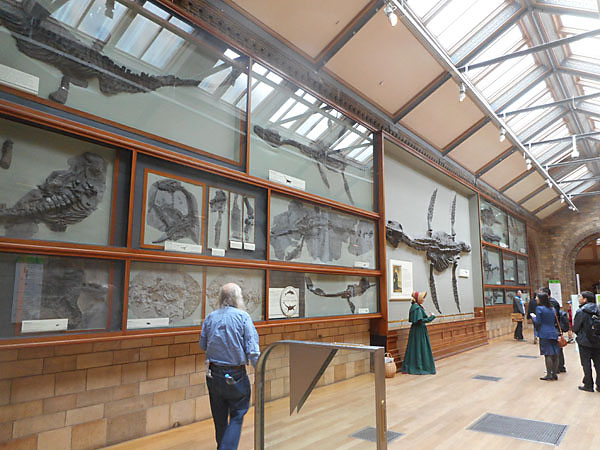
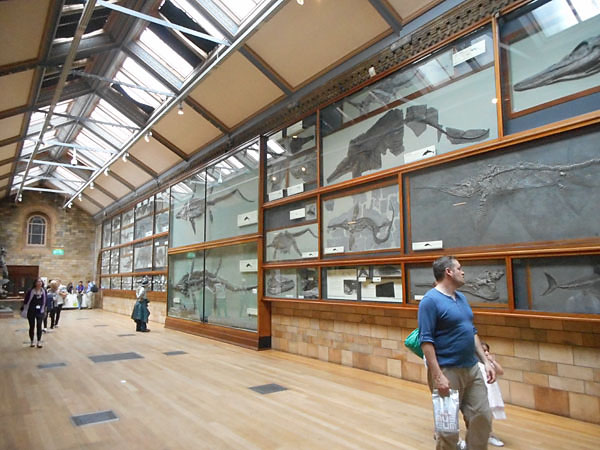
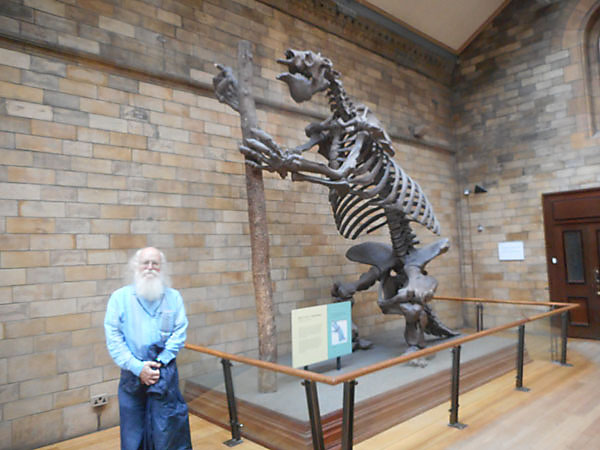
School kids gather in the great hall (the front door opens into this space) to plan their expedition. In the main space they're greeted by Dippy the Diplodocus.
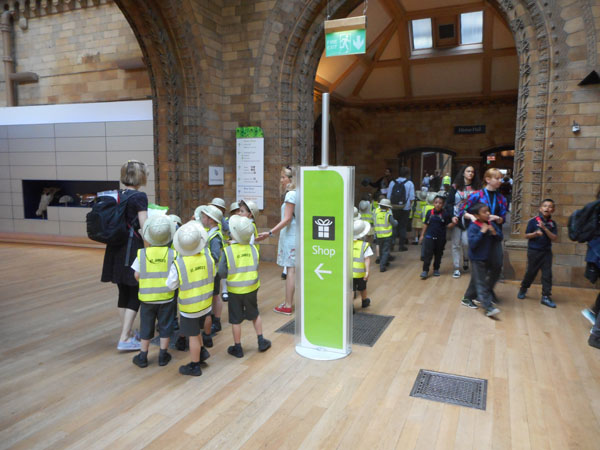
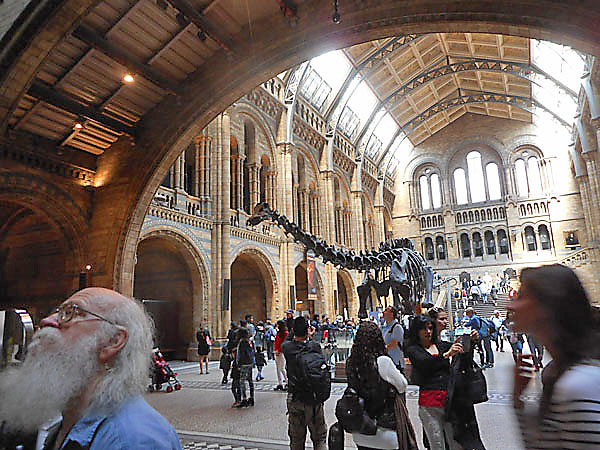
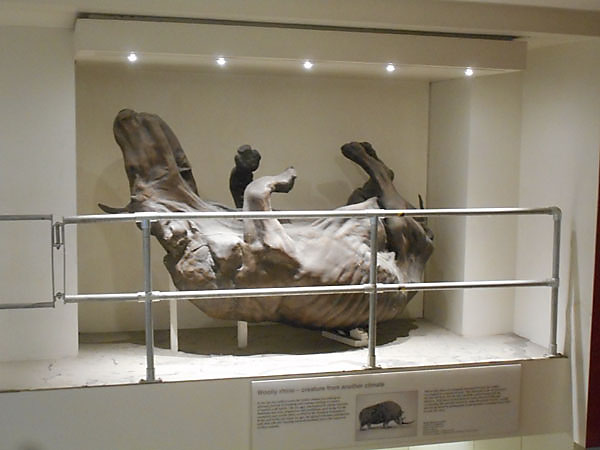
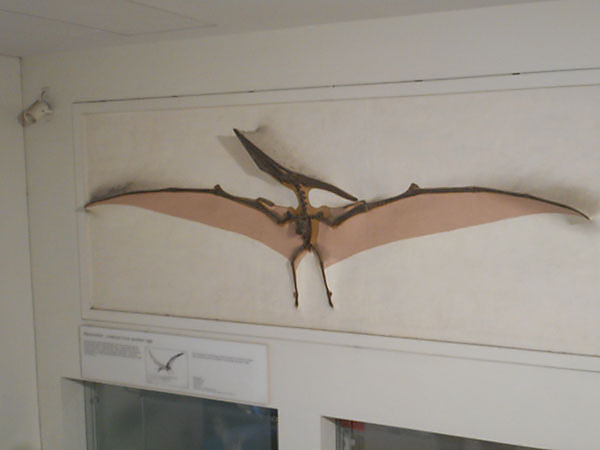
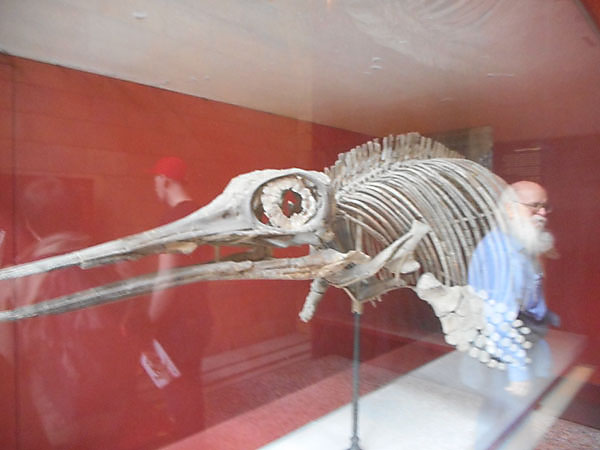
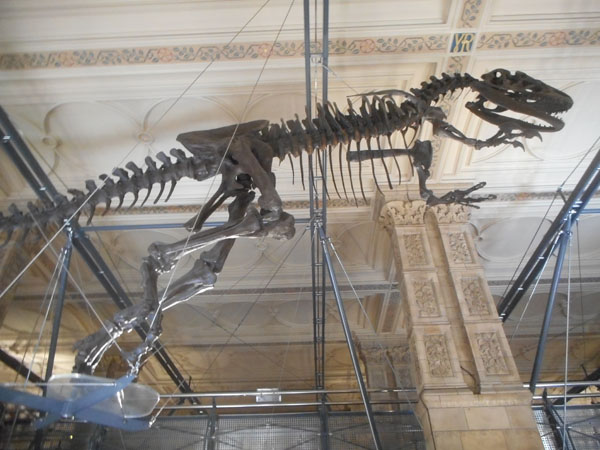
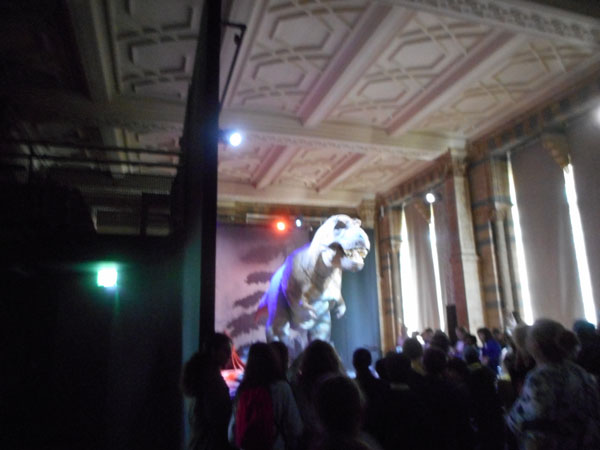
The comparative anatomy of fellow hominins
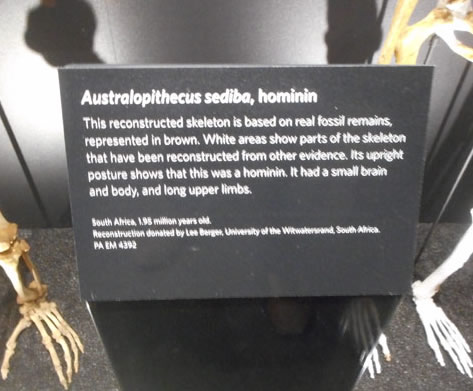
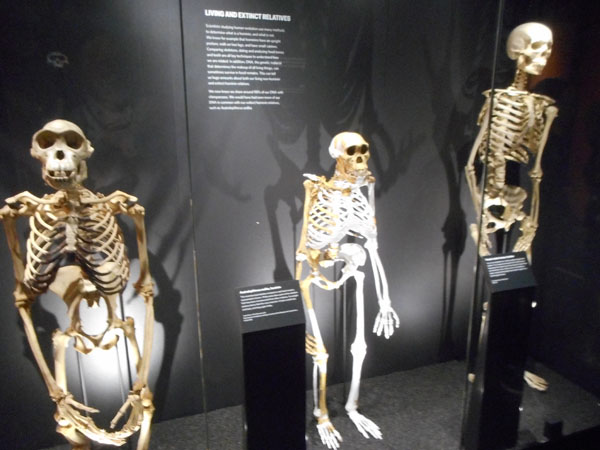
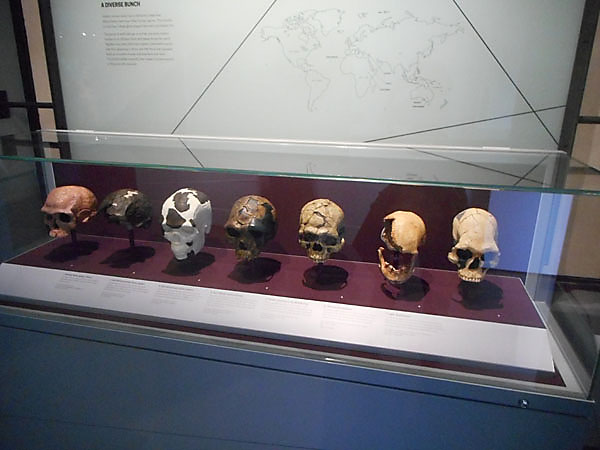
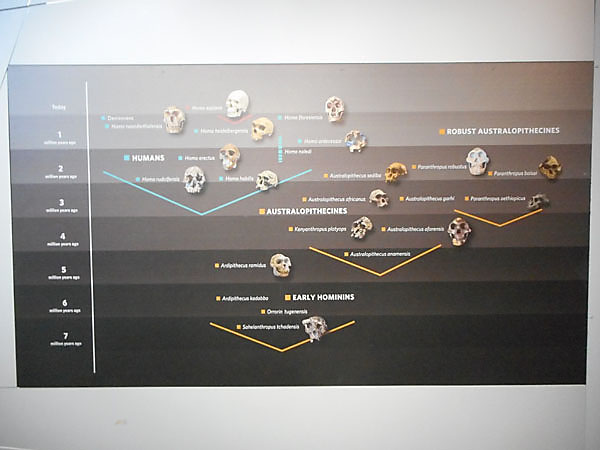
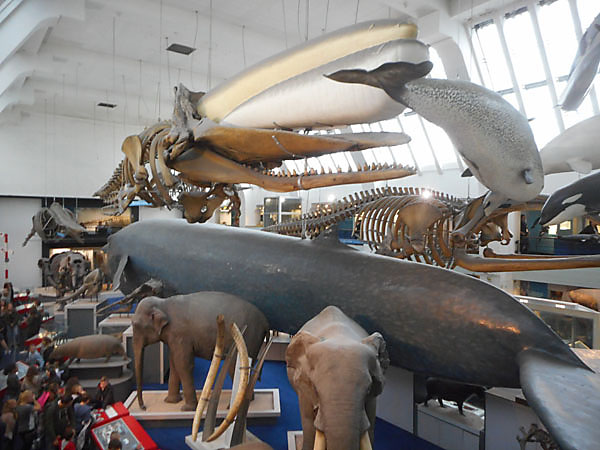
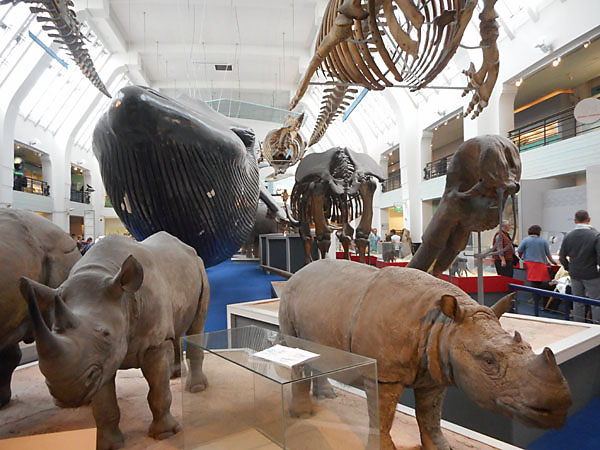
A blue whale skeleton is being prepped to replace "Dippy", the dinosaur in the main hall. Dippy will step outside to stand in the garden.
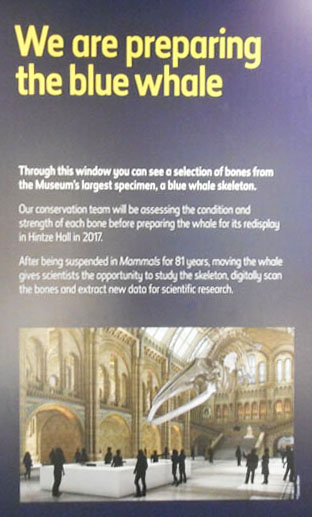
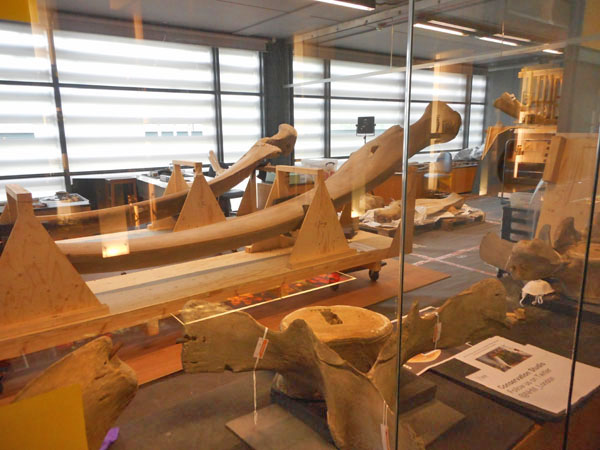
Next we explored marine creatures.
Karen wants to do something like this coral in glass.
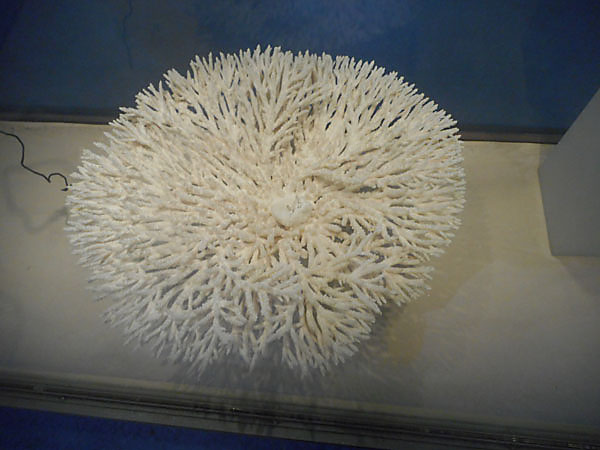
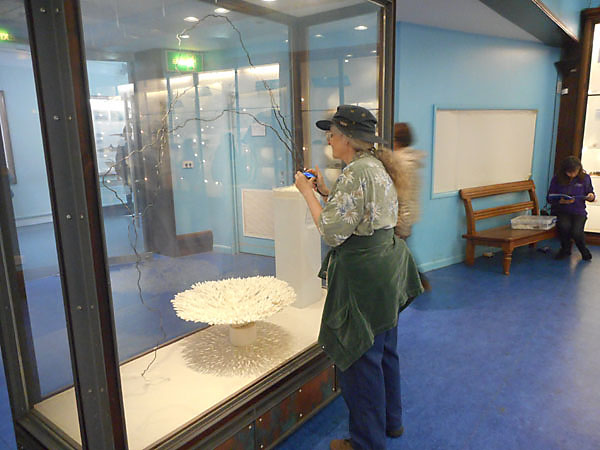
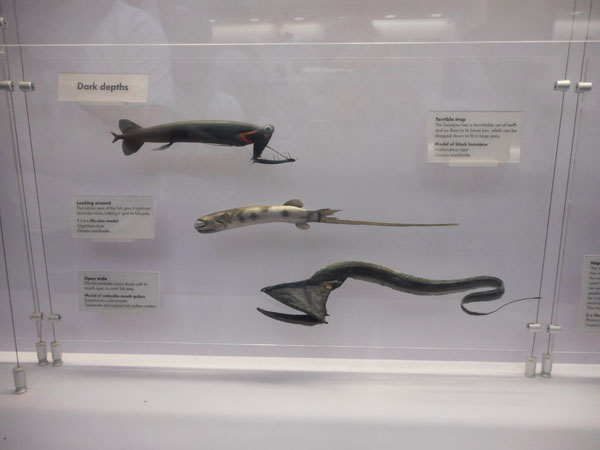
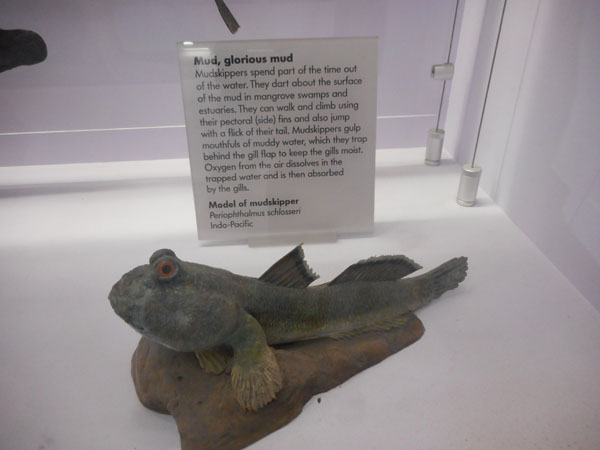
The Japanese Giant Salamander is the largest currently living.
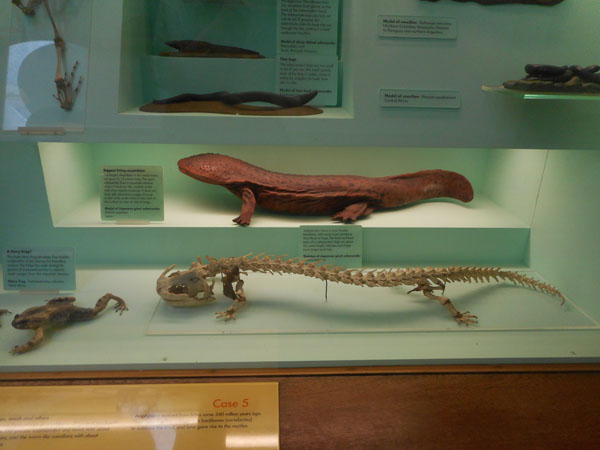
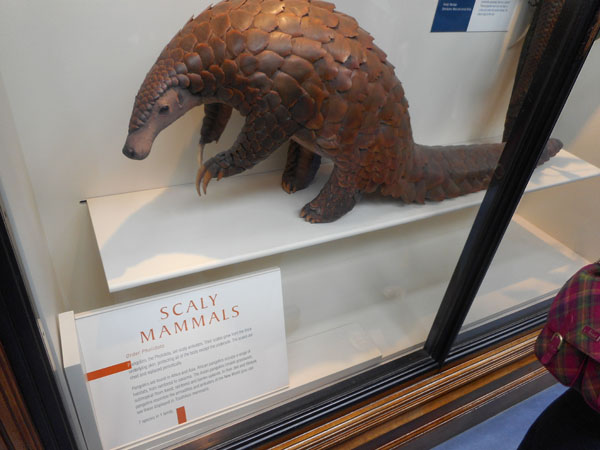
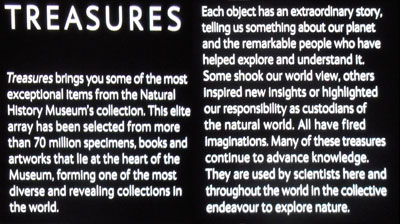
Waaay back on our "Canal to Soho" page, we dropped in on a gallery that had a photographic exhibit of Leopold and Rudolf Blaschka's glass models of invertebrates . Here is one of the original glass models (plus many other notable artifacts like a dodo skeleton and a 1st edition of Darwin’s Origin of the Species. Again in very dim light).
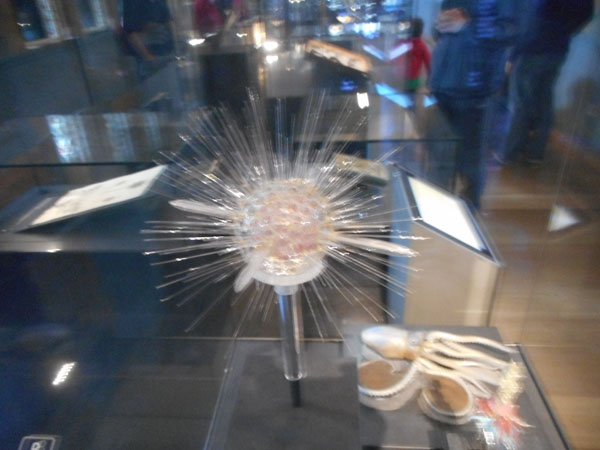
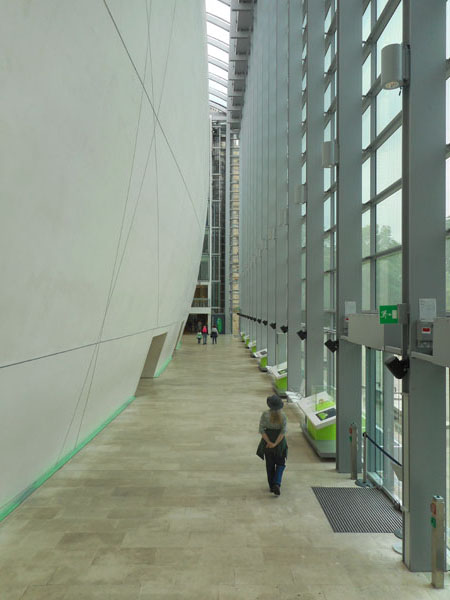
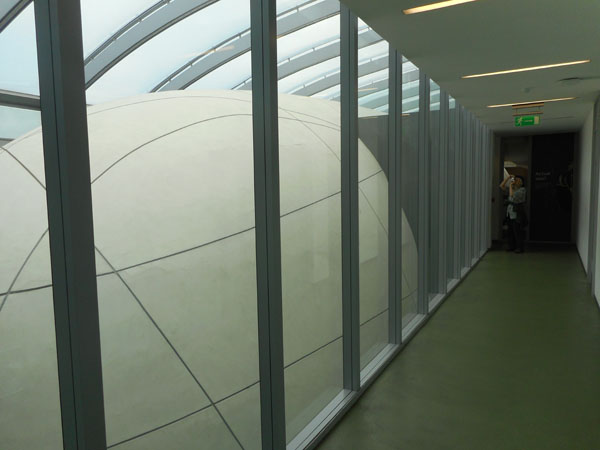
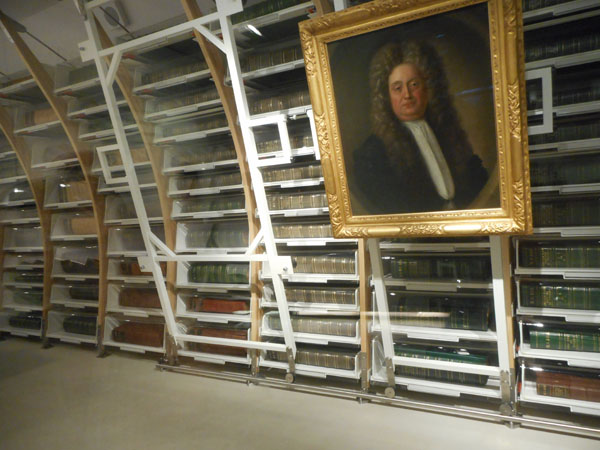
... a tiny fraction of the 23 million bottled specimens, most stored in refrigerated light-controlled conditions.
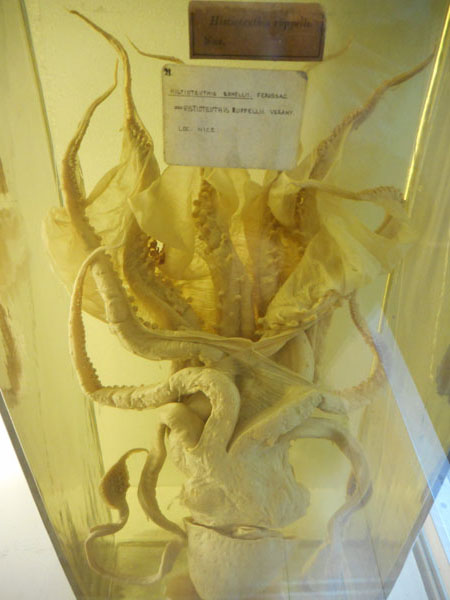
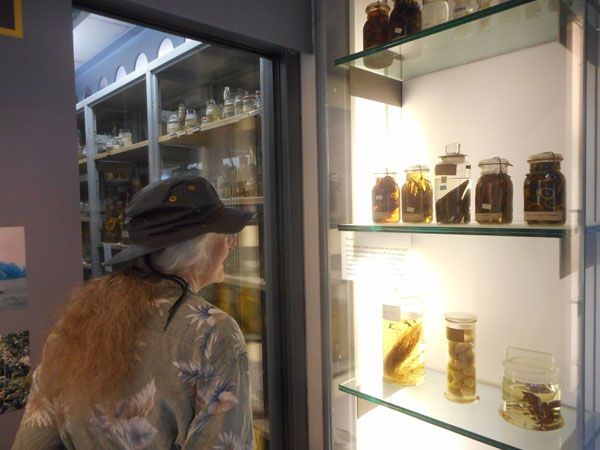
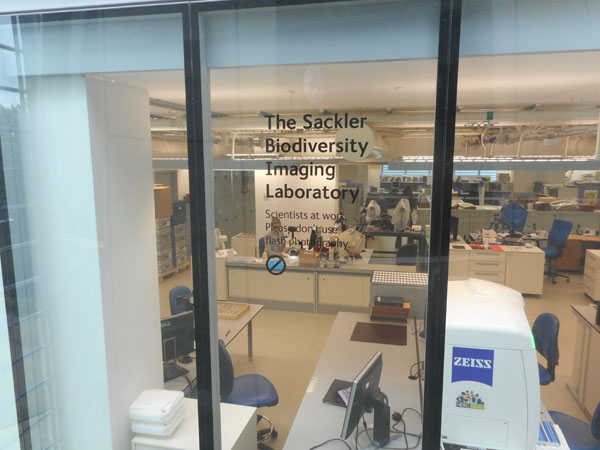
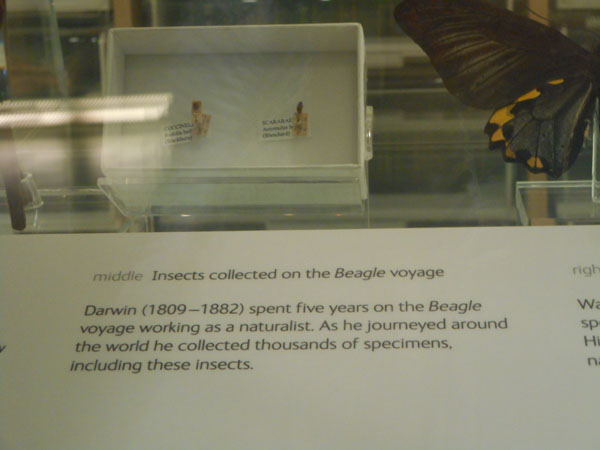
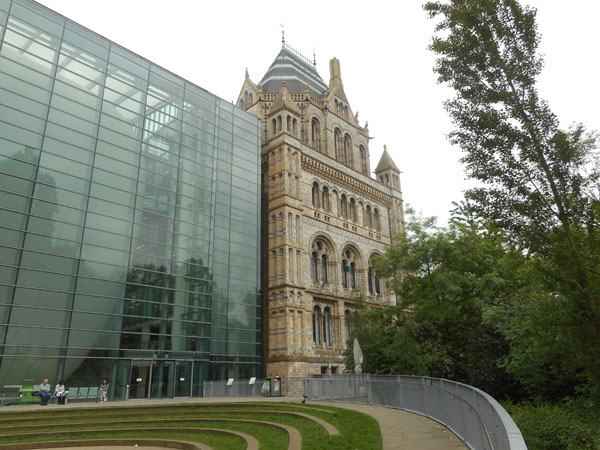
... Is the wildlife garden with a slab of limestone with dino footprints
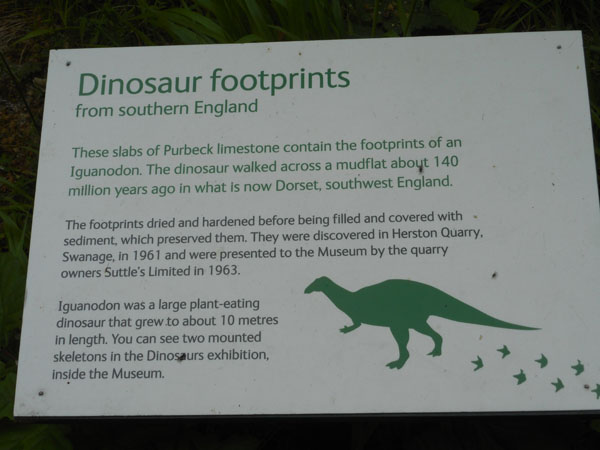
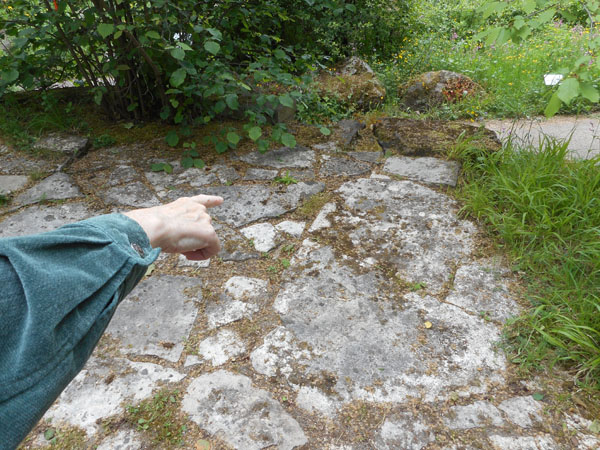
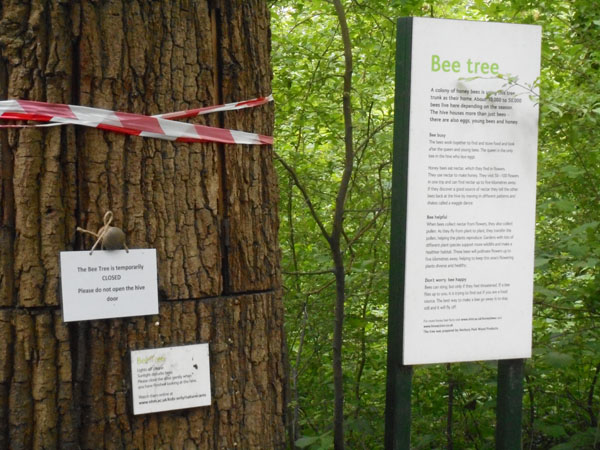
And examples of several different British biomes
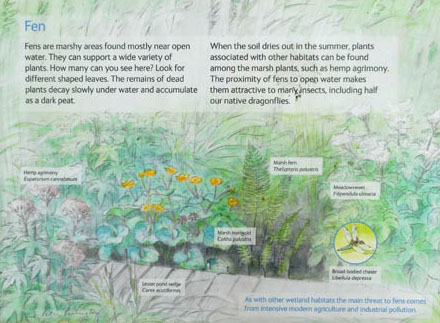
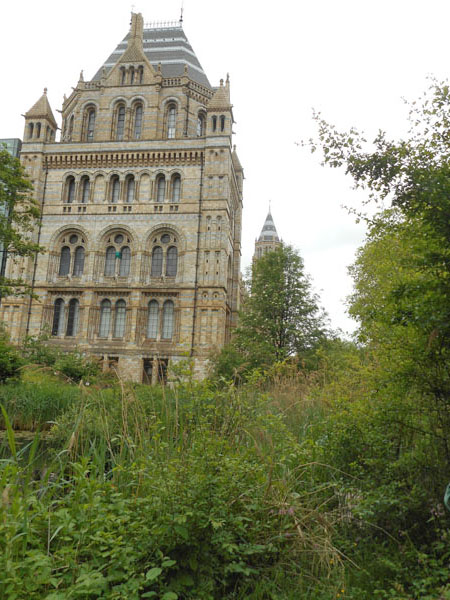
A grand old purpose-built space (Karen pointing out what look like roosting Pterosaurs among the animal sculptures)
... but now we leave the Natural History museum and walk just behind it on Exhibition Road to find ...
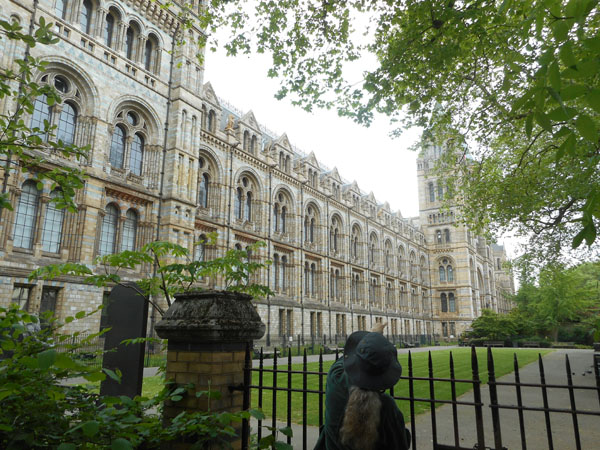
The Science Museum ...
whose main floor is mostly VERY large technology
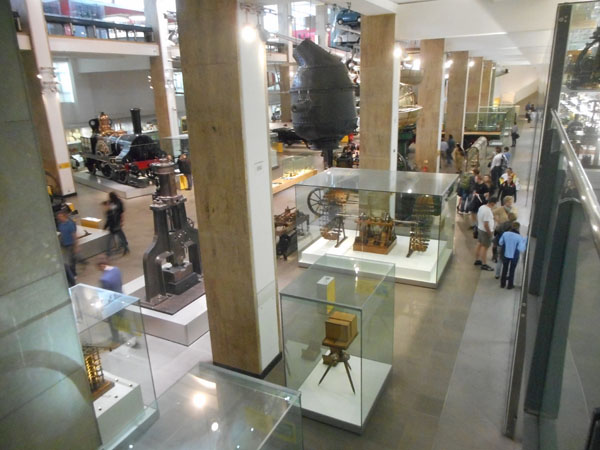
Featuring the real prototypes of famous inventions
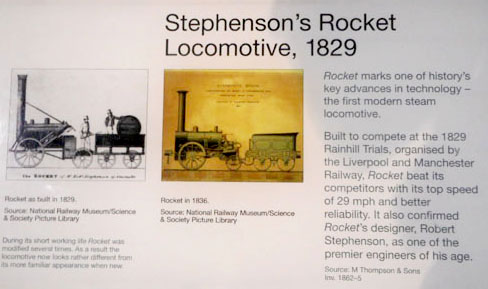
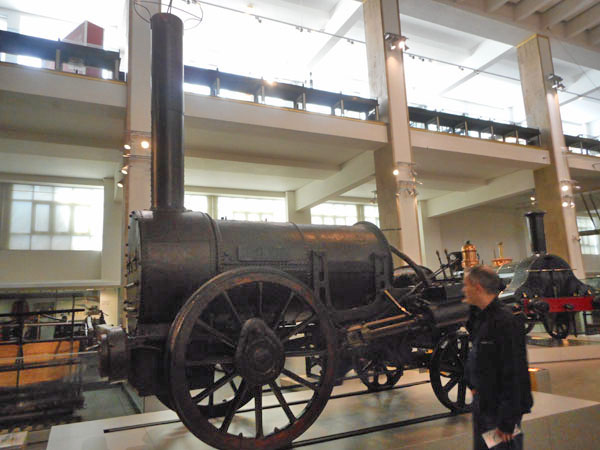
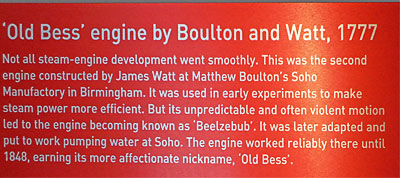
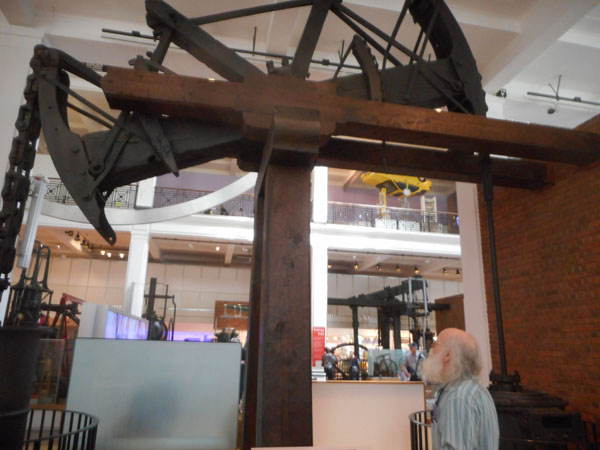
(but driven by an electric motor, not by steam)
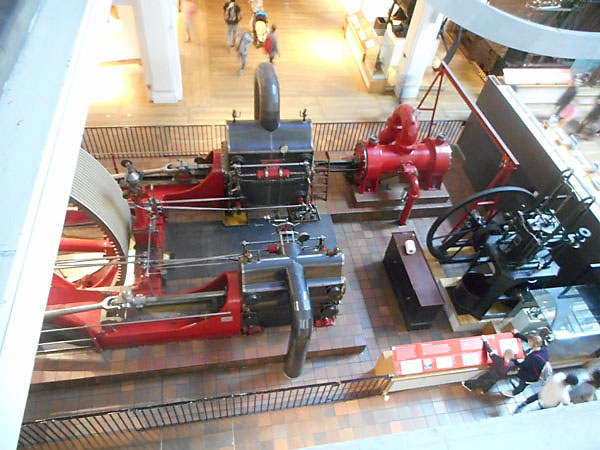
Remember hearing that the idea for computer cards came from looms?
(OK, ok... have you even heard of "computer cards"?)
Mr. Jaquard's contribution ... a card reader controlling the sequencing of the heddles attached to an 1825 hand loom .
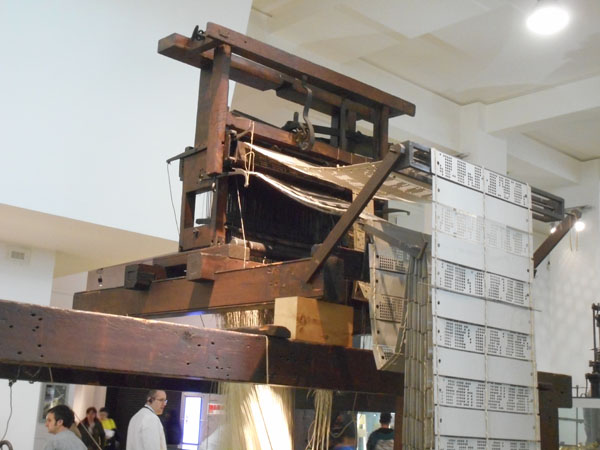
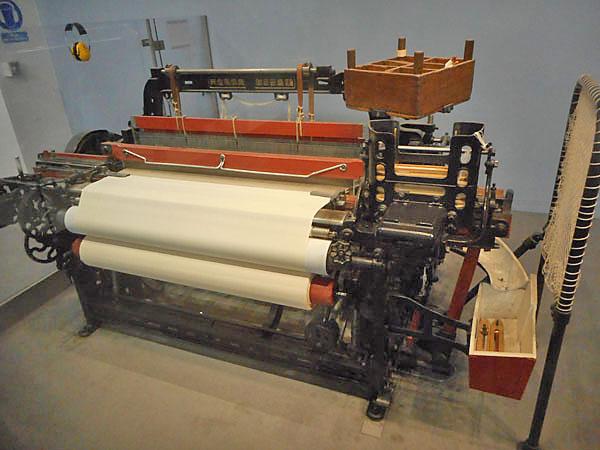
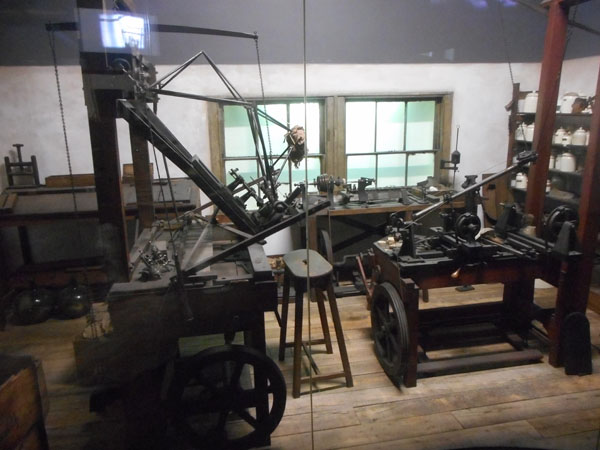
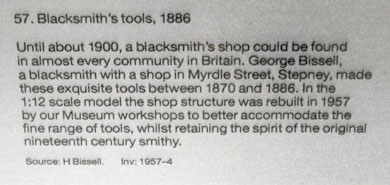
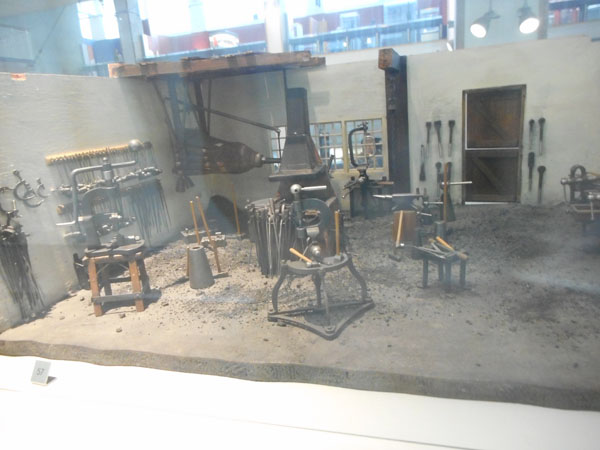
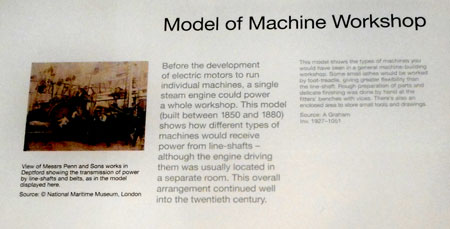
In the mills of Britain and the US, steam (or water) would power "line shafts" that ran along ceiling for the length of the room. Pulleys and belts would bring power down to the individual work stations or looms.
This model had delightfully detailed (and functional) lathes, milling machines, presses and punches ... each about the size of a salt shaker.
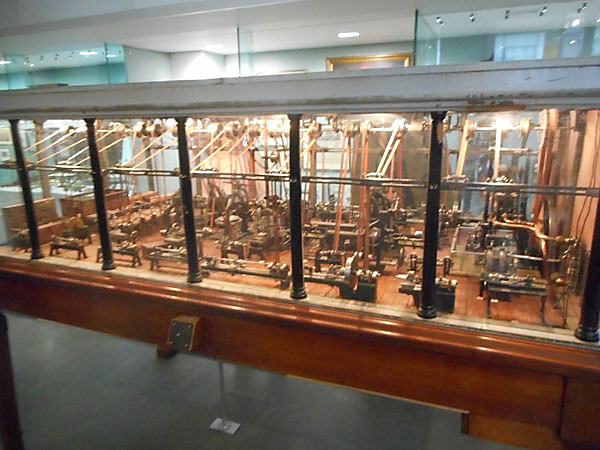
Although this example was a "fixed program" machine, Babbage did envision models which had changeable operations dictated by punched cards.
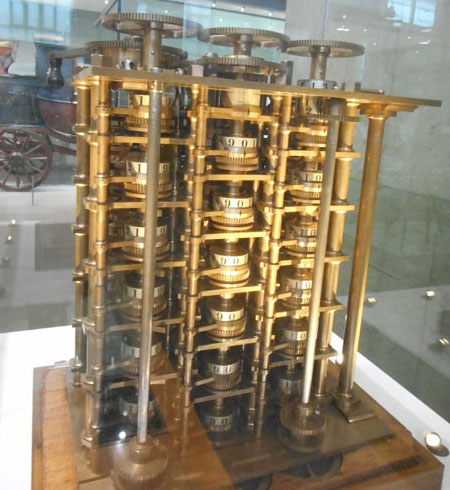
Here's the result ... fresh polynomials delivered on demand.
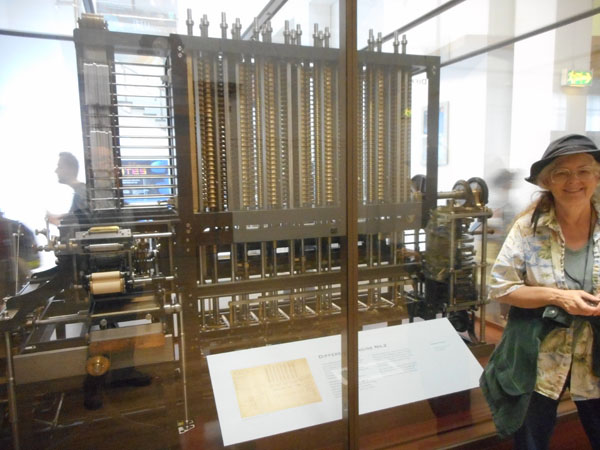
Looking forward, this is a prototype of a clock which is planned to run accurately for thousands of years
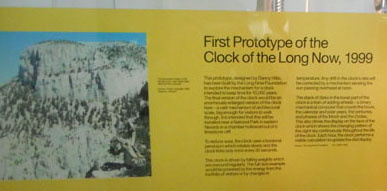
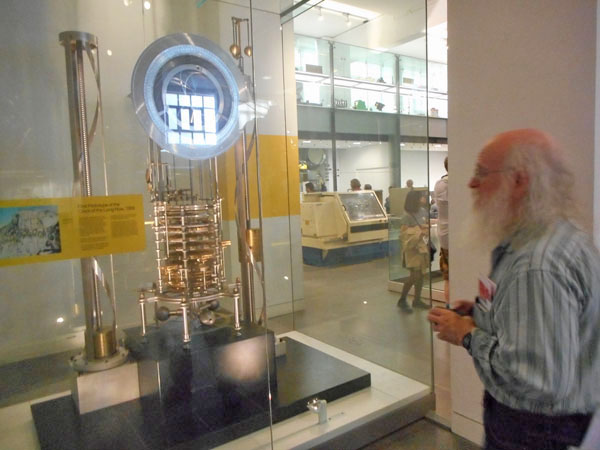
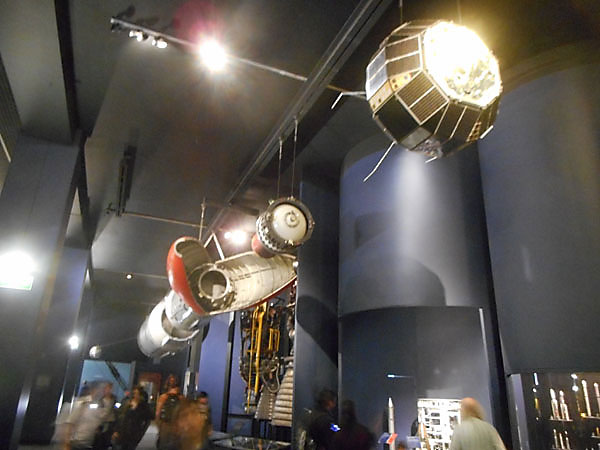
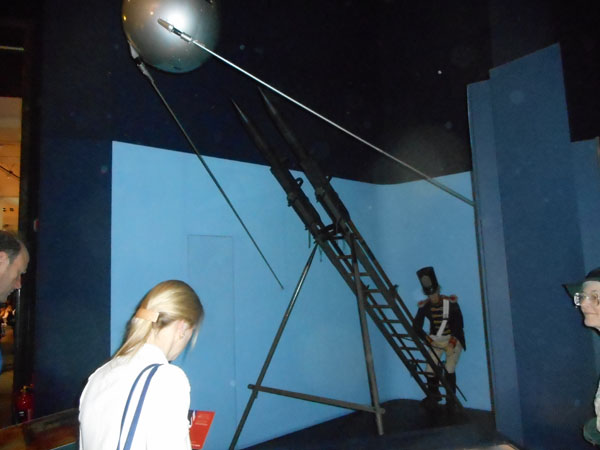
Next came "Making the Modern World" ... Around the periphery is a decade by decade exploration of technology for food, health, transportation, toys, games, ...
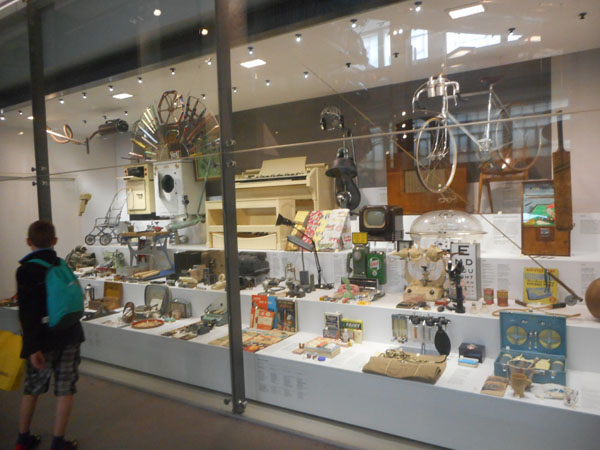
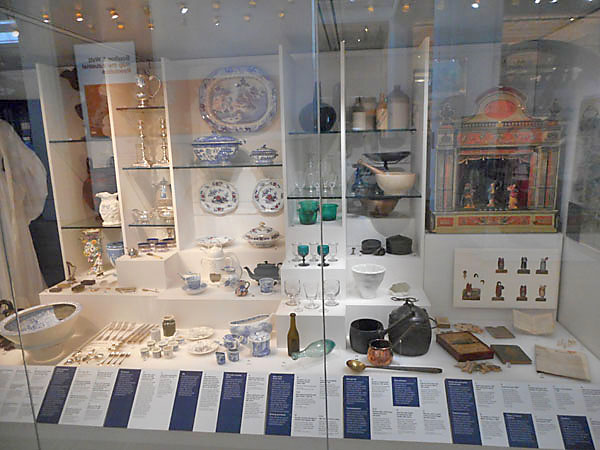
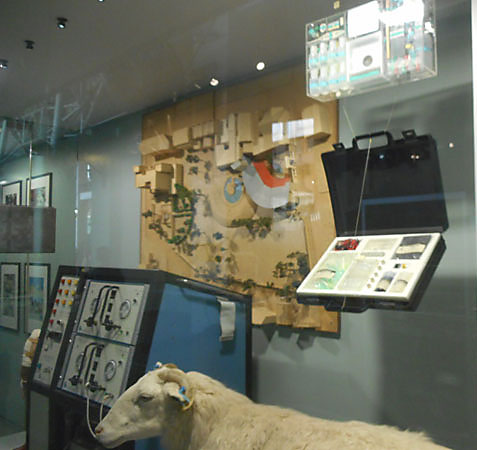
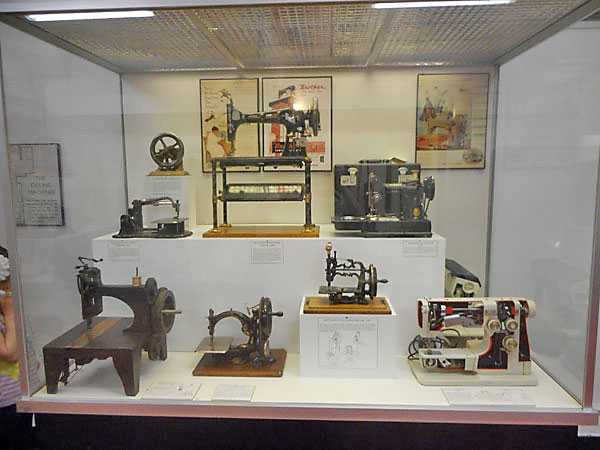
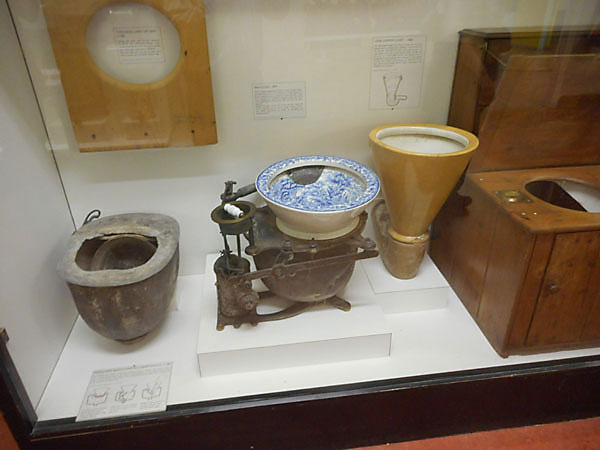
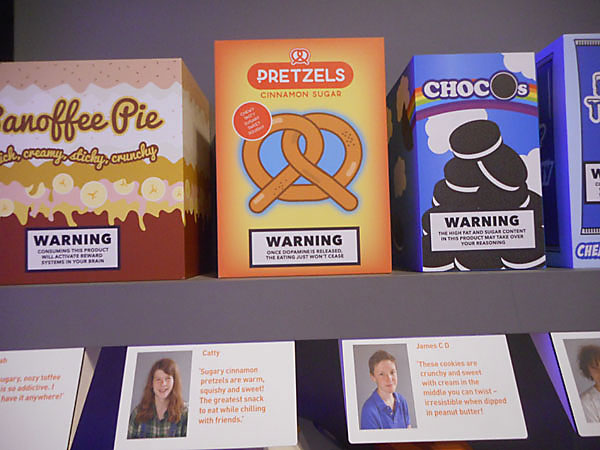
There was also a small materials science section: see the 8 hemispherical lumps of glass? All the same chemical composition, just heated to increasingly high maximum tempeatures to "develop" the ruby color due to colloidal gold.
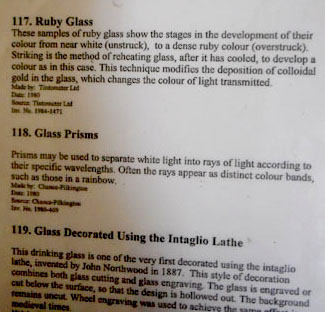
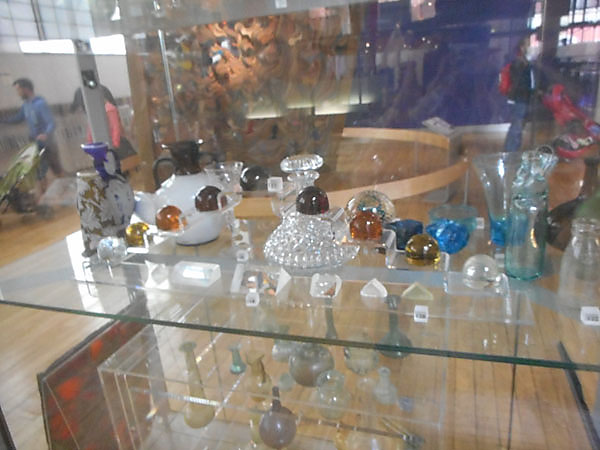
This sculpture was made from single sheets of "everything anything can be made with" by the Thomas Heatherwick studio.
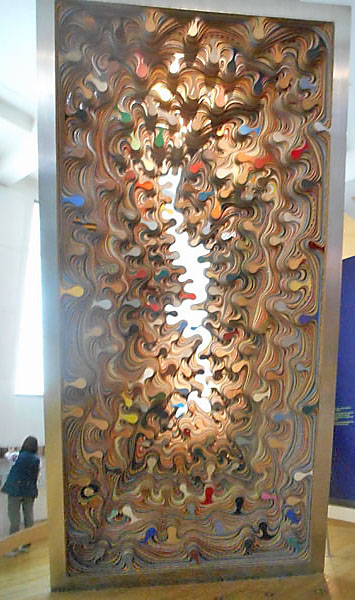
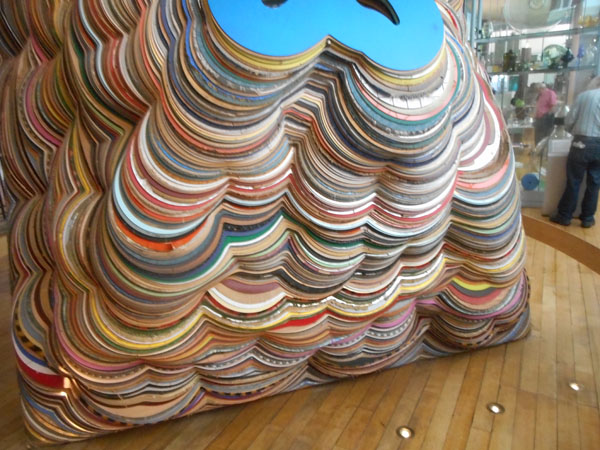
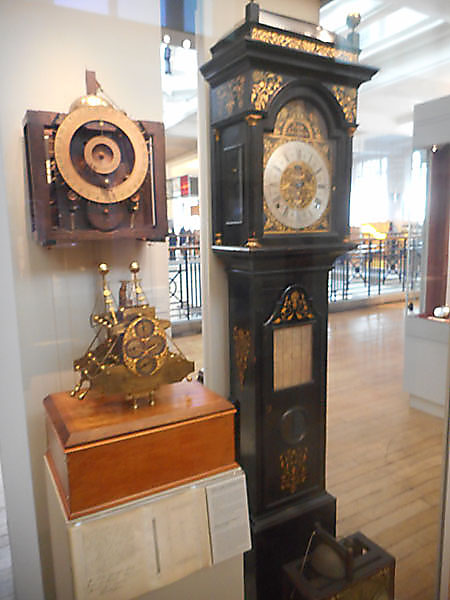
Yes, by this point we were feeling the weight of time.
But ... so what? Let's skip back a couple of weeks and visit...
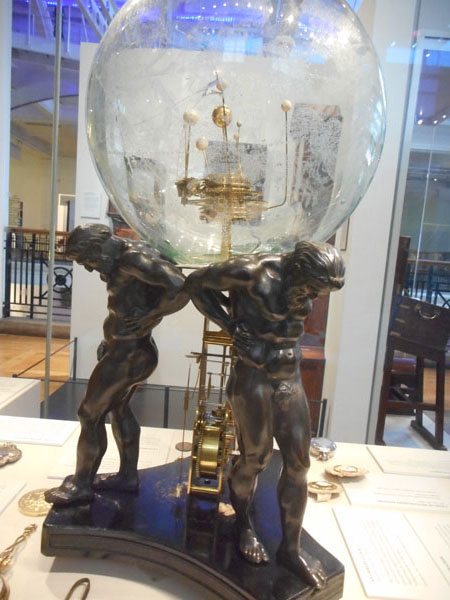
The British Museum
For many people, the British Museum is the museum worth visiting.
We had "hit it" back in 1993, so this time it didn't get as much attention from us. Mainly we revisited "old friends" and to see what's (relatively) new.
In short: a lot has changed in 23 years...
To begin with, they roofed over the central grassy courtyard and turned it into the gift shops, ticket and information booth space...
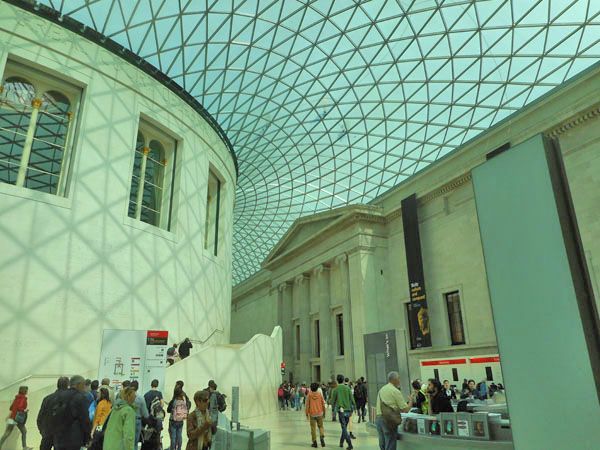
The first "regular" section was an introduction to the different collections and a bit about each of the collectors.
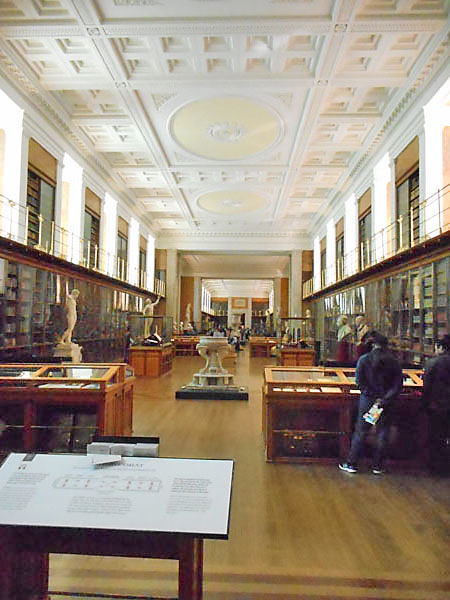
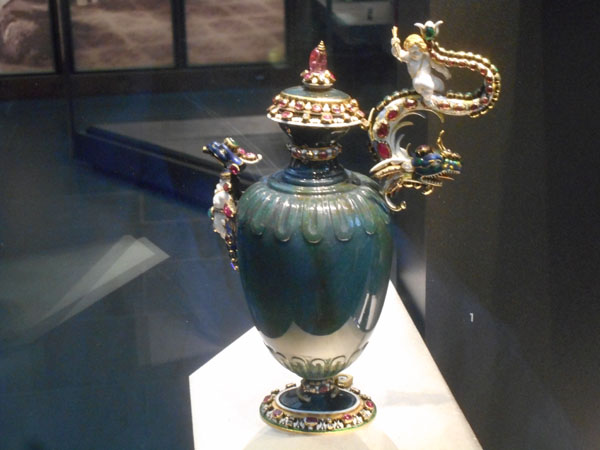
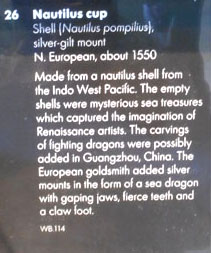
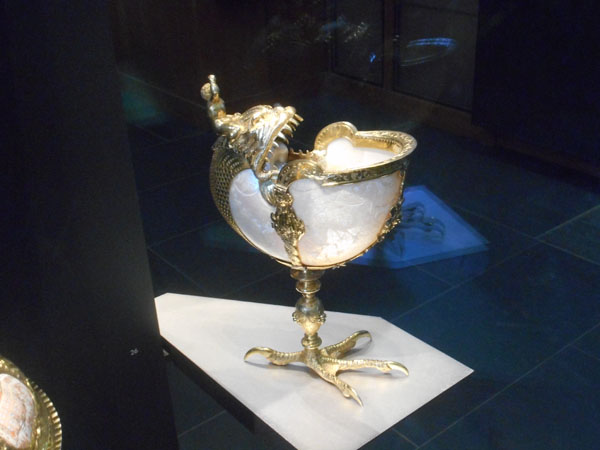
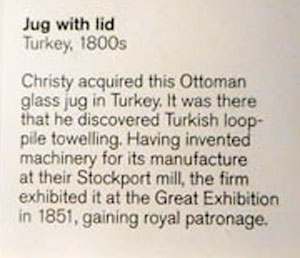
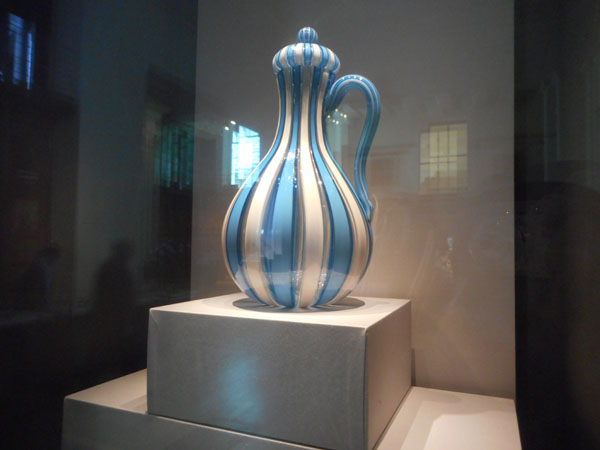
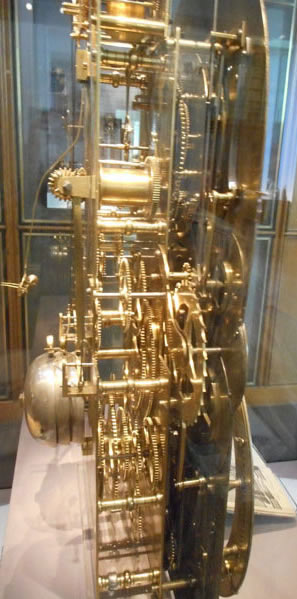
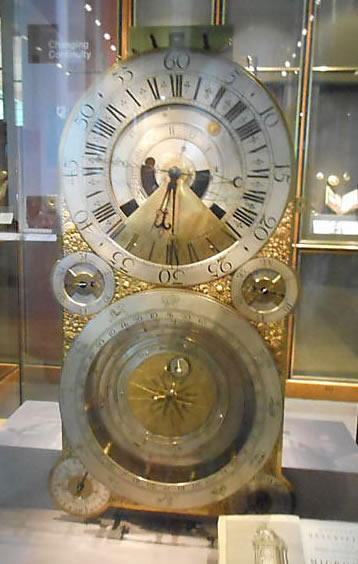
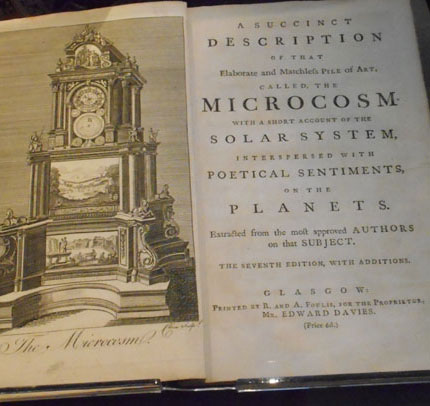
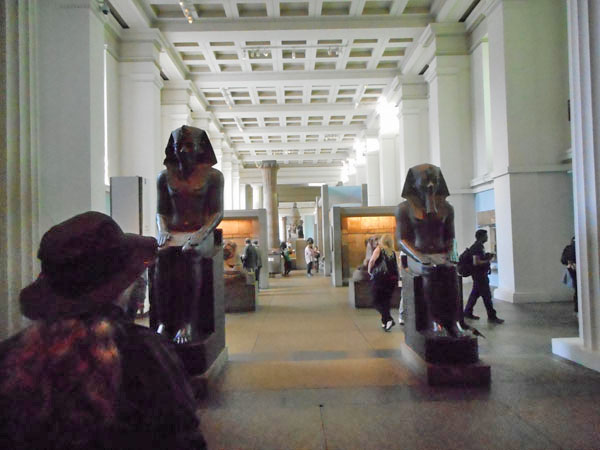
Both of them shared the style of having five legs... the pair seen from the front, but the side view shows the further foreleg in a half-way back stride (somewhat hidden by the glare).
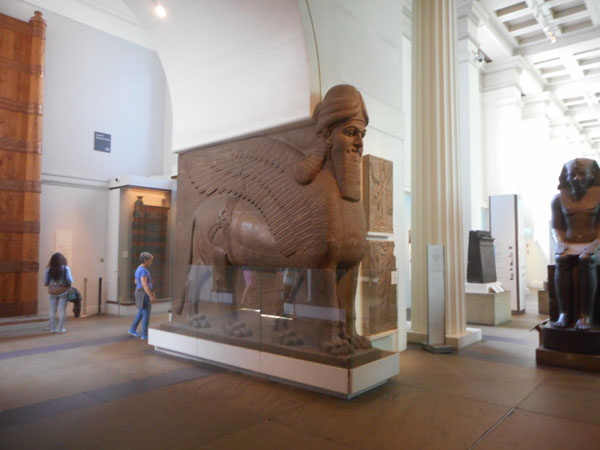
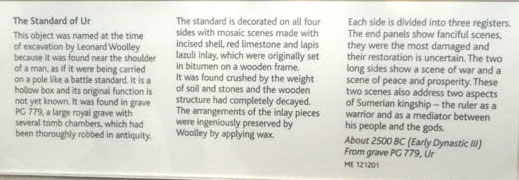
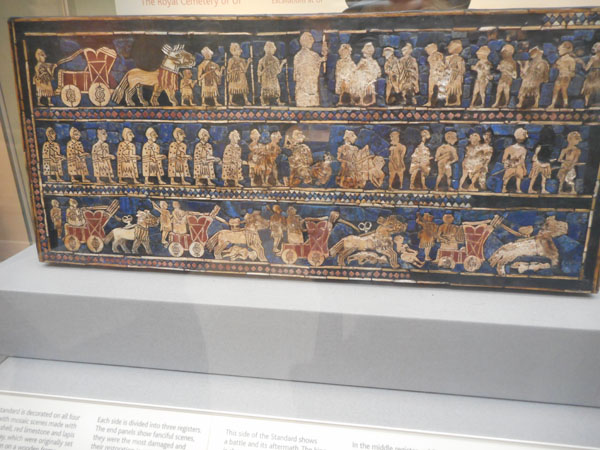
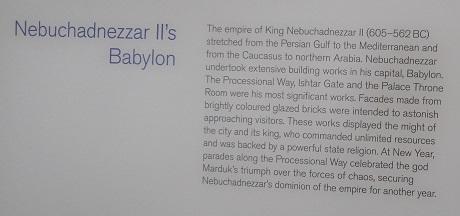
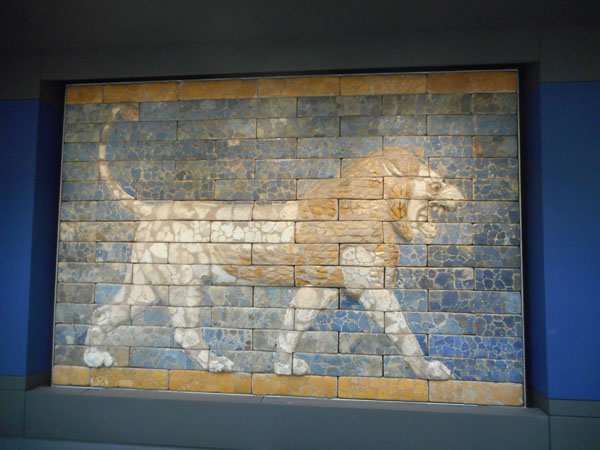
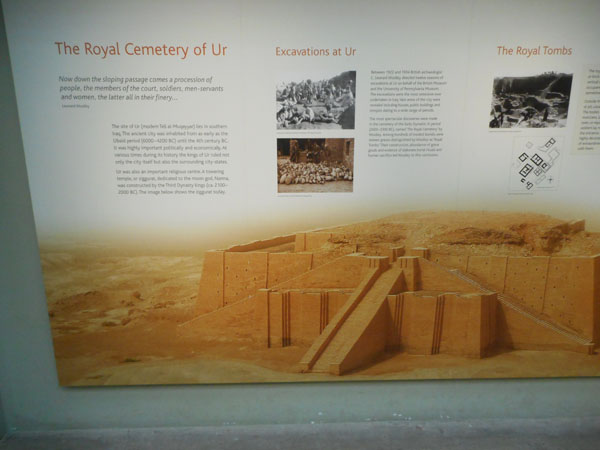
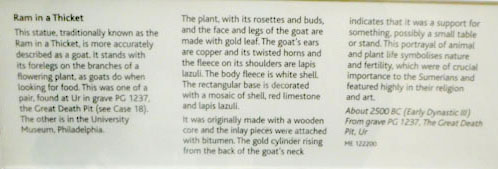
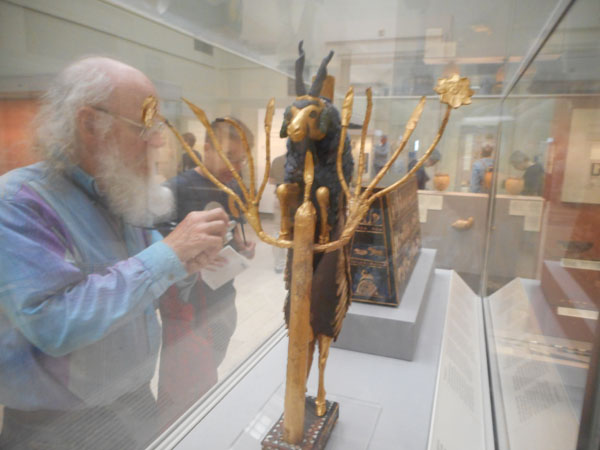
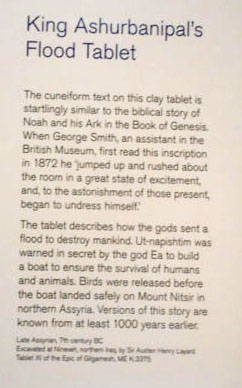
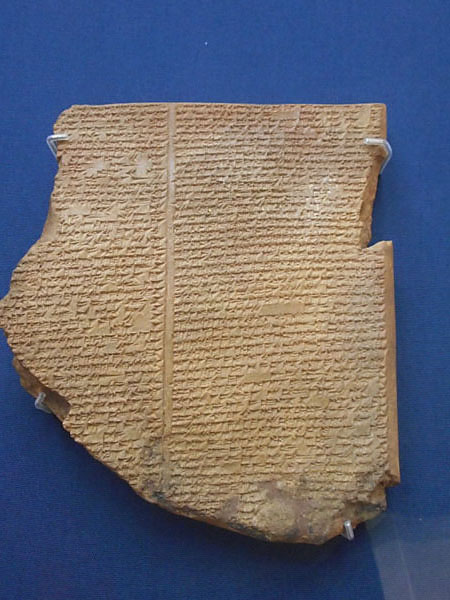
And then we got to Egypt:
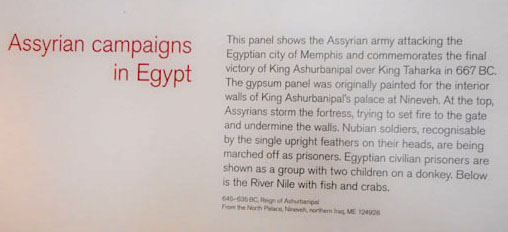
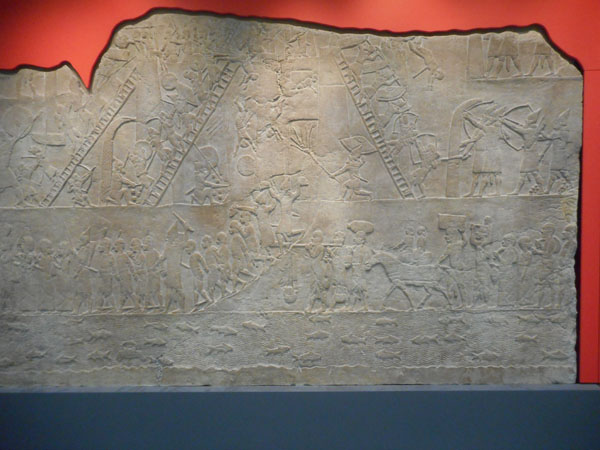
Chunks of wall ... one of many friezes collected over the centuries..
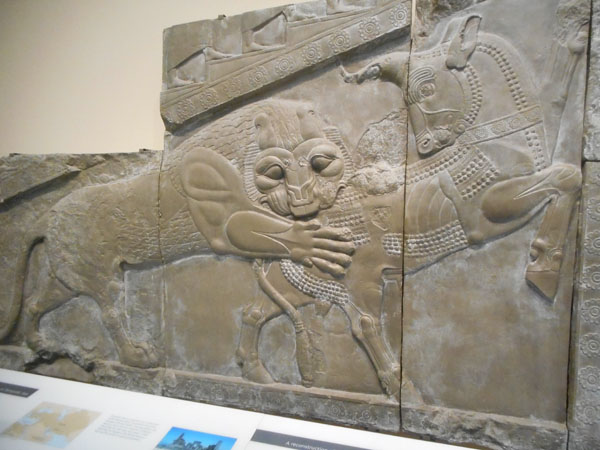
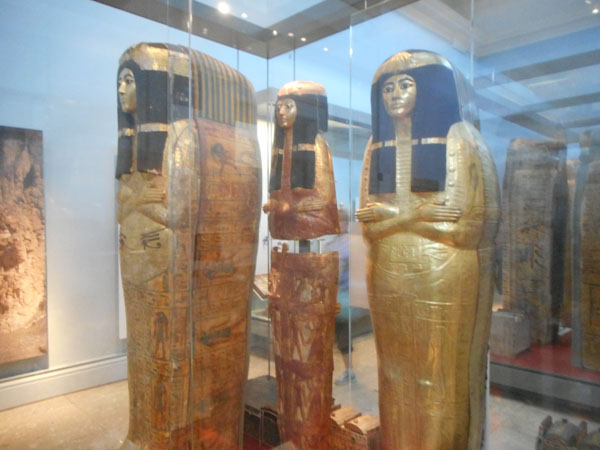
And the Rosetta Stone (right) and a copy we could touch (left) in another room.
Definitely two of Dick's "old friends" in the collection.
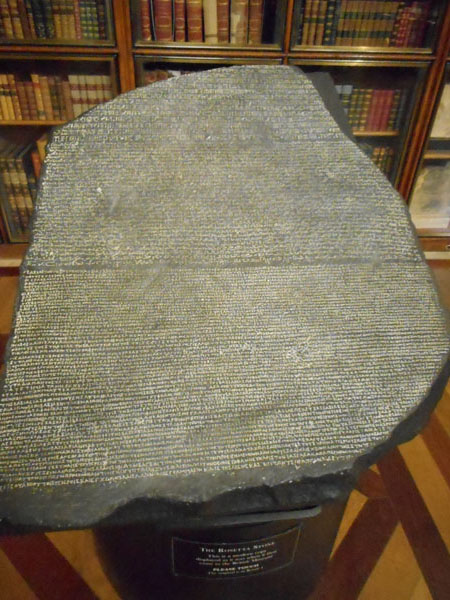
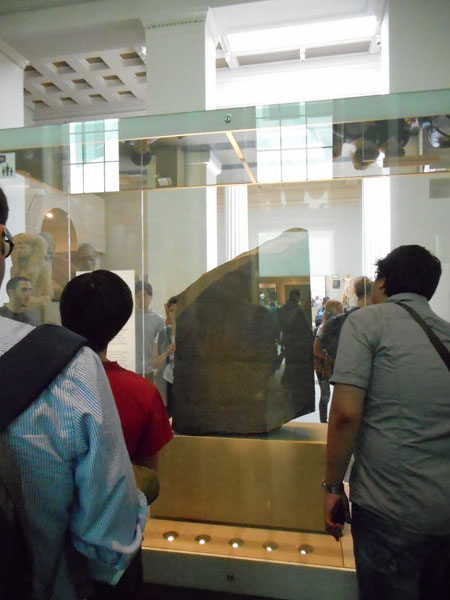
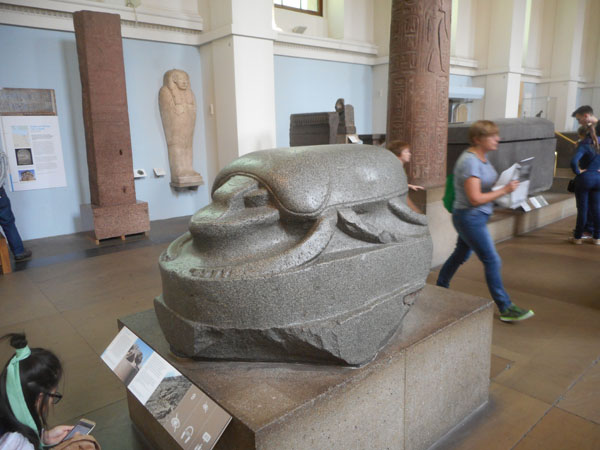
Then we get to the frieze from the Parthenon ... the famous Elgin Marbles.
This is one of Selene's horses, tired from dragging the moon across the sky.
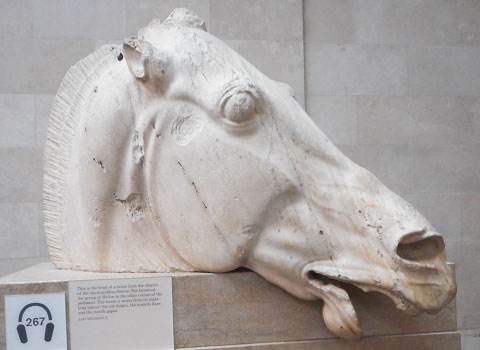
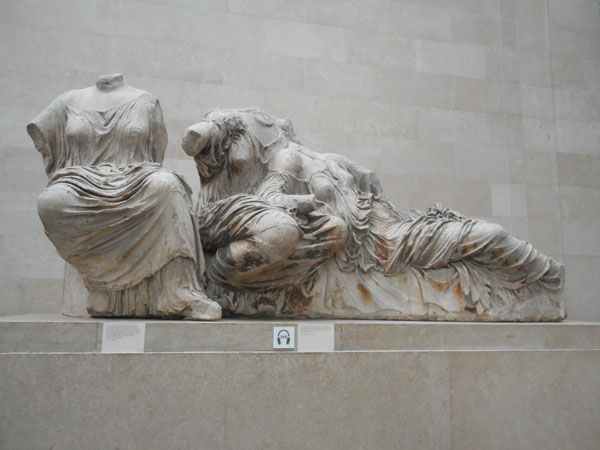
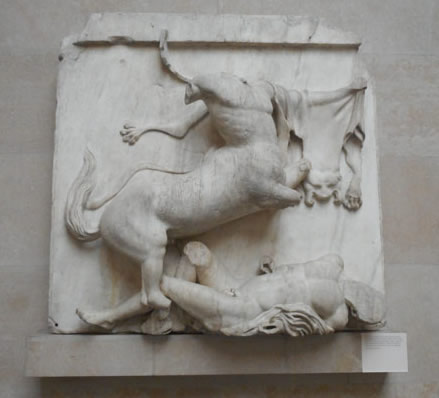
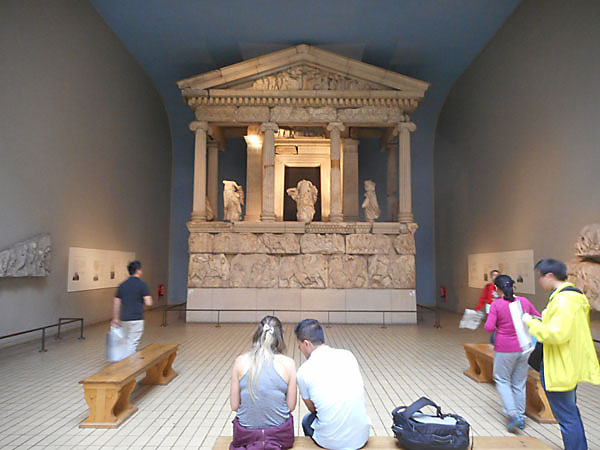
There are also lots of more modern artifacts: these are the few that the photos came out well and still looked interesting
There were many orreys...
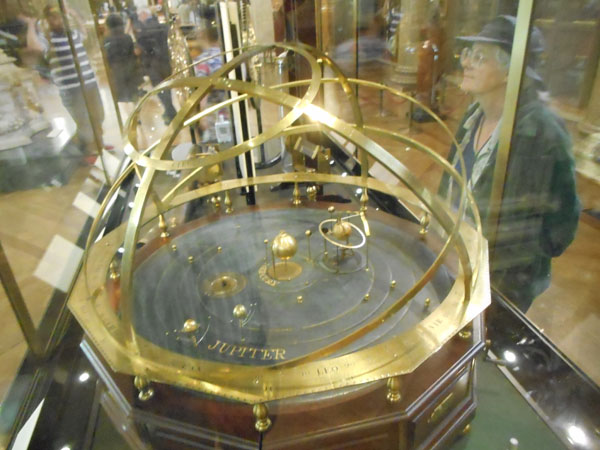
... glass may show up a few times... (this one's Roman)
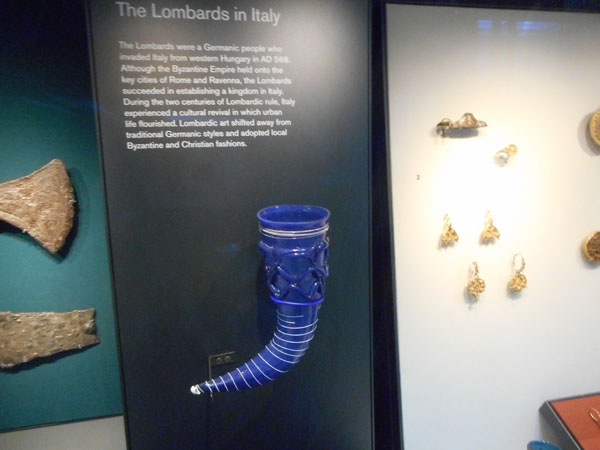
... and tiles ... from Shropshire in the late 1800s
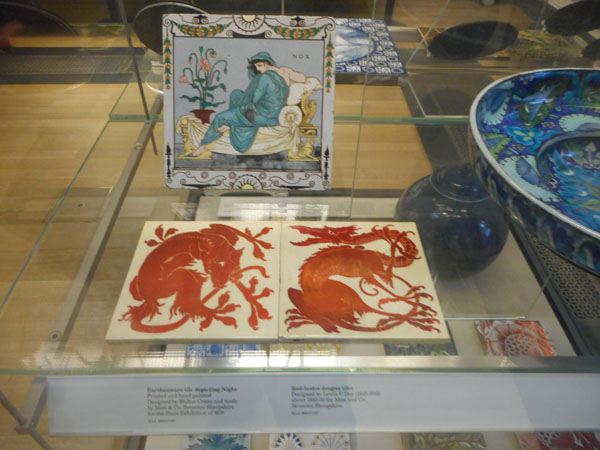
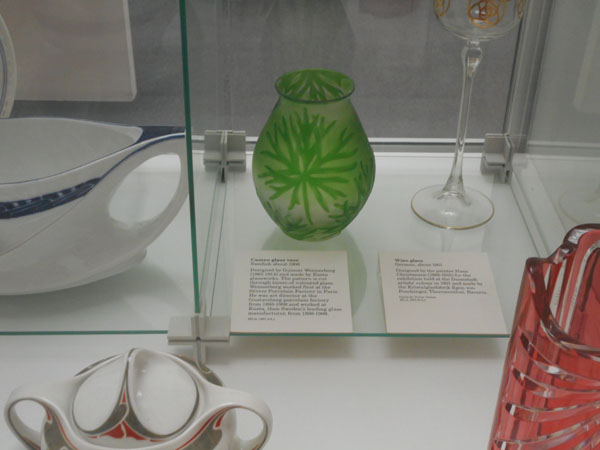
Mori Junko's hand-forged steel Ring of Small Petals (2014)
Formed from thousands of hand-cut nails.
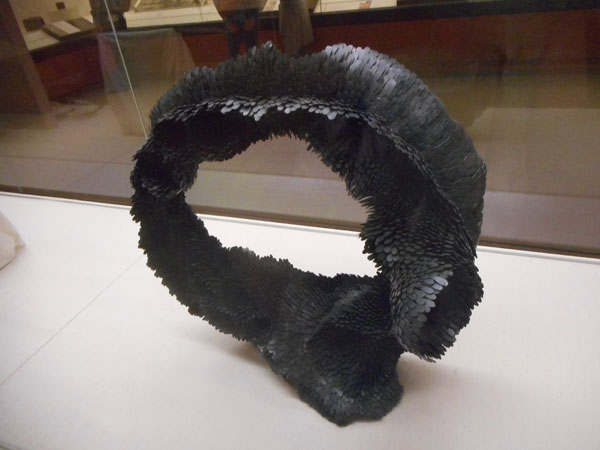
Even a piece from our neck of the woods, er, 'hood
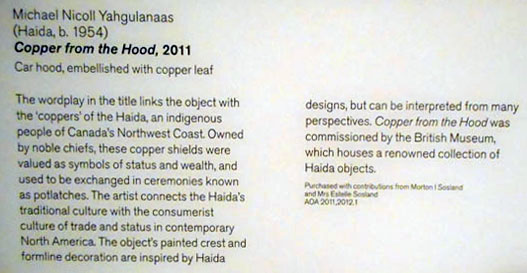
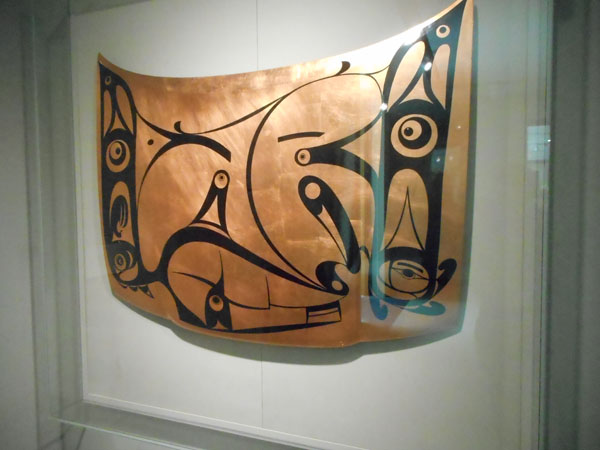
Plus this archeological way of looking at modern life: Cradle to Grave
... the fabric on the left is what a typical British woman takes as medications throughout her life, the fabric on the right is a man's. 14,000 pills ... each.
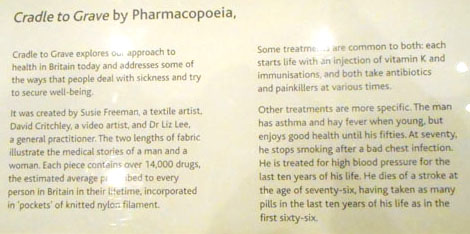
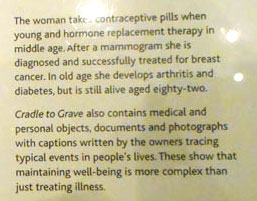
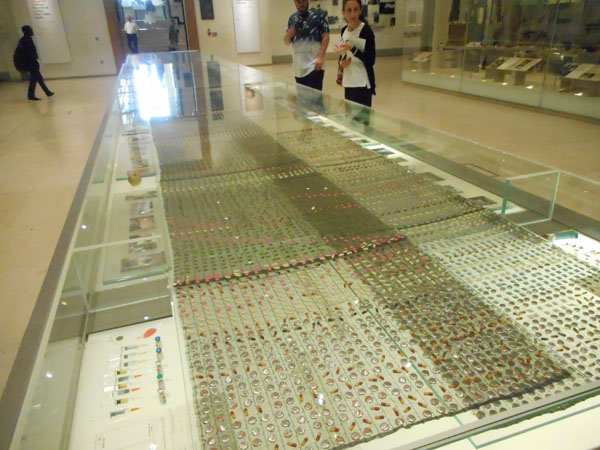
In other sections we got into Asia
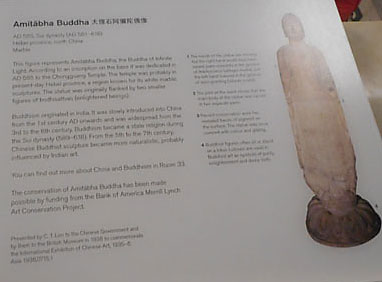
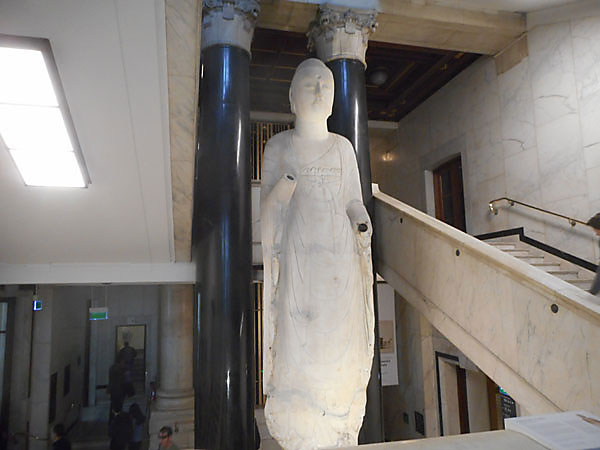
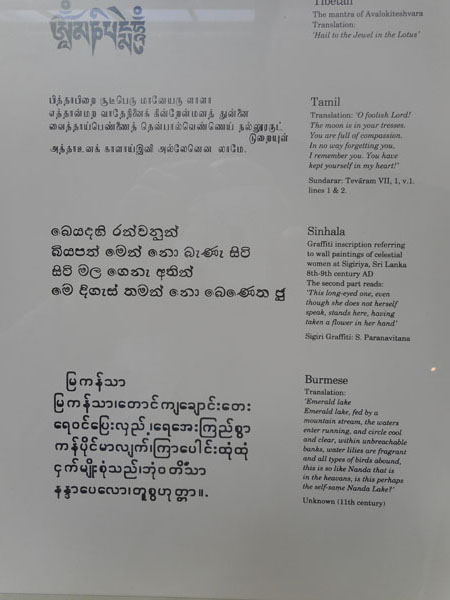
And lots of dragons. In fact all the rest of these are dragons of some sort, parked here so Karen can find them again.
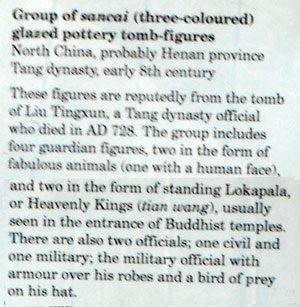
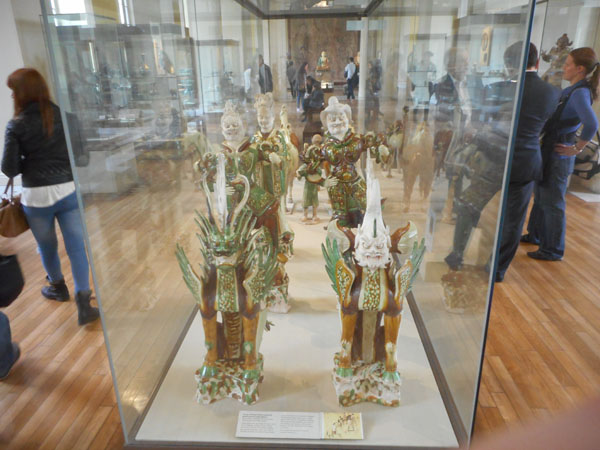
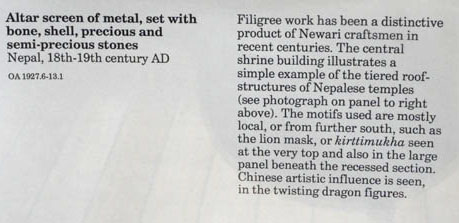
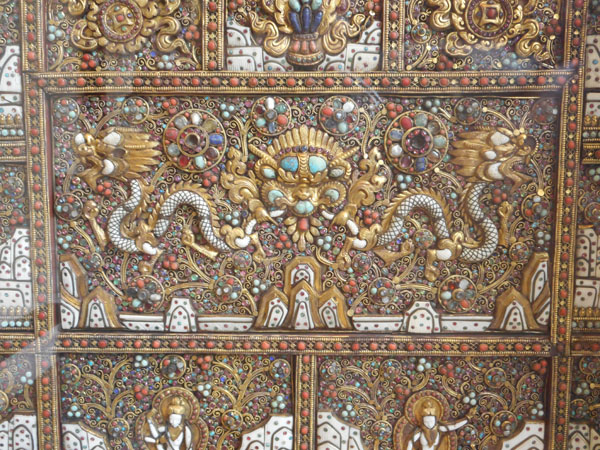
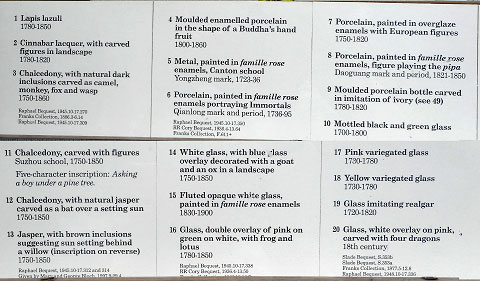
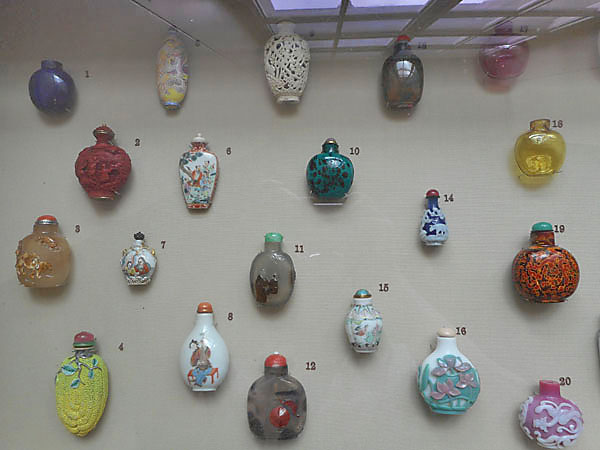
Jiaqing mark, 1796-1820.
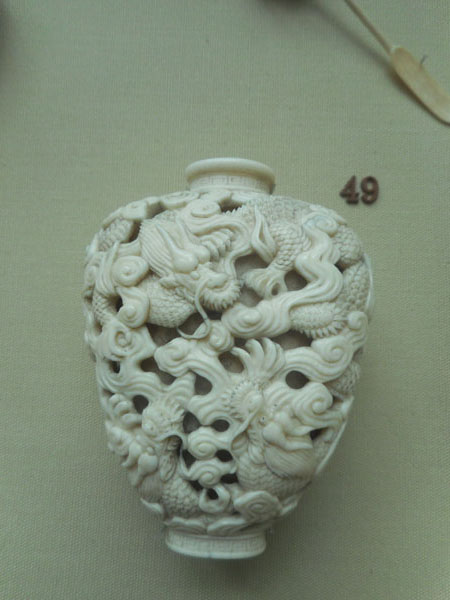
Qianlong mark, 1170-95
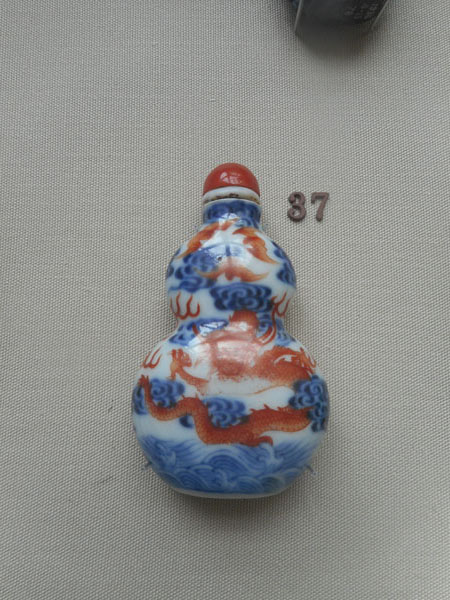
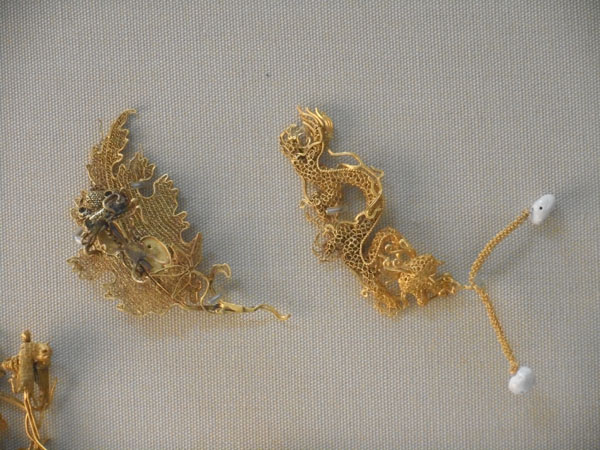
Tibet, 18th-19th century AD
Conch trumpets are part of the monastic orchestra. Some are decorated with textile streamers, while others, such as this example, are elongated to allow for stylised metal pennants to be attached to them.
OA 1992.12-14.16
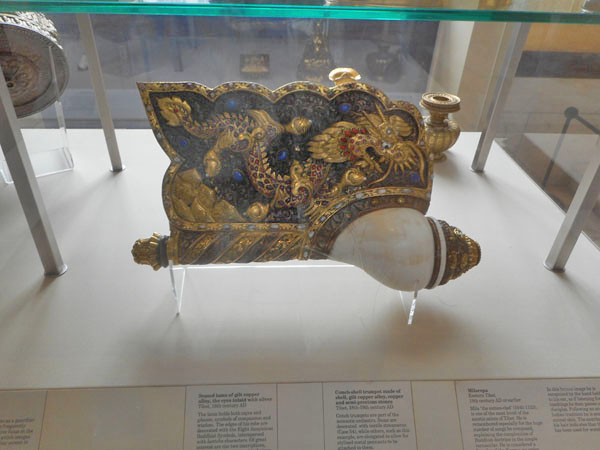
Longquan green-glazed wares
Yuan dynasty
AD 1279-1368
Flask with a dragon among clouds
Stoneware with applied decoration and green glaze
PDF 242
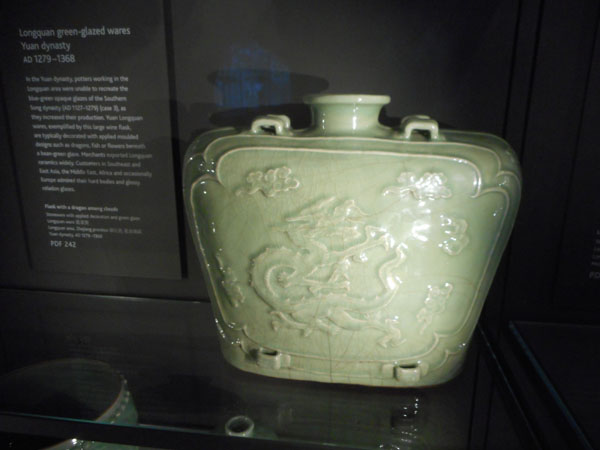
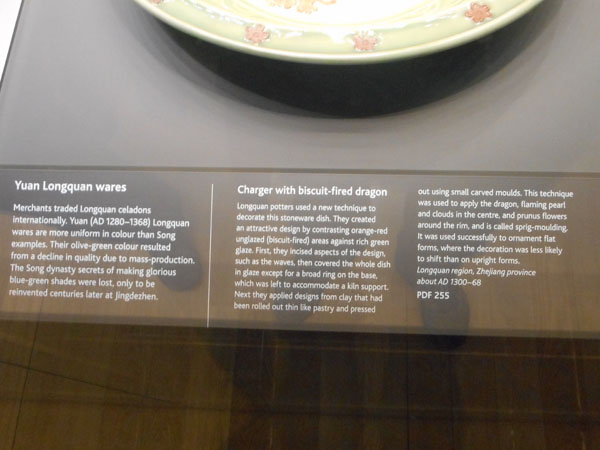
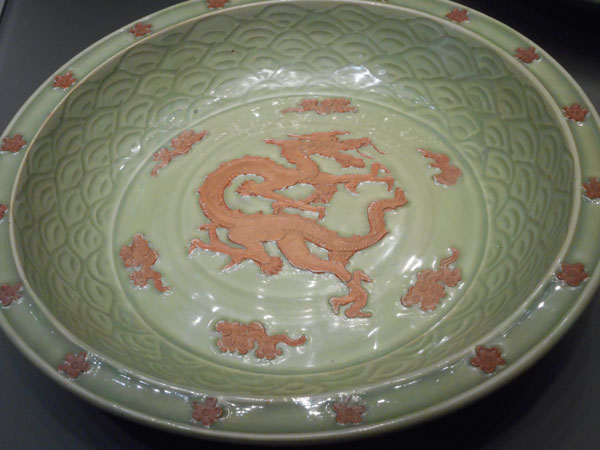
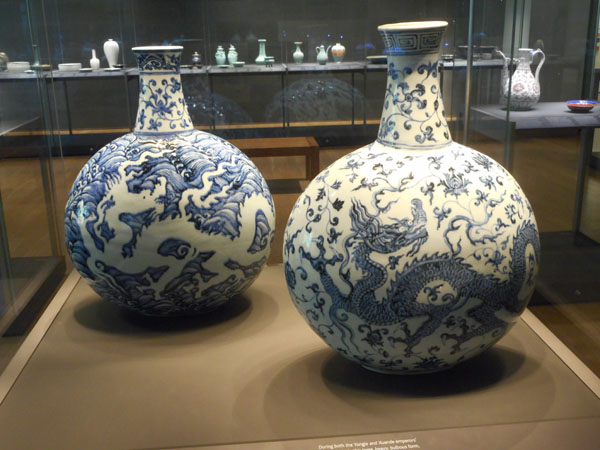
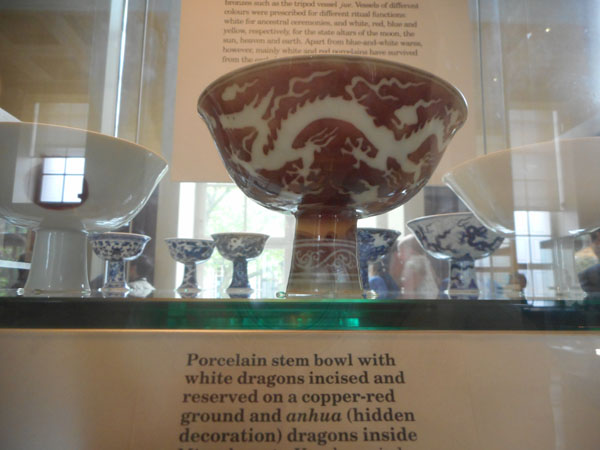
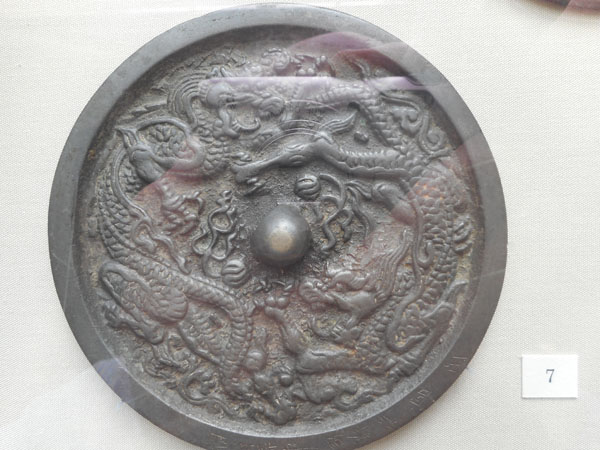
(This is the set Karen wanted to take home)
